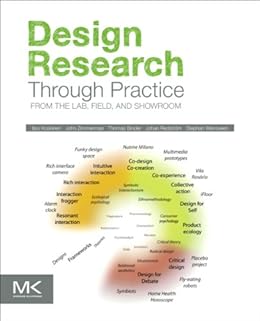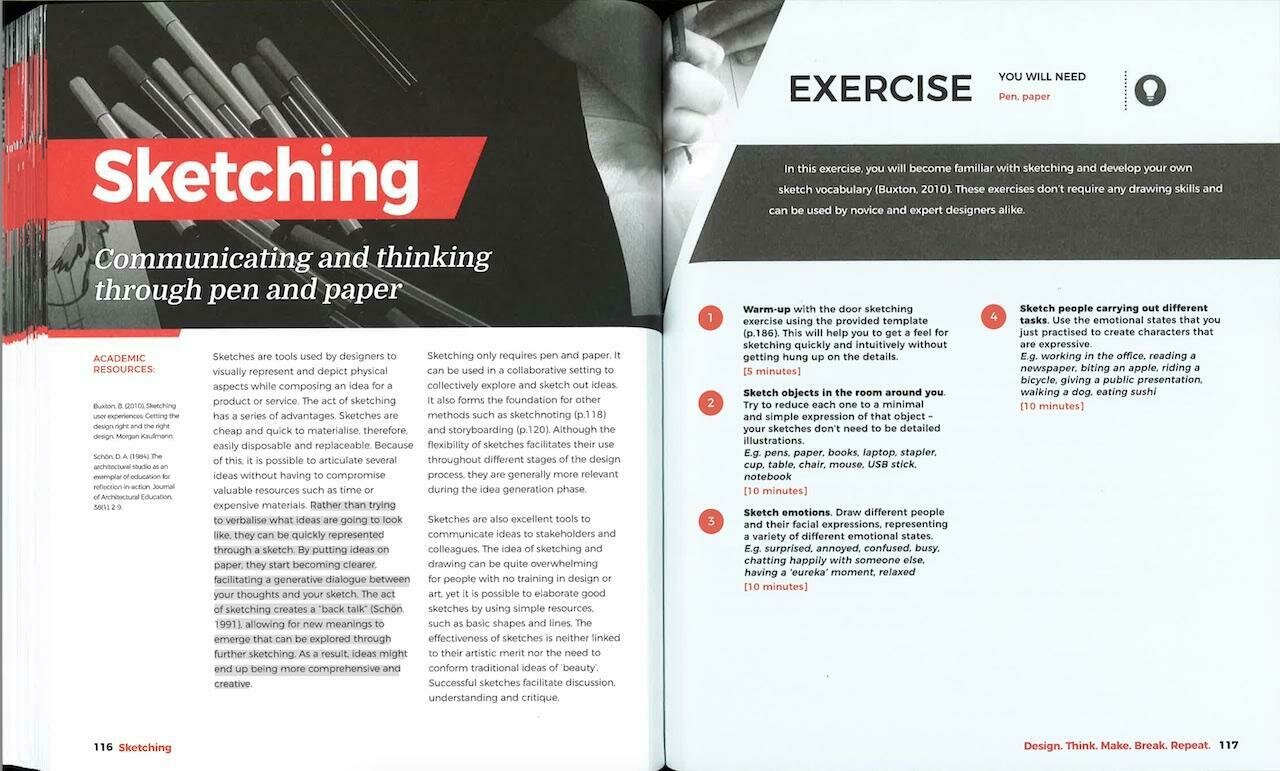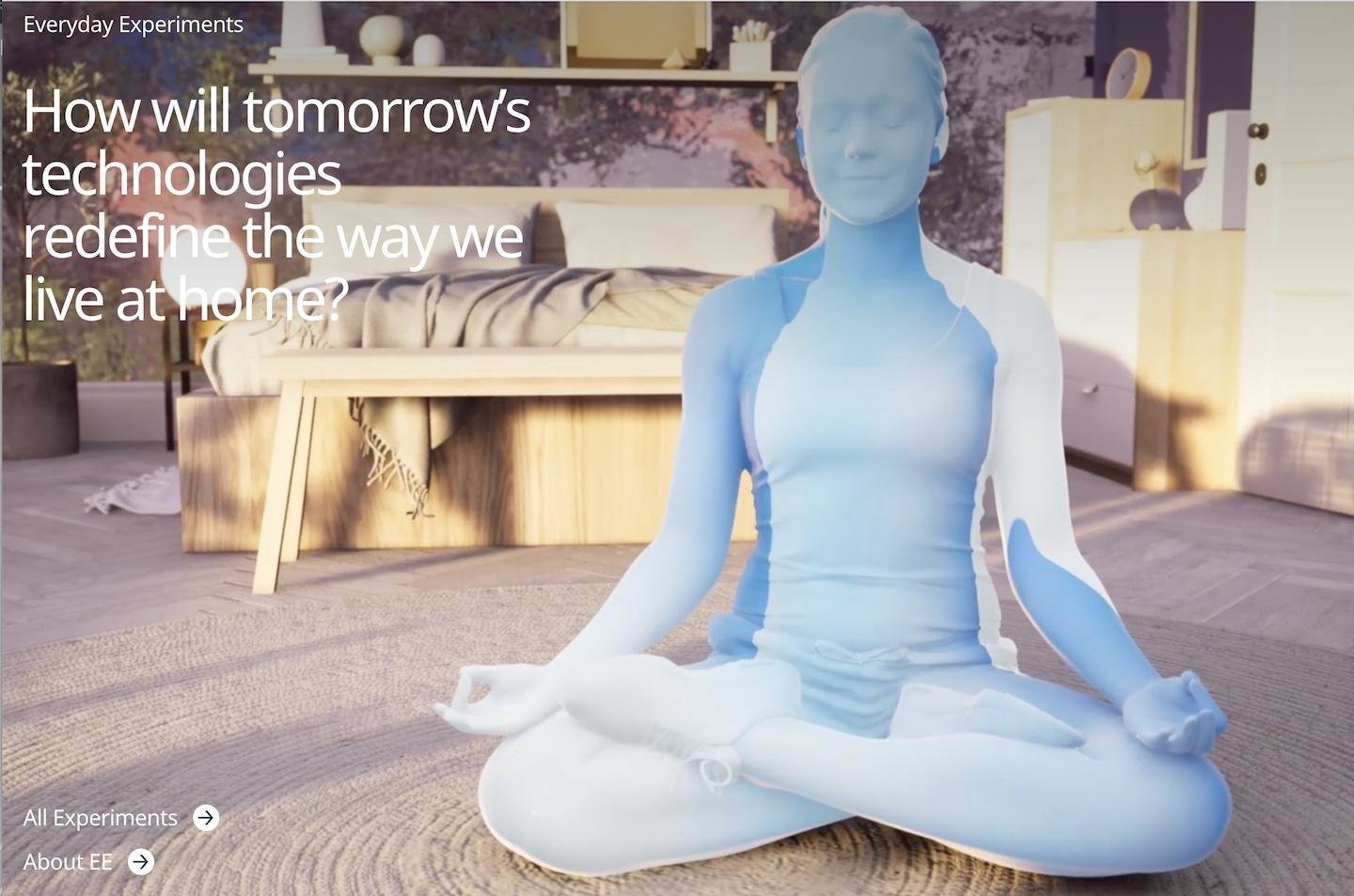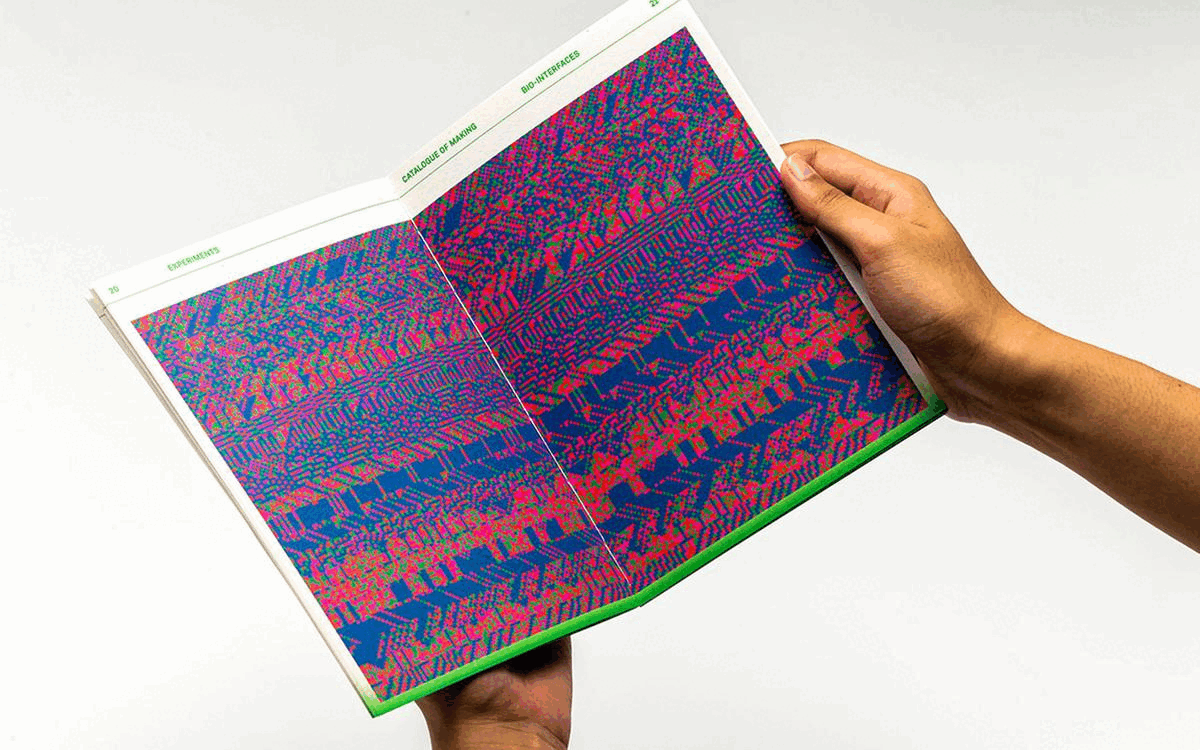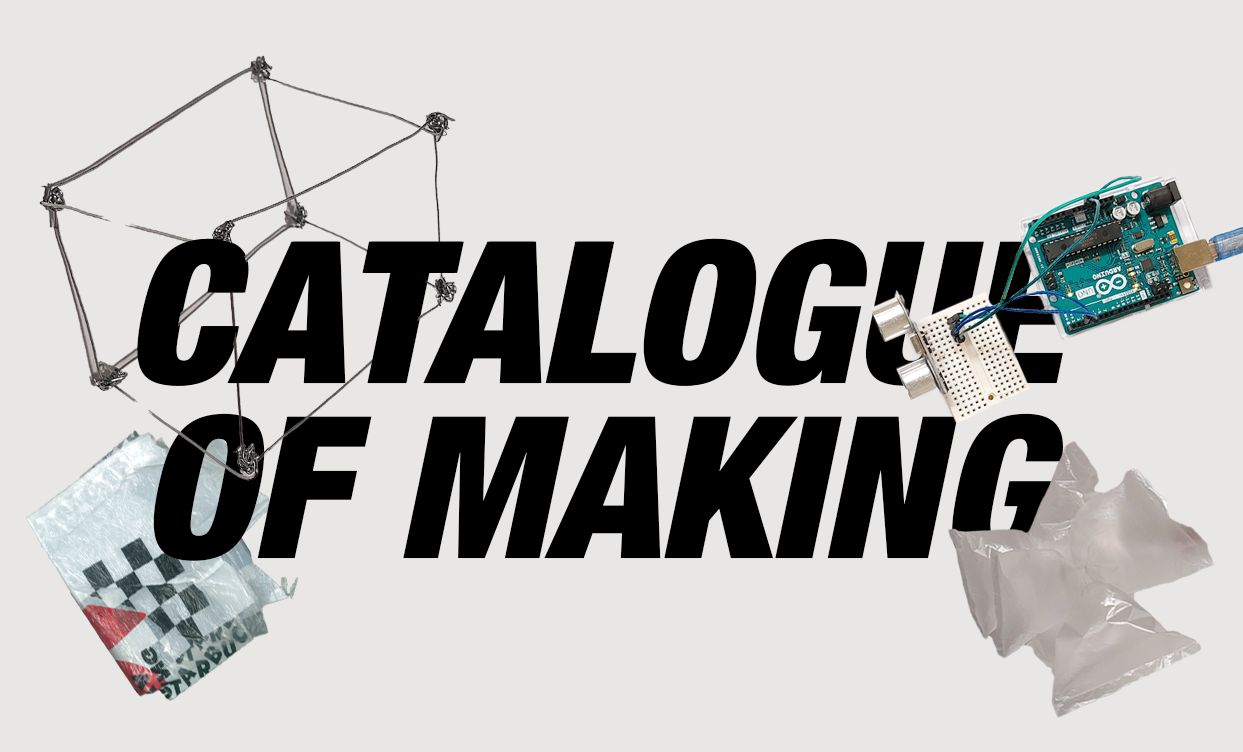Computation in Design Atelier
23–24
B-DC 332
Graduation Project
Computation in Design
Semester 1
Semester 1
24–25
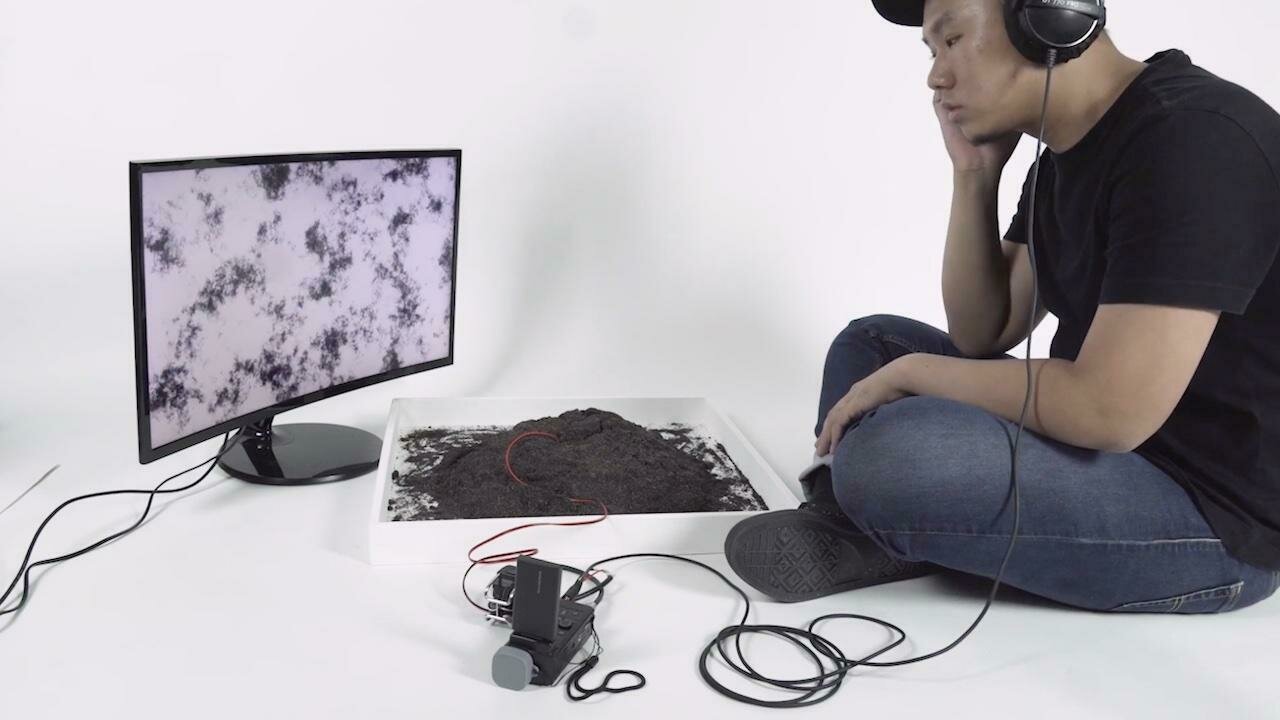
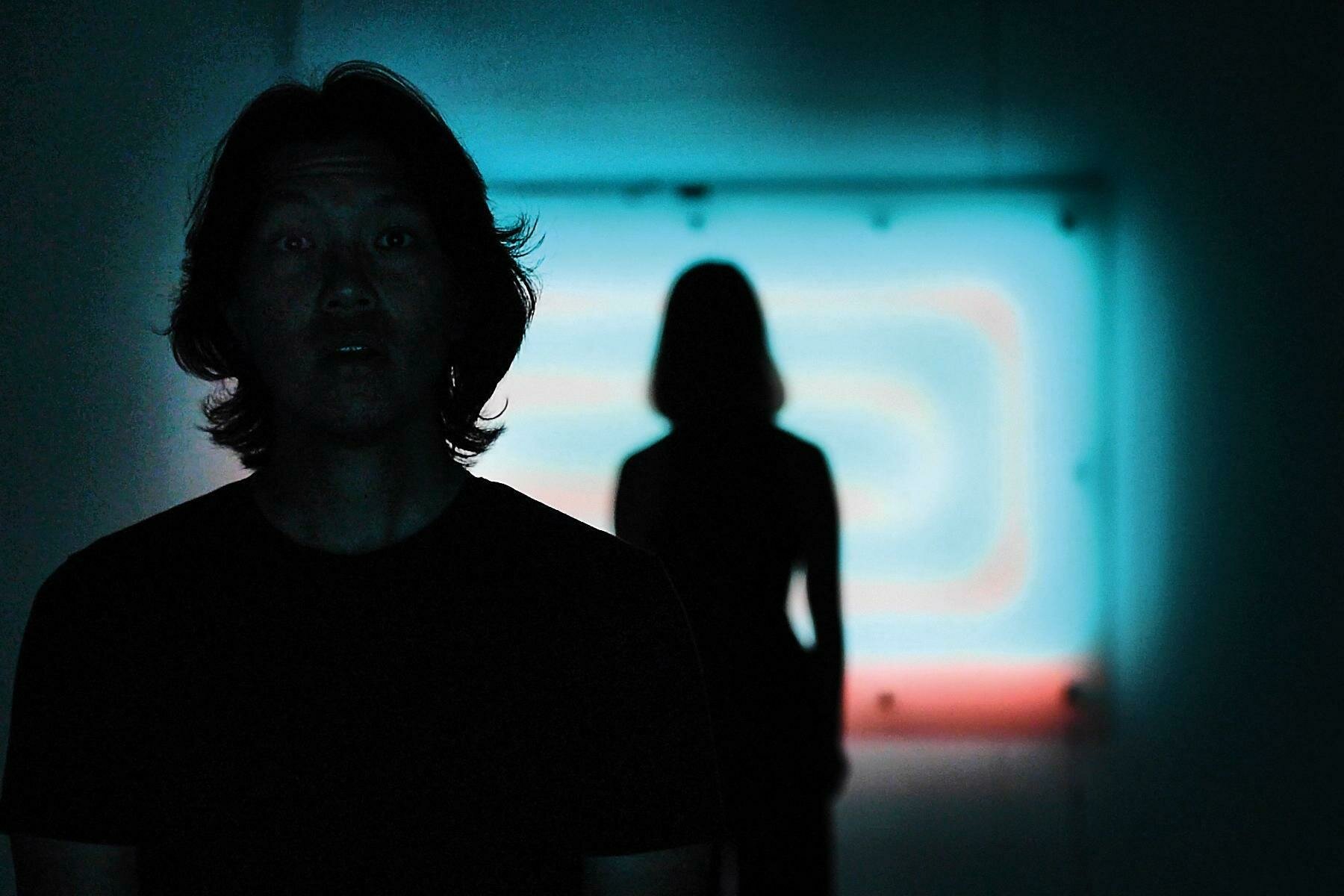
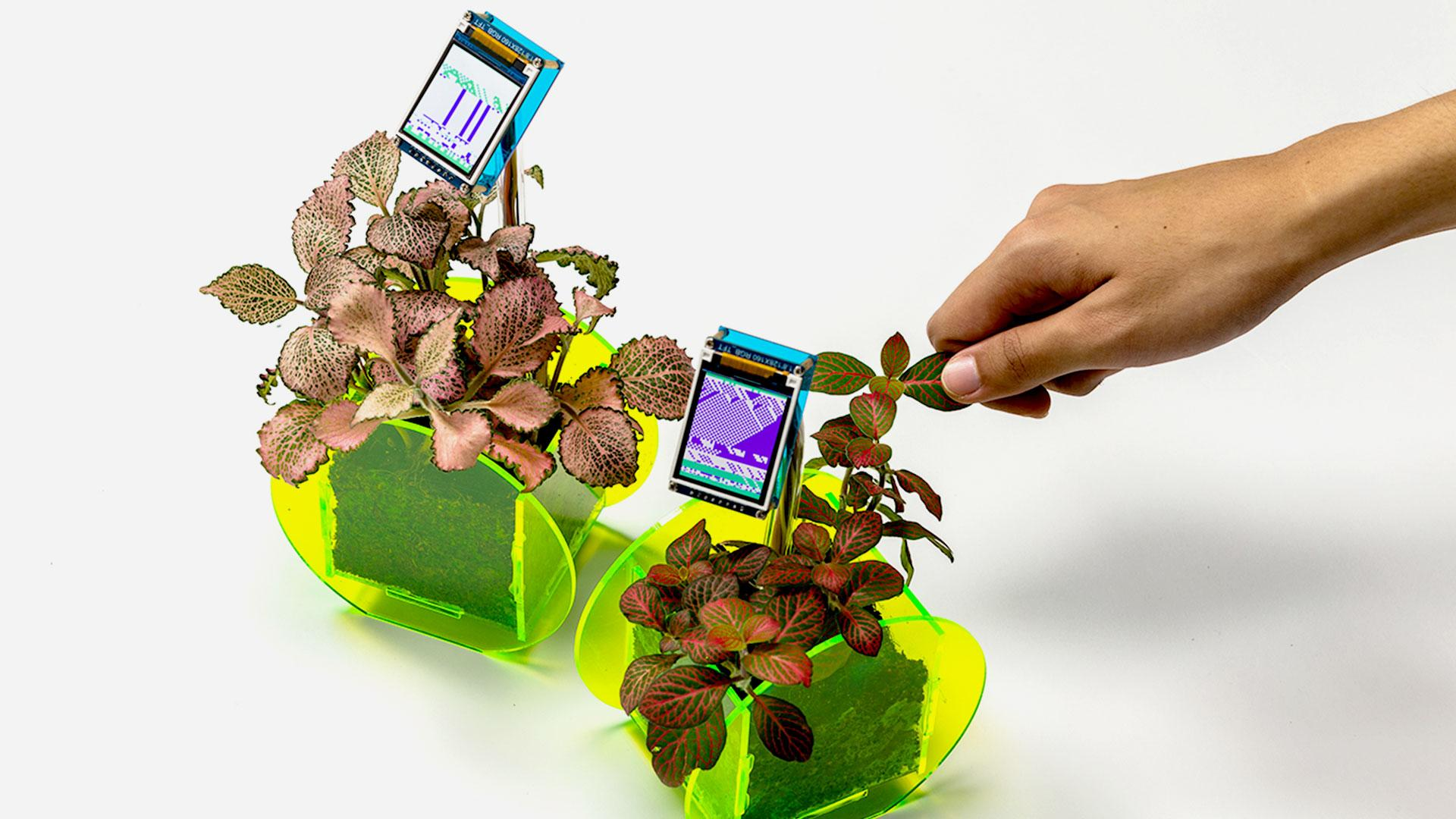
Computation in Design

Semester 1
B-DC 332
Graduation Project
Computation in Design
23–24
Semester 1
Computation in Design
B-DC 332
Graduation Project
Computation in Design
1
2
3
4
5
6
23–24
Semester 1
General atelier details
The Atelier
Approaches
Guides
Samples and references
Connecting
This row of slides addresses the following topics which should guide you in pursuing your final year project and dissertation. Consider the list and slides covered as a starting point for your studies and specialisation.
General atelier details
1.1
B-DC 332
Graduation Project
Computation in Design
This atelier looks at design from the lens of computation. In particular, we take an expansive view of technology and how objects relate to us, to others. The other here may even include things, organisms, machines, spaces, or other species.
Much of the learning is inductive—build and test first, gather evidence and think critically, reflect on your explorations, see what a process, an artefact, affords you as a design researcher, and decide on the next series of steps in an incremental process. Our approach here will oscillate between design practice and design research–writing and making.
23–24
Semester 1
1
1.2
B-DC 332
Graduation Project
Computation in Design
Computation in Design, as it is understood in the atelier, is informed by three areas of research and design: Coding, Sensing, and Making. The atelier takes a practice-based approach that encourages experimentation, exploration, process, and research through design.
It is important to understand that a healthy mix of technical, contextual and aesthetic studies is the basis of the research. Challenges of technical nature or the critical discourse are addressed through iterative processes, discussions and feedback.
23–24
Semester 1
General atelier details
1
1.3
B-DC 332
Graduation Project
Computation in Design
23–24
Semester 1
Coding addresses the aspect of applying computation to creative practices, which in this case is particularly relevant to the field of design communication. Coding is seen here as a technique, a tool, a playground and a language to communicate and interact with and through machines.
Coding
Sensing here refers to sensory experiences as well as sense making and sensing with our human senses or the sensors of machines. Furthermore, sensing here goes hand in hand with data acquisition, analysis, visualisation and expression when processed computationally.
Sensing
Making is understood as a hands-on approach and collaborative group work where members of a group share knowledge, learning and skills. Furthermore, one should be aware of what is being made and think critically about the context in which the making takes place and has an impact.
Making
Generative Systems, creative coding, visual communication, algorithmic behaviours, machine learning, experiences
Interaction, interfaces, sensors, data, physical computing
Tools, materials, discourse, prototypes, fabrication, immersion, expression, creative technology
General atelier details
1
1.4
B-DC 332
Graduation Project
Computation in Design
Digital Research Repository
Research Proposal Outline
Dissertation
Graduation Project
The Digital Research Repository will start with are.na to facilitate the process of collecting and organising research materials. You will have to curate, present, and design the repository into a webpage.
A document that will outline the essence and structure of your dissertation. With the finalisation of your research proposal outline you can move forward to work on your dissertation.
After your research proposal has been submitted, you will continue implementing your proposal which will then become your dissertation, refer to detailed briefing by Vikas.
Your practical work, which you will start from the beginning of semester 1, so that in the second half of semester 2 you will have a strong foundation for final implementation
Creative Process Journal
Uniformity for CPJ format, a website from scratch, a Google Docs, or a printed and designed publication.
Deliverables
Portfolio and Design Primer
The Portfolio contains your semester 1 Body of Work and the Design Primer. The Design Primer should be understood as a tentative proposal for the Graduation Project.
mid sem 2
end sem 2
mid sem 1
23–24
Semester 1
end sem 1
General atelier details
1
end sem 1 and sem 2
mid sem 1
The Atelier
23–24
B-DC 332
Graduation Project
Computation in Design
Semester 1

Josef Albers’s Preliminary Course at the Bauhaus, 1928–9
2
The Atelier
2.1
B-DC 332
Graduation Project
Computation in Design
Students should ideally go back and forth between their dissertation and their practice. Both should be done in tandem. If the dissertation is done before engaging into practice, the practice merely becomes the ‘packaging’ of the research. New knowledge should emerge from practice as well. The design practice can be cross-fertilised with disciplines such as psychology, sociology, political science, communication studies, philosophy or literary studies, as well as performance arts, contemporary arts, music, or other design disciplines – but the core of the research must be anchored in design.
To help students select their design research methods, it is relevant to position the design research in time, for example:
past historical approach, archival search
present social science approach, human-centred approach, x-centred approach, applied
future speculative approach, design fiction, tech futures, foresight
Design Research
23–24
Semester 1
2
The Atelier
B-DC 332
Graduation Project
Computation in Design
Practice
Writing
making
doing
understanding
contributing
process & act
activities & engagement
context
value
lived experience
knowledge
adapted from Gideon Kong
Design Research
2.2
23–24
Semester 1
2
impact
impact
The Atelier
Computation
1. The use or operation of a computer
2. The act or process of computing or calculating something
Computation is any type of calculation that includes both arithmetic and non-arithmetical steps and follows a well-defined model, for example an algorithm.
Computational Thinking
In education, computational thinking is a set of problem-solving methods that involve expressing problems and their solutions in ways that a computer could execute.
Computational thinking is a process in which you creatively apply to a problem-solving cycle to develop and test solutions with the help of computers.
Computational Design
John Maeda defines three kinds of design as a working model to build upon: classical design, which pertains to the design of objects we use in the physical world, design thinking, which pertains to how organisations learn how to collaborate and innovate using ideation methods, and computational design, which pertains to any kind of creative activity that involves processors, memory, sensors, actuators, and the network.
B-DC 332
Graduation Project
Computation in Design
23–24
Semester 1
2
2.3
The Atelier
B-DC 332
Graduation Project
Computation in Design
Classical Design
Design Thinking, amongst other approaches
Computational Design
Thinking critically about Technology
Use all three kinds of Design
Understand Computation
Actively learning The New
23–24
Semester 1
2
2.3
22–23
23–24
B-DC 332
Graduation Project
Computation in Design
Semester 1

Approaches
3
Approaches
B-DC 332
Graduation Project
Computation in Design
Design researchers carefully investigate human experience and behavior, dream up new ways to spark and distill insight, and inspire teams and clients to address people's needs through bold, optimistic design.
Ideo Design Research link
23–24
Semester 1
3
Generative
Interactive
Discursive
Experimental
Approach and Motivation
Generativity here refers to a design approach that can be regarded as computational, iterative, modular and emergent. By creating and using generative systems, a designed outcome can respond quickly to change and adapt.
An emphasis of your work may be on creating interactive scenarios that can be tested and observed in order to make the designed outcomes experiential for the audience and communicate with them through interactions.
3.1
A discursive approach can be considered a thought catalyst. The designed object’s primary role is no longer utilitarian, aesthetic or commercial but is given form and function so that it can communicate ideas—this is the goal and the measure of success. Rather than tools for living and doing, these are tools for thinking.
An experimental approach can consider unconventional materials, tools, design methods and outcomes. The centre of this approach is exploration. Often this goes in line with topics that look at future scenarios addressing artificial intelligence, climate change, sustainability or bio design.
Casey Reas
Memo Akten
Neri Oxman
Weidi Zhang
Anab Jain
Lauren McCarthy
Stephanie and Bruce Tharp
Taeyoon Choi
Bill Moggridge
Hiroshi Ishii
Joachim Sauter
Rebecca Fiebrink
AIxDesign Community
Biodesigned
Disnovation Collective
xCoAx Conference
Design approach, motivation and focus can be
B-DC 332
Graduation Project
Computation in Design
23–24
Semester 1
3
Sketching
Experimenting
Prototyping
Designed Outcomes
Approach and Action
Sketching is about bringing ideas to life and putting them on paper to better communicate the nature, relationships and flow of ideas and processes through simple but meaningful mapping and diagrams. This approach is designed to help both students and their supervisors have constructive and productive discussions, critiques and feedback sessions to move the enquiry and exploration of a project forward step by step.
An experiment in the broader sense may refer to practicing by trial and error, trying and testing the unknown, and learning through a process of approximation and correction until a satisfactory state is reached. This state may mean that a particular problem has been solved, or that a state of beauty has been achieved, or some other form of successful (or possibly unsuccessful) result.
3.2
The term prototype, along with the verb prototyping, has become popular in design research. Originally, the term indicated a precursor of a mass-produced product, which shares its material qualities, but will undergo testing and development during implementation. In design research, the term prototype may also be used for all kinds of product-like physical constructions.
The outputs designed in this atelier are a collection of sketches, experiments and prototypes that are created during the course of a study. These outcomes can be stand-alone, such as a series of artefacts, an installation, a screen-based application and more, or they can be the material for a publication that documents the process and the gathered findings and outcomes in a printed or digital document.
Phases your work goes through
B-DC 332
Graduation Project
Computation in Design
23–24
Semester 1
3
Approach and supervision
Research
Project
Dissertation
informs
informs
individual and group consultations
workshops, sketching, experimenting, prototyping
lab sessions to address technical challenges
case studies
3.3
be curious, organised, considerate, consistent, patient
experiment, make, analyse, observe, reflect, test, document, iterate, write, read, explore
B-DC 332
Graduation Project
Computation in Design
23–24
Semester 1
3
Approach dissertation and project
Dissertation
Project
while managing time adequately and effectively.
Most importantly for your dissertation will be the Discussion section and for your project the Design Process, let's take a look at some options in the following.
3.4
How to approach your
B-DC 332
Graduation Project
Computation in Design
23–24
Semester 1
3
Q = K + P + T
The quality Q of your work is the sum of Knowledge K, practice P and talent T.
Keep in mind
Approaches
Design Thinking
Double Diamond
Research through Design
Four-fields framework
Design Fiction
There are various approaches, frameworks, models, methods that you will come across which should not confuse but help and support your work. Ideally follow one after you have carefully considered your options, you will notice that there are overlaps.
1
2
3
4
5
Case Studies
Critical Journal
Interviews
1
2
3
The discussion section of your dissertation should make use of one of the following 3 frameworks
Dissertation, specifically the Discussion section
Design Process
3.4.1
B-DC 332
Graduation Project
Computation in Design
23–24
Semester 1
3
Approaches
Case Studies
Critical Journal
Interviews
1
2
3
3.4.2
B-DC 332
Graduation Project
Computation in Design
23–24
Semester 1
3
The discussion section of your dissertation should make use of one of the suggested 3 frameworks. Through workshops in week 3 and 5 you will be guided to better understand the approach that can be taken for each of the 3 frameworks–afterwards you opt for one.
Provide evidence, insights and knowledge through the analysis, discussion, synthesis, reflection of case studies
Provide evidence, insights and knowledge through the exploration, discussion, reflection, replicability of your own practical graduation project work
Provide evidence, insights and knowledge through interviews, collection of qualitative and quantitative data, discussions, reflection
Discussion section
How to approach your Dissertation's
Approaches
Design Thinking
Double Diamond
Research through Design
Four-fields framework
Futures
1
2
3
4
5
3.5
B-DC 332
Graduation Project
Computation in Design
23–24
Semester 1
3
The design process in your research and project proposal may be guided by one of the approaches on the right, which differ from the dissertation frameworks presented in the previous slide
if an approach not listed above suits your work better, lets discuss.
Design Process
How to approach your Project's
Approaches
Design Thinking
Double Diamond
Research through Design
Four-fields framework
Systems Thinking
Futures
1
2
3
4
5
6
B-DC 332
Graduation Project
Computation in Design
23–24
Semester 1
3
Design thinking is commonly described as a framework, method, or approach rather than a strict methodology. While the terminology can vary, design thinking is generally considered a problem-solving and innovation approach that emphasizes empathy, user-centeredness, and iterative prototyping.
Design thinking is often characterized by its iterative nature, where feedback and insights are continually incorporated into the design process. It typically consists of several stages, including problem definition, research, ideation, prototyping, testing, and implementation.
3.5.1
empathise
define
ideate
prototype
test
Design Thinking is an iterative and non-linear process that contains five phases: empathise, define, ideate, prototype and test.
Approaching project and research through the
Design Thinking
Approaches
3
3.5.1
B-DC 332
Graduation Project
Computation in Design
23–24
Semester 1
empathise
define
ideate
prototype
test
Approaching project and research through the
Design Thinking
Approaches
3
3.5.1
B-DC 332
Graduation Project
Computation in Design
23–24
Semester 1
Approaches
Design Thinking
Double Diamond
Research through Design
Four-fields framework
Systems Thinking
Futures
1
2
3
4
5
6
B-DC 332
Graduation Project
Computation in Design
23–24
Semester 1
3
Throughout the Double Diamond model, divergent and convergent thinking play crucial roles. The discovery and development stages involve divergent thinking, exploring possibilities, and expanding knowledge. On the other hand, the definition and delivery stages involve convergent thinking, making choices, and consolidating research findings into coherent outcomes.
The Double Diamond had antecedents in the work of John Dewey, Osborn & Parnes, Béla Bánáthy, Herbert Simon, Donald Schön and many others, who all made major contributions to problem-solving theories and the practice of design.
3.5.2
discover
define
deliver
develop
challenge
outcome
Problem definition and future insights
insight into the problem
the area to focus upon
Problem
potential solutions
solutions that work
Solution
Approaching project and research through the
Double Diamond Model
Approaches
3
3.5.2
B-DC 332
Graduation Project
Computation in Design
23–24
Semester 1
Approaches
Design Thinking
Double Diamond
Research through Design
Four-fields framework
Systems Thinking
Futures
1
2
3
4
5
6
B-DC 332
Graduation Project
Computation in Design
23–24
Semester 1
3
Research through design is to use design as a research method as an approach for learning about things other than design, gaining access to knowledge that would have been impossible otherwise. A modern example of research through design is user experience studies, where people engage with new inventions. Certain insights on new products are impossible to obtain without having the actual design at hand. Showing something to people, rather than just telling them about it, leads to more relevant feedback.
The same applies to the designer's experience. As our sketches and prototypes develop towards the final form, so does our grasp on the consequences of creative decisions. As Bill Moggridge put it: "The only way to experience an experience is to experience it."
Research through Design is a way of producing "research" that comes with opportunities to practise the craft of design. It's a way of expressing and materialising knowledge and insights, acquired based on hands-on design work, packaged into a scientific format.
3.5.3
3 options for what "design research" can mean are introduced in an article titled Research in Art and Design, published in 1993 by Sir Christopher Frayling. He proposes three categories of design research:
1. Research for Design
2. Research into Design
3. Research through Design
From: The Three Faces of Design Research link, do listen to the podcast version of the linked article.
Approaching project and research through
Research through Design
Approaches
3
3.5.3
B-DC 332
Graduation Project
Computation in Design
23–24
Semester 1
Research through Design
Encourages and enables
In Research through Design (RtD), researchers generate new knowledge by understanding the current state and then suggesting an improved future state in the form of a design.
It involves deep reflection in iteratively understanding the people, problem, and context around a situation that researchers feel they can improve.
Research through Design is a way of producing research that comes with opportunities to practice the craft of design. It's a way of expressing and materialising knowledge and insights, acquired based on hands-on design work, packaged into a scientific format.
Research through design is to use design as a research method as an approach for learning about things other than design, gaining access to knowledge that would have been impossible otherwise. A modern example of research through design is user experience studies, where people engage with new inventions.
Research through Design Conference (general, 2019, experiences)
Design Disciplin blog and podcast link
→ Collaboration with other disciplines and peers
→ Iterative process of making, testing, refining
→ Aligning practice with research and writing
→ to go back and forth between research, design practice and dissertation
→ Research contribution through practice
3.5.3
B-DC 332
Graduation Project
Computation in Design
23–24
Semester 1
Design Practice
Dissertation
Research
Research through Design Conference (general, 2019, experiences)
Design Disciplin blog and podcast link
Approaching project and research through
Research through Design
Encourages and enables
→ Collaboration with other disciplines and peers
→ Iterative process of making, testing, refining
→ Aligning practice with research and writing
→ to go back and forth between research, design practice and dissertation
→ Research contribution through practice
Approaches
3
3.5.3
B-DC 332
Graduation Project
Computation in Design
23–24
Semester 1
Doing Research
Doing Design
Artefact
Prototype
Knowledge
Work done with the intention to produce knowledge for use by others
Work done with the intention to produce a feasible solution to improve a given situation
Object (often material) created during a design process
Artefact used in research that can realise the (inter)action that is studied
Understanding about the world that can be communicated to others
Question, hypothesis, theory, investigation, topic, interpretation, generalization, validation, discovery
Idea and concept generation, synthesis, development, integration, discovery, prototyping, invention, implementation, realization
Sketch, blueprint, brief, specifications, vision, proposal, recommendation, business plan, exhibit
Implementation, realization, test, exploration, solution, proof of concept, construction
Theory, book, publication, expertise
Design Practice
The ways in which design professionals conduct their work
Brief, contract, client, stakeholder, studio
Working Definition
Key associated Terms
Approaching project and research through
Research through Design
Approaches
3
3.5.3
B-DC 332
Graduation Project
Computation in Design
23–24
Semester 1
Approaches
Design Thinking
Double Diamond
Research through Design
Four-fields framework
Systems Thinking
Futures
1
2
3
4
5
6
B-DC 332
Graduation Project
Computation in Design
23–24
Semester 1
3
Rather than focusing on what gets designed or how things are designed, the four-field framework focuses on why they are designed.
3.5.4
Approaching project and research through the
Four-Fields Framework
Design is a bit of a mess and could benefit from a broad organising framework. The dominant paradigm of commercial design has resisted incorporating other modes of design, despite increased prevalence. We posit a four-field framework that emphasises primary agendas that can assist in decision-making and communication.
Rather than focusing on what gets designed or how things are designed, the four-field framework focuses on why they are designed.
1. A commercial design agenda centres on profit
2. A responsible design agenda centres on serving the underserved
3. An experimental design agenda centres on exploration
4. A discursive design agenda centres on audience reflection
Elliott Montgomery on the Four Field Framework in this talk
Approaches
3
3.5.4
B-DC 332
Graduation Project
Computation in Design
23–24
Semester 1
Approaches
Design Thinking
Double Diamond
Research through Design
Four-fields framework
Systems Thinking
Futures
1
2
3
4
5
6
B-DC 332
Graduation Project
Computation in Design
23–24
Semester 1
3
TBD
3.5.5
Approaches
Design Thinking
Double Diamond
Research through Design
Four-fields framework
Systems Thinking
Futures
1
2
3
4
5
6
B-DC 332
Graduation Project
Computation in Design
23–24
Semester 1
3
Design futures explore potential scenarios and visions of the future to inform and inspire innovative design solutions. Employing speculative thinking, creative technology, and foresight methodologies, designers anticipate emerging trends, challenges, and opportunities to craft forward-looking, sustainable, and user-centric designs that shape a positive and transformative future.
3.5.6
Approaching project and research through Futures
Approaches
3
3.5.6
Speculative Design
Speculative design (also see critical design), is an innovative and imaginative approach to design that explores possible futures and alternative realities. It is not concerned with practical problem-solving like traditional design but rather seeks to provoke thought, challenge assumptions, and stimulate discussions about social, cultural, ethical, and technological issues.
Design Fiction
Design fiction involves using storytelling and speculative narratives to explore potential futures and provoke discussions and reflections on the implications of emerging technologies, social changes, or design concepts. It blends elements of design, fiction, and speculation to create thought-provoking scenarios that challenge assumptions and stimulate critical thinking.
Foresight
Foresight, or future thinking, involves systematic exploration and analysis of future trends, drivers of change, and potential scenarios. It aims to anticipate and prepare for future possibilities, helping designers make informed decisions and strategic choices.
B-DC 332
Graduation Project
Computation in Design
23–24
Semester 1
Approaching project and research through Futures
Approaches
3
3.5.6
B-DC 332
Graduation Project
Computation in Design
23–24
Semester 1
Approaching project and research through Futures
Approaches
3
029 Solarpunk
034 Genevieve Bell, Ao Faha Ftse
039 Simone Rebaudengo
029 Dunne & Raby
028 Radha Mistry, Foresight
Near Future Laboratory Podcast, Julian Bleecker
040 Speculative Design with Kontrapunkt
041 Design Fiction with Elliott P. Montgomery
052 Speculative Futures as a Design Approach
055 The Manual of Design Fiction with Nicolas Nova
070 Juliana Schneider, More.Than.Human-Centered Design
072 Che-Wei Wang CW&T
3.5.6

B-DC 332
Graduation Project
Computation in Design
23–24
Semester 1
23–24
B-DC 332
Graduation Project
Computation in Design
Semester 1
Why
How
What
1 What
2 How
3 Why
Why 1
How 2
What 3
outside to inside?
inside to outside?
Approaches
3
B-DC 332
Graduation Project
Computation in Design
Semester 1
23–24
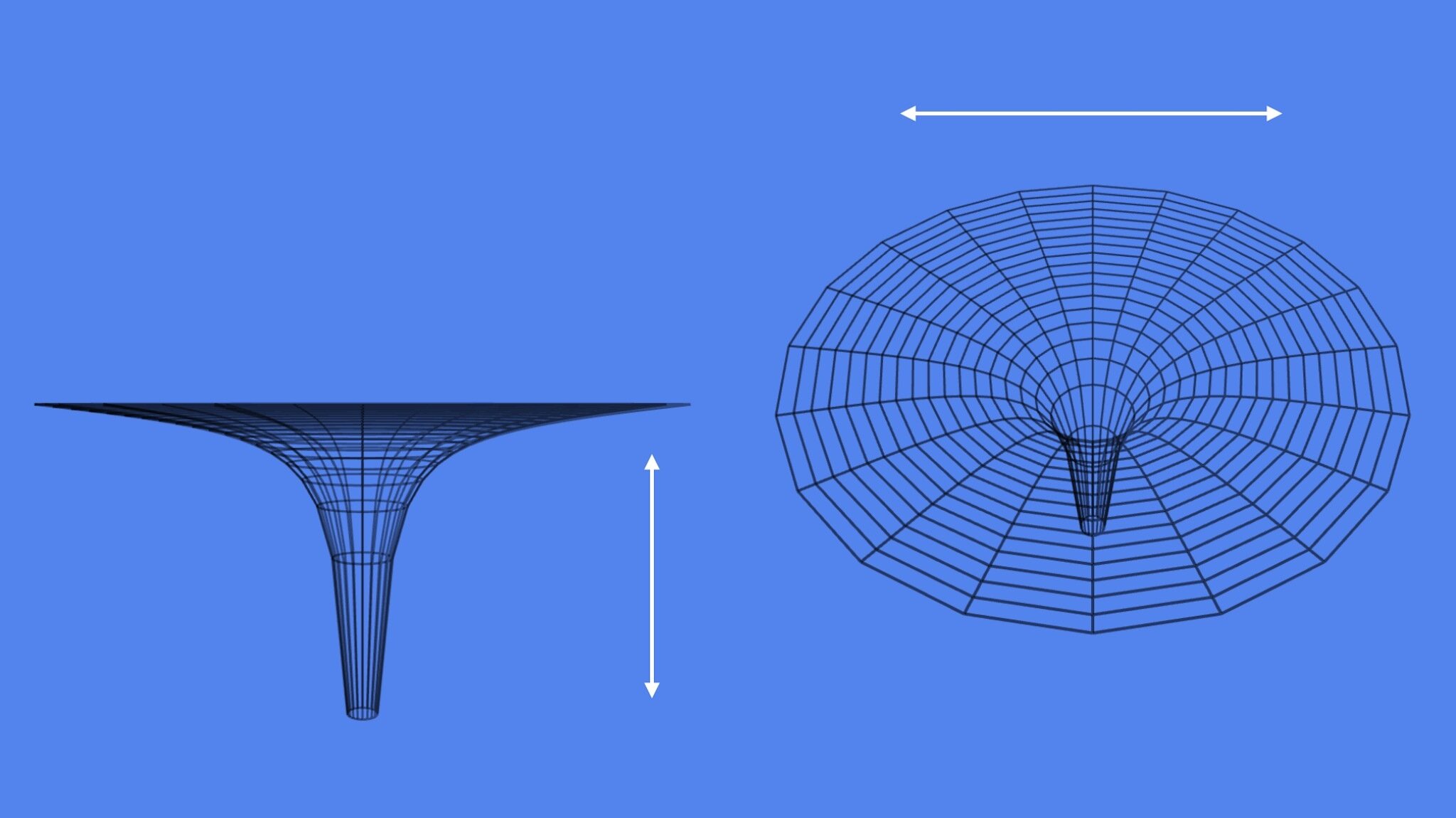

Guides
4
B-DC 332
Graduation Project
Computation in Design
23–24
Semester 1
Guides
1
2
3
4
5
Readings
Writing
Technologies
Artefacts
Applications
4
B-DC 332
Graduation Project
Computation in Design
23–24
Semester 1
Readings
Literature Review
Relevance
Lorem ipsum
Lorem ipsum
Lorem ipsum
4.1
B-DC 332
Graduation Project
Computation in Design
23–24
Semester 1
Writing
Writing will be less about yourself but more importantly, about your readers. You write to think about the world, readers read your work to see the world through your writing and making.
Your work is the contribution of your findings to the body of accepted knowledge in your field. It is less about conveying your new knowledge or your ideas than it is about changing your readers ideas, thoughts, the way they think through your contribution–know your reader. It is not enough to know your subject matter. You got to know your readers.
For your work to be accepted as a worthwhile contribution, it has to be challenged, tested, and trusted by the academic community.
Use your writing process to help you with thinking and building your work.
Locate the problem in your specific audiences and communities. State the problem that the reader cares about and sees value. Use your Literature review to enrich the problem.
Write to be valuable. Value is in the reader. This is, the reader values your writing because it is useful to them, valuable.
World views
Value and valuable
The reader
Rigour
Think
About
World
Reader
Text
Write
Think and write
The problem
4.2
B-DC 332
Graduation Project
Computation in Design
23–24
Semester 1
Think
About
World
Reader
Text
Write
Has to make sense to you
Has to be valuable to your readers
Writing
4.2
B-DC 332
Graduation Project
Computation in Design
23–24
Semester 1
Writing
4.2
B-DC 332
Graduation Project
Computation in Design
23–24
Semester 1
Refer to introduction slides available on the learning portal
Week 1, part 1
Introduction
Week 1, part 2
Frameworks
Week 1, part 3
RPO guide
Technologies
We will encounter different kinds of technologies along the way. These may be relevant to your project on a theoretical basis or in your practical work, or both.
Sometimes you may need to step out of your comfort zone and into a technical adventure that you may not be familiar with. Don't shy away from such challenges, but see them as an opportunity to learn new skills and go beyond what you are more experienced with.
There are a large number of software and hardware tools out there. Which one is the right one?
If you're not sure, let's discuss the options in class to find the right tool for the right application. Sometimes it's not the tool, but the application that gets in the way and needs to be rethought or tweaked.
Tools and skills can be learned.
Tools
Making
Technologies, whether analog or digital, are often closely linked to shaping ideas and making them come alive. Making should become an essential part of your practical work. It would be unfortunate to delay making until the last minute. Instead, making should be in constant dialogue between your research and your dissertation.
Rather than thinking that making must and will happen in one go, you should embrace it as a continuing process that takes place in small steps over a longer period of time.
Making is an iterative process and has to be practice.
4.3
B-DC 332
Graduation Project
Computation in Design
23–24
Semester 1
Technologies

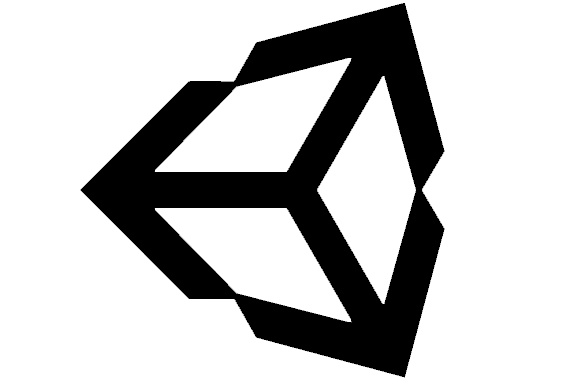
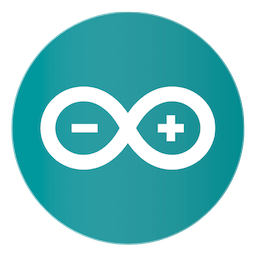
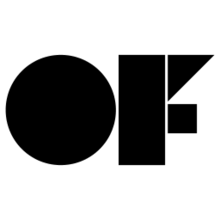
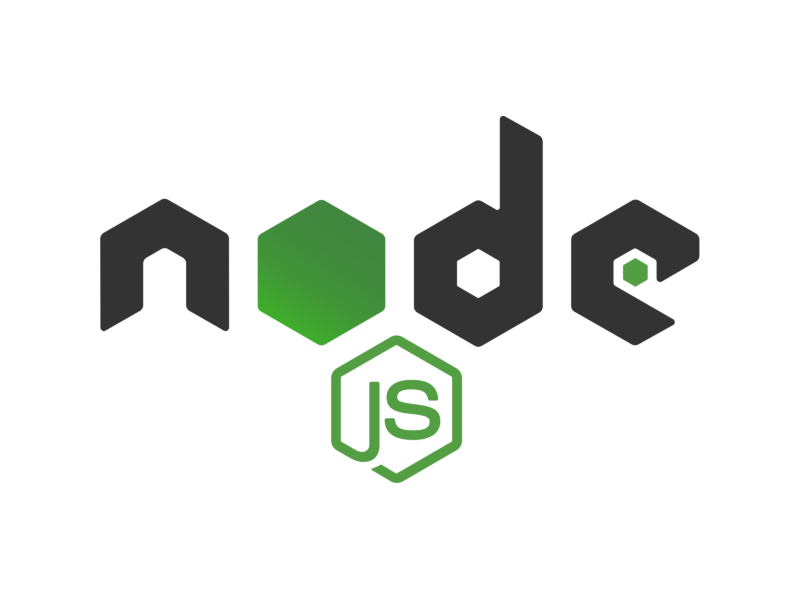
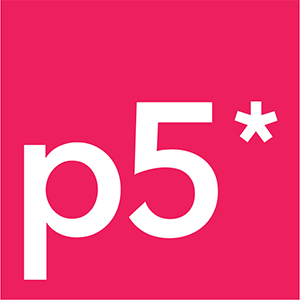

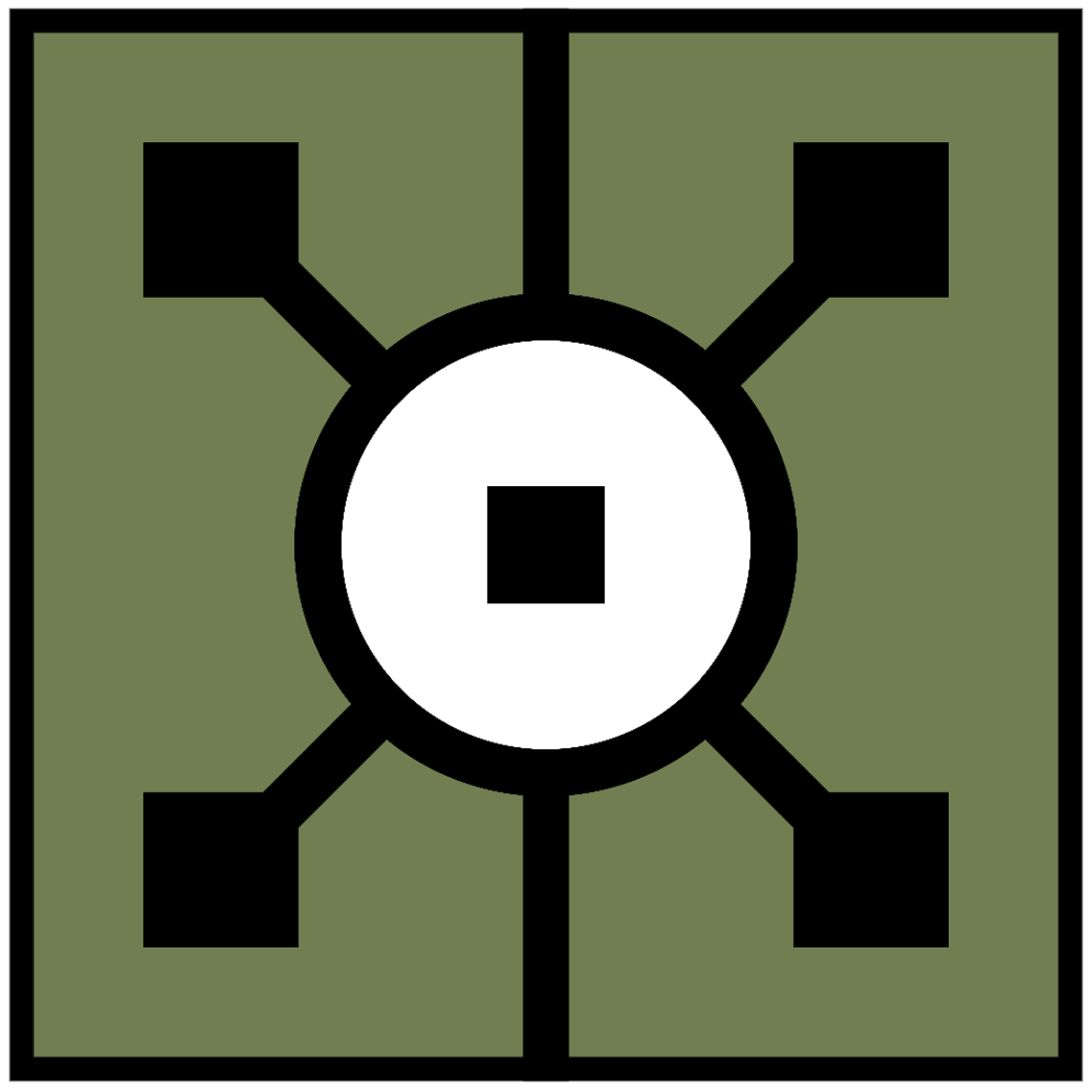


4.3
B-DC 332
Graduation Project
Computation in Design
23–24
Semester 1
Technologies
Application
Type
are.na
website
Google Docs
Miro, FigJam
Visual Studio Code
platform
platform
tool
tool
code, tool
collecting references
research repository
writing, organising
mapping, ideating
coding html, css, web-development
Arduino
Blender
Figma
node-js
Processing
p5js
Prompting
Python
Touch Designer
Unity
Unreal Engine
hardware, microcontroller
3D modelling, animation
ui/ux, wireframe, prototypes
system, desktop, server
generative, design, interactivity
web-based, generative, design
various generative AI tools
system, desktop, AI, machine learning
interactivity, real-time audio-visual
interactivity, mobile, AR, real-time
real-time, 3D, interactivity, VR
code (Arduino, c/c++)
ui, node-based, code (python)
ui, node-based
code (javascript)
code (java)
code (javascript)
text
node-based (python)
code, node-based (C#)
node-based
4.3
B-DC 332
Graduation Project
Computation in Design
23–24
Semester 1
Technologies
Application
Availability
3D printer
Electronics*
Lasercutter
Paper
Screen
Sound recorder
Sound system
experiment, prototype, artefact
experiment, prototype, artefact
experiment, prototype, artefact
experiment, prototype, artefact
experiment, prototype, artefact
experiment, prototype, artefact
experiment, prototype, artefact
workshop
self, lab, sim lim
lab
self
self, lab
self (phone), lab (zoom recorder)
self, lab
* sensors, microcontrollers, motors, led lights, tools
4.3
B-DC 332
Graduation Project
Computation in Design
23–24
Semester 1
Generative AI
AI models that can generate open-ended content, often creative content like visuals, music or text.
LLMs
Large Language Models, are advanced computer programs designed to understand and generate human-like text.
Prompting
AI chat prompting is a technique where a computer program provides suggested text or other outputs to help users engage in natural language conversations with AI or to generate creative outcomes like visuals for example.
Hallucination
AI hallucination refers to a situation where an AI system generates content that is not accurate or based on real information, often creating fictional or misleading outputs.
Bias
Bias in AI refers to the presence of unfair or skewed representations and decisions made by artificial intelligence systems, potentially leading to unequal treatment or inaccurate conclusions.
23–24
B-DC 332
Graduation Project
Computation in Design
Semester 1
Technologies
Generative AI and ChatGPT
What is it about?
4.3
ChatGPT works with algorithms and is trained to generate human-like text that can be used in conversation. It can answer questions, provide information, and engage in natural language discussions with users.
Some potential use cases for ChatGPT include customer service chatbots, virtual assistants, and conversational interfaces for websites or mobile apps. It can also be used to generate content for social media or create chatbot scripts for marketing or entertainment purposes.
Overall, ChatGPT is a powerful tool for creating chatbots that can have intelligent and engaging conversations with users.
23–24
B-DC 332
Graduation Project
Computation in Design
Semester 1
Technologies
Generative AI and ChatGPT
4.3
23–24
B-DC 332
Graduation Project
Computation in Design
Semester 1
Technologies
Generative AI and ChatGPT
4.3
Acknowledging the use of generative AI in your work
For this assignment (Dissertation), you are allowed to use GenAI solely for certain functions, which will be explicitly stated. Any use of GenAI must be acknowledged. Some examples of what we might allow AI to be used for:
→ Create text that you'll then need to change to fit your specific situation or perspective
→ Summarise topics to give you a starting point for more in-depth research without using AI
Your writing must be your own.
Remember that you are in school to learn and become an independent learner and eventually an expert in your field of study and practice.
Generative AI tools can help you achieve your ideas, visions, futures, but keep in mind that the quality of your work is determined by talent, practice and knowledge.
Dissertation
B-DC323
23–24
B-DC 332
Graduation Project
Computation in Design
Semester 1
Technologies
Generative AI and ChatGPT
4.3
You are free to use generative AI tools in any way that helps you in your learning for this class. However, any usage of generative AI must be properly acknowledged and communicated.
You need to provide a statement of use that clarifies what, if any, technologies you employed to create content while working on your assignment.
Remember that you are in school to learn and become an independent learner and eventually an expert in your field of study and practice.
Generative AI tools can help you achieve your ideas, visions, futures, but keep in mind that the quality of your work is determined by talent, practice and knowledge.
Acknowledging the use of generative AI in your work
Graduation Project
B-DC332
Artefacts
23–24
B-DC 332
Graduation Project
Computation in Design
Semester 1
The designer encounters a world, which crucially includes designed artefacts as well as people and physical phenomena, and has the job of fashioning something new that works for that world. A significant step on this journey is the development of a proposal, or proposals, about what might be built.
Proposals may vary widely in their specificity, from evocative and unrealisable sketches, to abstract representations of intention, to relatively complete specifications or scenarios. In each case, the role of design proposals is both to create and constrain.
Once a proposal is agreed on, this serves as a brief for further elaboration and refinement of what the artefact will and will not be. Typically this involves a combination of progressively more focused design explorations and proposals, including what Schön (1983) calls a ‘conversation with materials’, as a myriad of decisions are made (Stolterman, 2008) and the artefact that will actually be built is resolved.
Finally, the finished artefact is assessed through some combination of critique, commercial success or failure, and empirical study of what people do with it and how it might affect their lives, until accounts about it settle down, and it is ready to take its place in the world and its artefacts to serve as a context for new designs.
Design Primer, Experiments
Studio, making, prototype
Presentation, testing, showcasing
4.4
Artefacts
B-DC 332
Graduation Project
Computation in Design
Objects
Video
Experience
Intervention
Publication
Presentations
static, interactive, animated, functional, sculpture, tools, found
documentation, speculative, foresight, design fiction
multi-sensory, immersive, performance, installation, exibition
book, website, journal-paper, book-chapter
4.4
23–24
Semester 1
B-DC 332
Graduation Project
Computation in Design
Sketches
Experiments
Prototypes
Designed Outcomes
Writings
Artefacts
4.4
23–24
Semester 1
Design can function at multiple levels and in different ways. Design professor Richard Buchanan captured his thinking into these ‘four orders of design’ illustrating how design as a discipline has moved from the traditional concept of the visual or tangible artefact through to orchestrating interactions and experiences, and to transforming systems.
Four Orders of Design. Symbols, Objects, Actions, Systems.
Applications
4.5
B-DC 332
Graduation Project
Computation in Design
23–24
Semester 1
Four Orders of Design
2D Graphic Design, deals with the nature, shape, and meaning of symbols and consists of four distinct but related activities: typography, illustration, photography, and print. 2
Systems and environments. Environmental design is concerned with “[t]he idea or thought that organizes a system or environment” Therefore, in the fourth order, the focus is on human systems, “the integration of information, physical artifacts, and interactions in environments of living, working, playing, and learning.” 2
4D Interaction. In interaction design, the locus of design is action. Here, the focus is on designing experiences rather than physical objects. 2
3D Industrial Design, industrial design is concerned with tangible, physical artifacts — with things. 2
1 Symbols
3 Actions
2 Objects
4 Systems
Applications
4.5
B-DC 332
Graduation Project
Computation in Design
23–24
Semester 1
Four Orders of Design
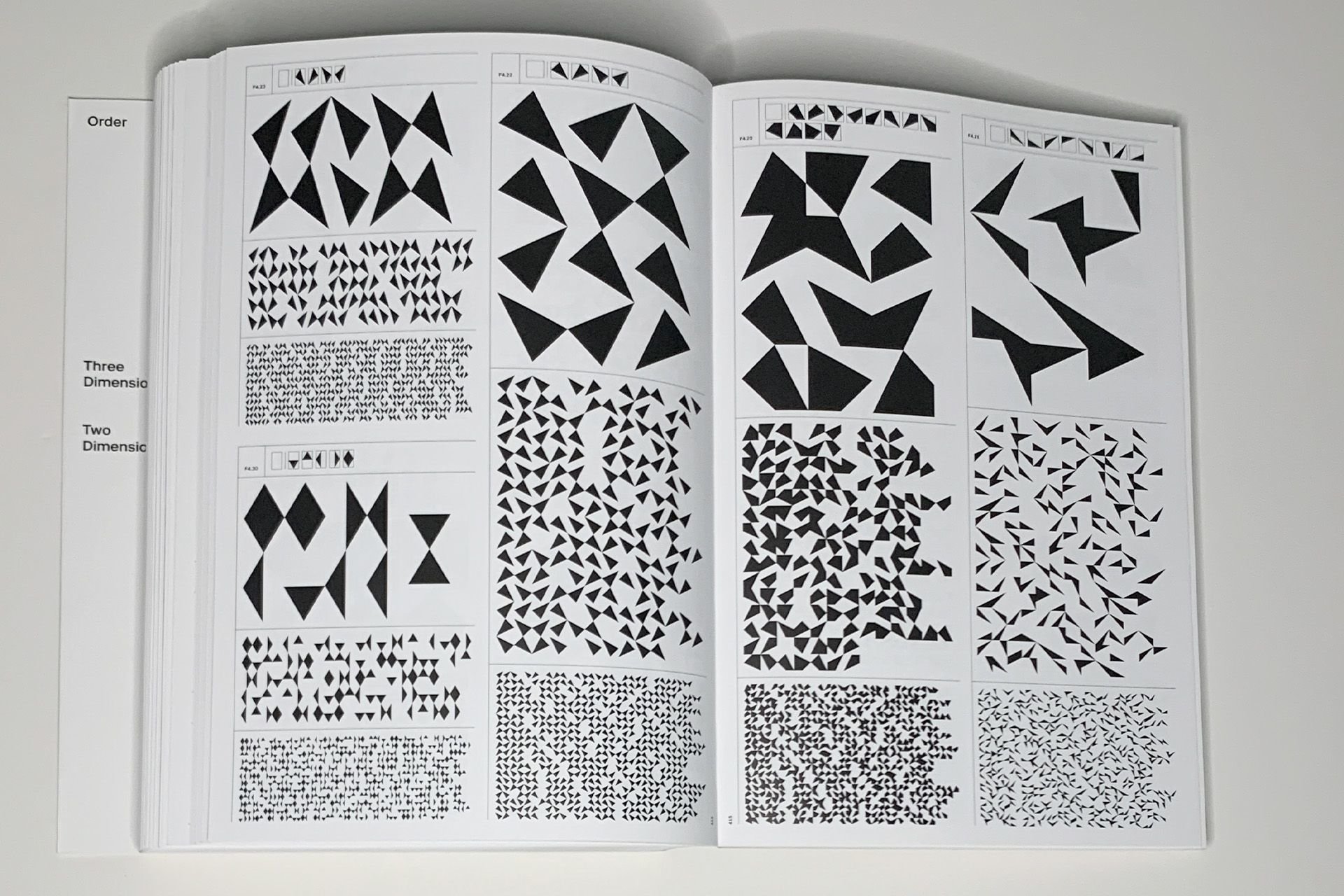

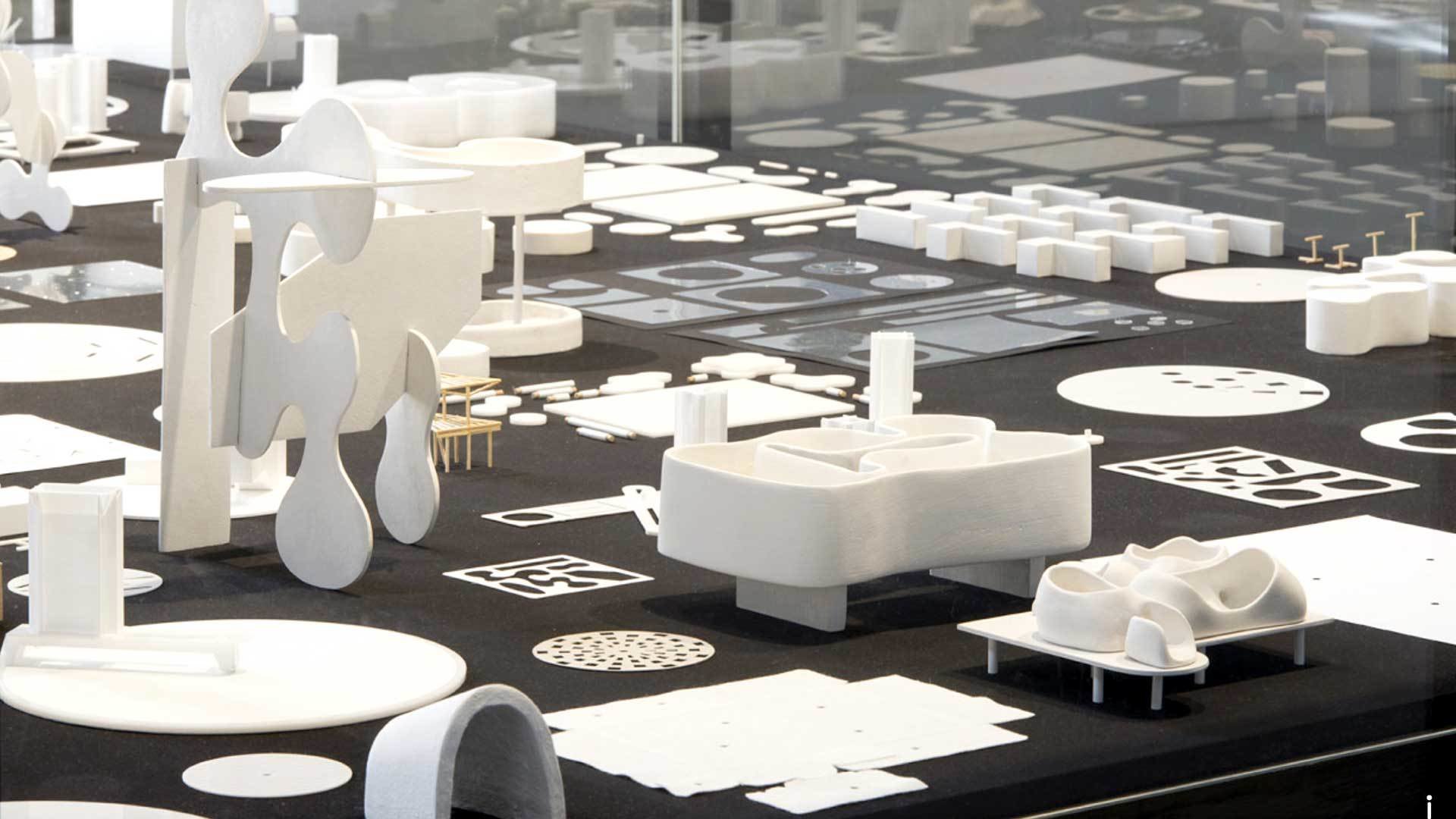
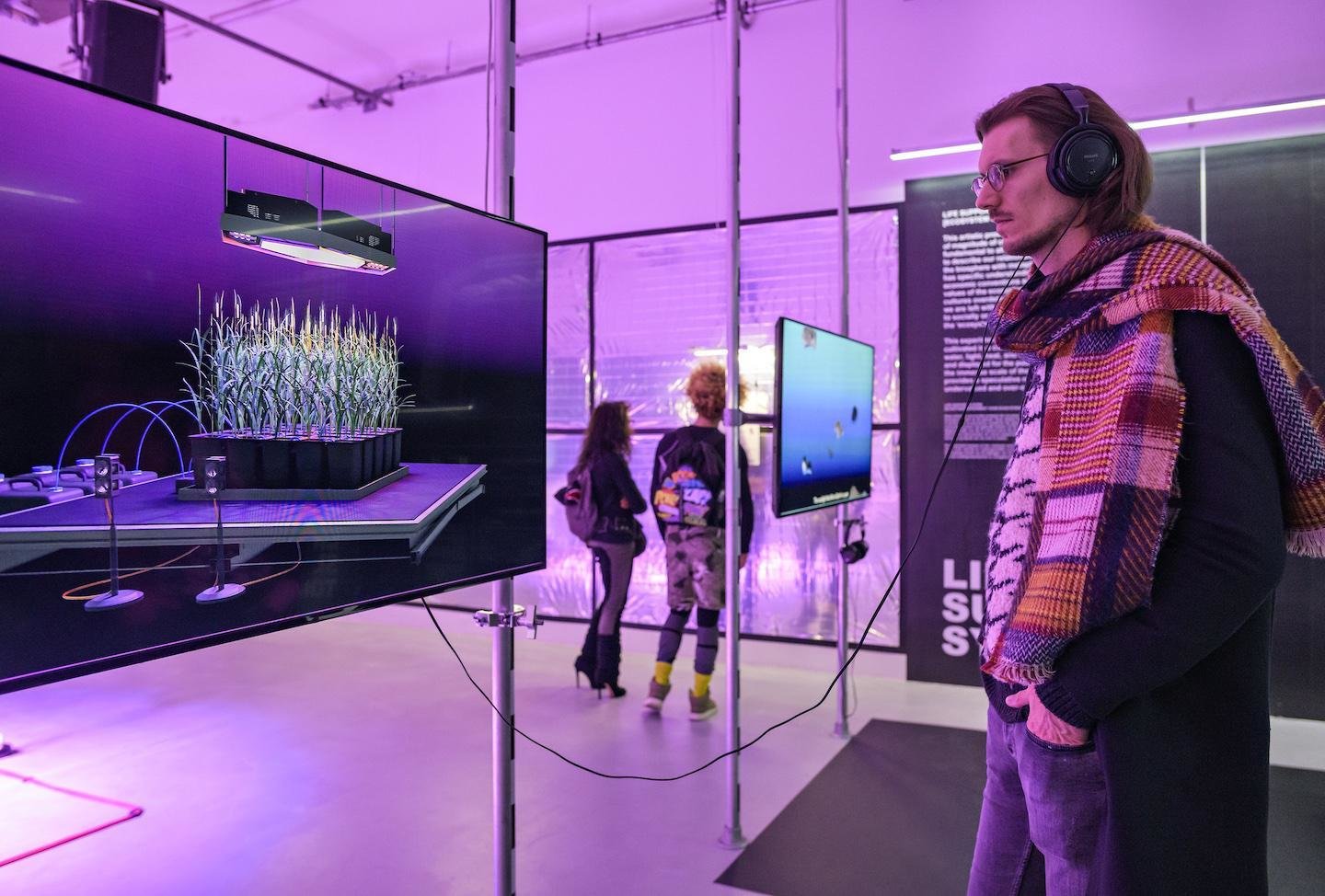
1 Symbols
2 Objects
3 Actions
4 Systems
Poster
Print publication
Website
3D print
Crafted object
Device
Community
Exhibition
Platform
Spaces
Workshop
Immersive Experience
Installation
Interface
Screen
Applications
4.5
B-DC 332
Graduation Project
Computation in Design
23–24
Semester 1
Samples and references
Coded
Generative
Crafted
Interactive
Speculative
Applied
Spaces
Experiences
Technologies
Tools
Aesthetics
Behaviour
5
B-DC 332
Graduation Project
Computation in Design
23–24
Semester 1
Samples and references
Coded
Generative
Crafted
Interactive
Speculative
Applied
Spaces
Experiences
Technologies
Tools
Aesthetics
Behaviour
5
B-DC 332
Graduation Project
Computation in Design
23–24
Semester 1
Samples and references
Superflux
Distributed Design
AIxDesign
Biodesigned
Disnovation Collective
art+com
Zach Lieberman
Google Experiments
Design Emergency
Rhizomatiks
Pentagram
Ideo
iF Design Awards
xCoAx conference
Design through Research conference
Neri Oxman
Alexandra Daisy Ginsberg
oio studio
Design Systems International
Flexible Visual Systems
5
B-DC 332
Graduation Project
Computation in Design
23–24
Semester 1
Superflux
Superflux is a boundary-defying, award-winning design and experiential futures company, as well as a research and art practice. From climate change to algorithmic autonomy, future of work to more-than-human politics, our work aims to confront diverse audiences with the complex and deeply interconnected nature of the challenges we face today.

Samples
B-DC 332
Graduation Project
Computation in Design
23–24
Semester 1
Superflux studio website, browse-through.
Samples
B-DC 332
Graduation Project
Computation in Design
23–24
Semester 1
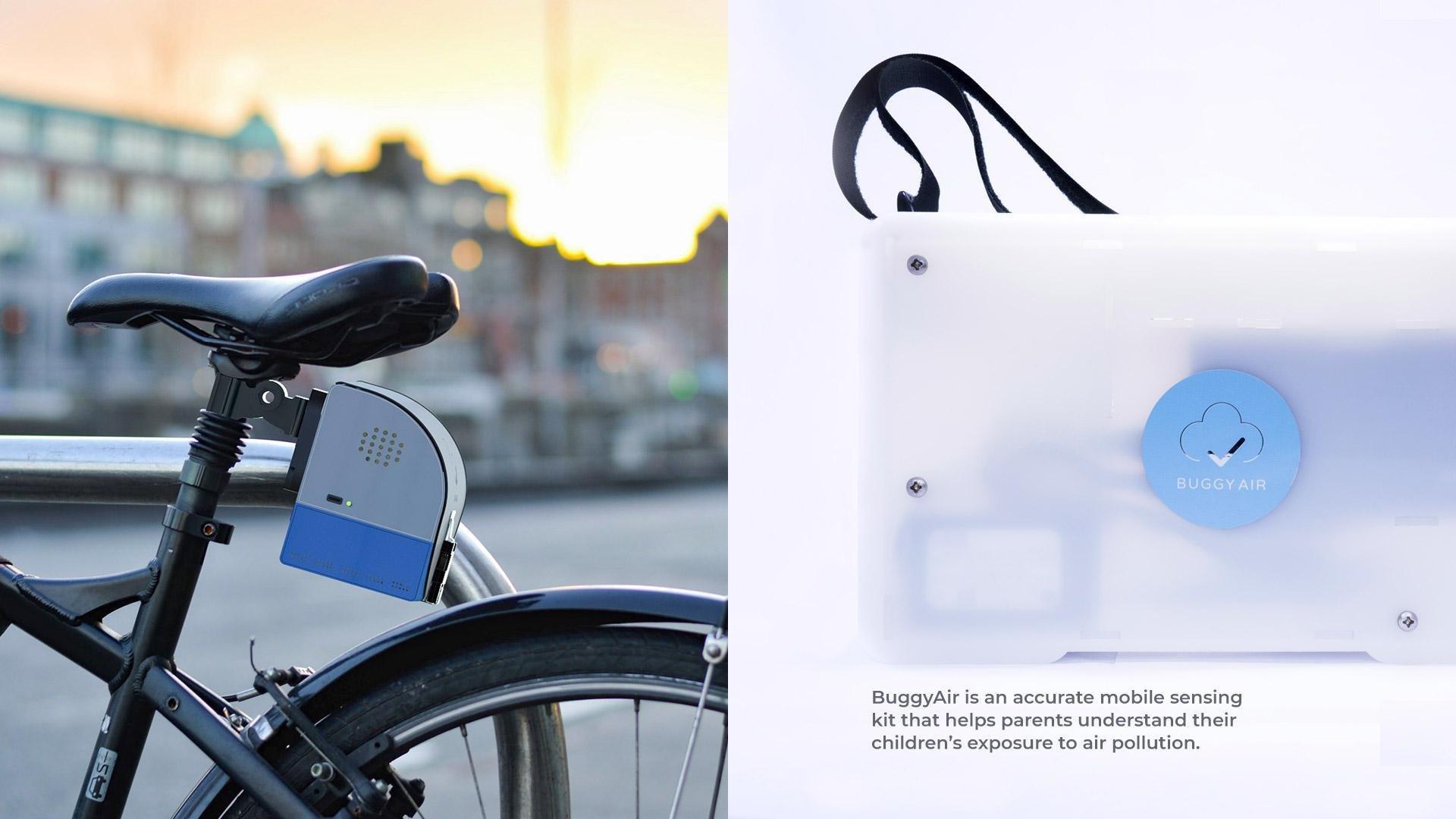
Superflux, BuggyAir
Empathy, Problem: Today, in our cities, infants and toddlers who are constantly wheeled and carted around our roads are most susceptible to ground level air pollution, and are at highest risk. Till date, no project has investigated the impact of air pollution on this demographic, which represents the largest subgroup of the population susceptible to the effects of ground level air pollution.
Prototype: BuggyAir is an accurate mobile sensing kit that helps parents understand their children’s exposure to air pollution.
Application, Testing: Participants will use these kits to measure, monitor and collect data regarding their children’s exposure to specific, damaging air pollutants, and in the process also learn about IoT.
Samples
B-DC 332
Graduation Project
Computation in Design
23–24
Semester 1
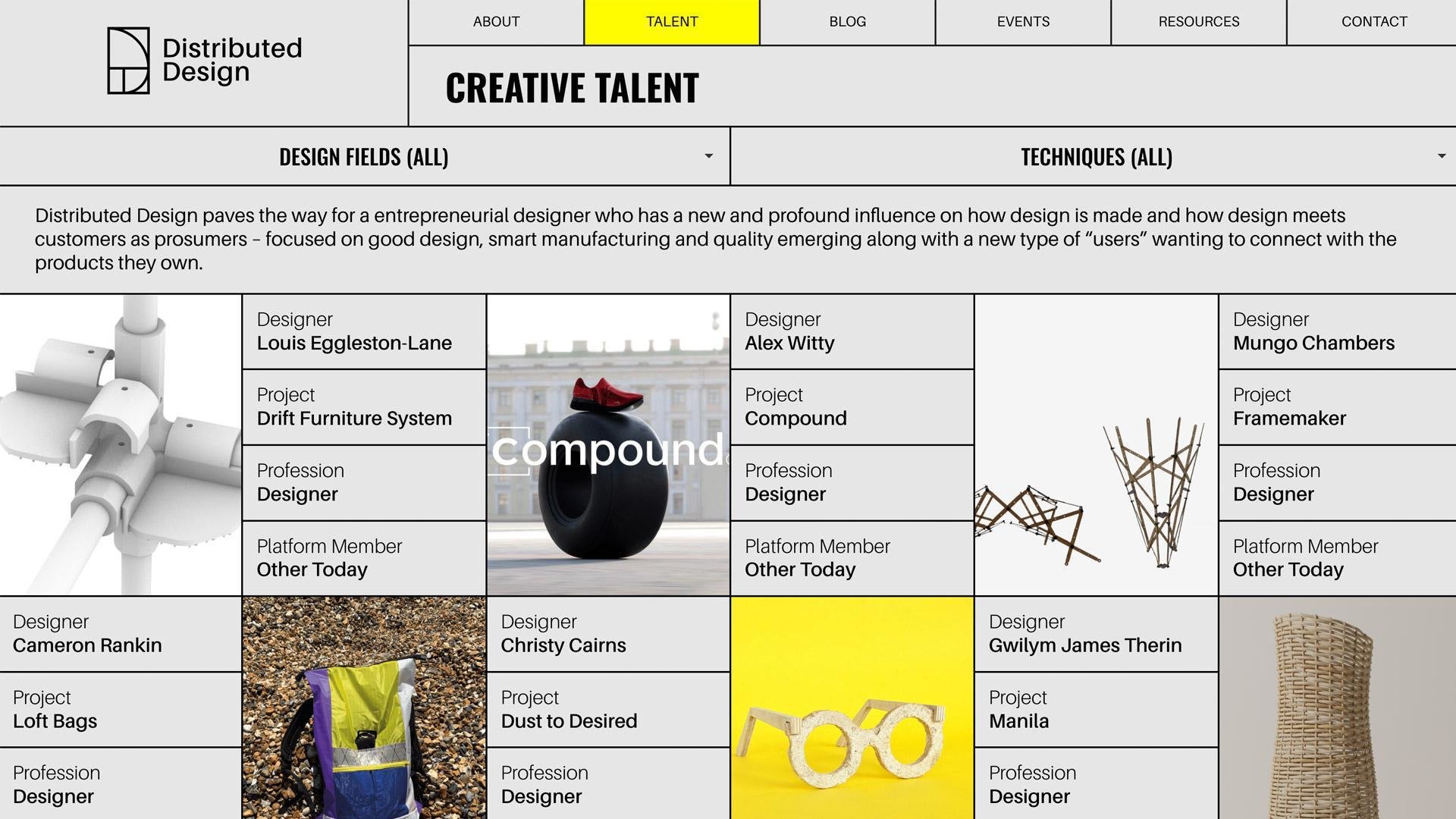
Distributed Design Platform
Distributed Design paves the way for a entrepreneurial designer who has a new and profound influence on how design is made and how design meets customers as prosumers – focused on good design, smart manufacturing and quality emerging along with a new type of “users” wanting to connect with the products they own.
The platform offers a great range of resources including .pdf publications that address topics such as the This is Distributed Design book, Viral Design, Design Remix Share Repeat.
Samples
B-DC 332
Graduation Project
Computation in Design
23–24
Semester 1
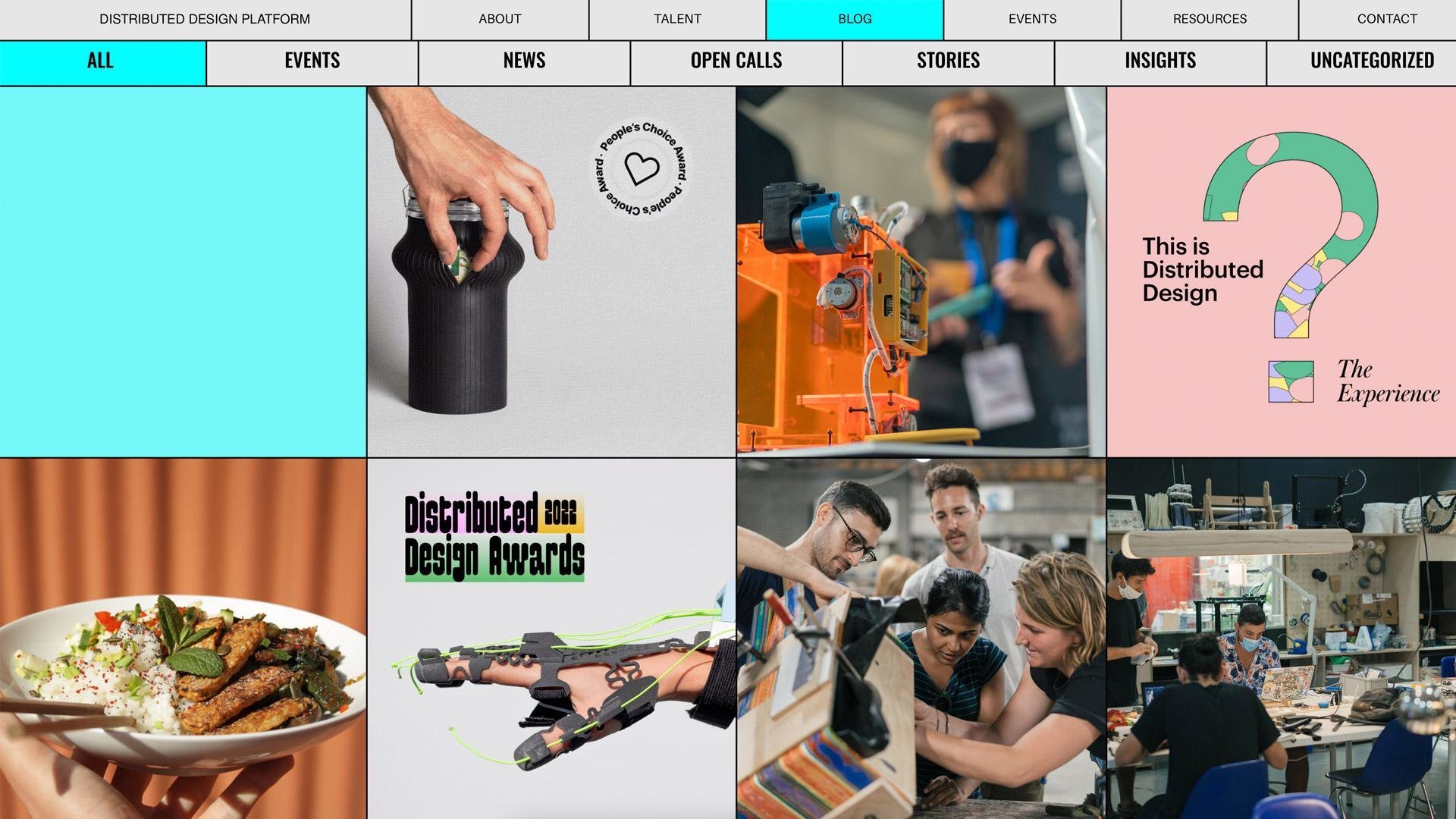
B-DC 332
Graduation Project
Computation in Design
23–24
Semester 1
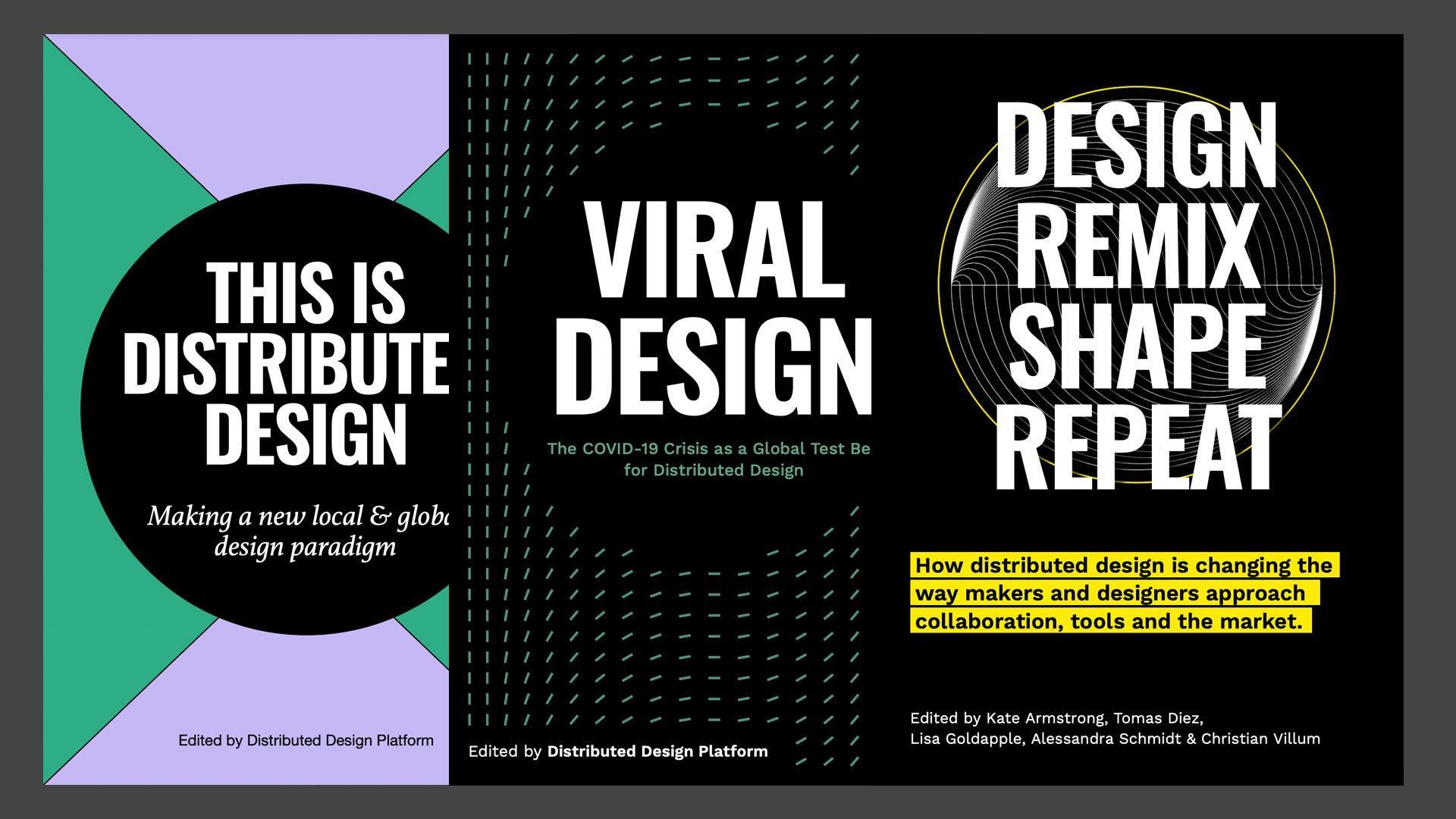
B-DC 332
Graduation Project
Computation in Design
23–24
Semester 1
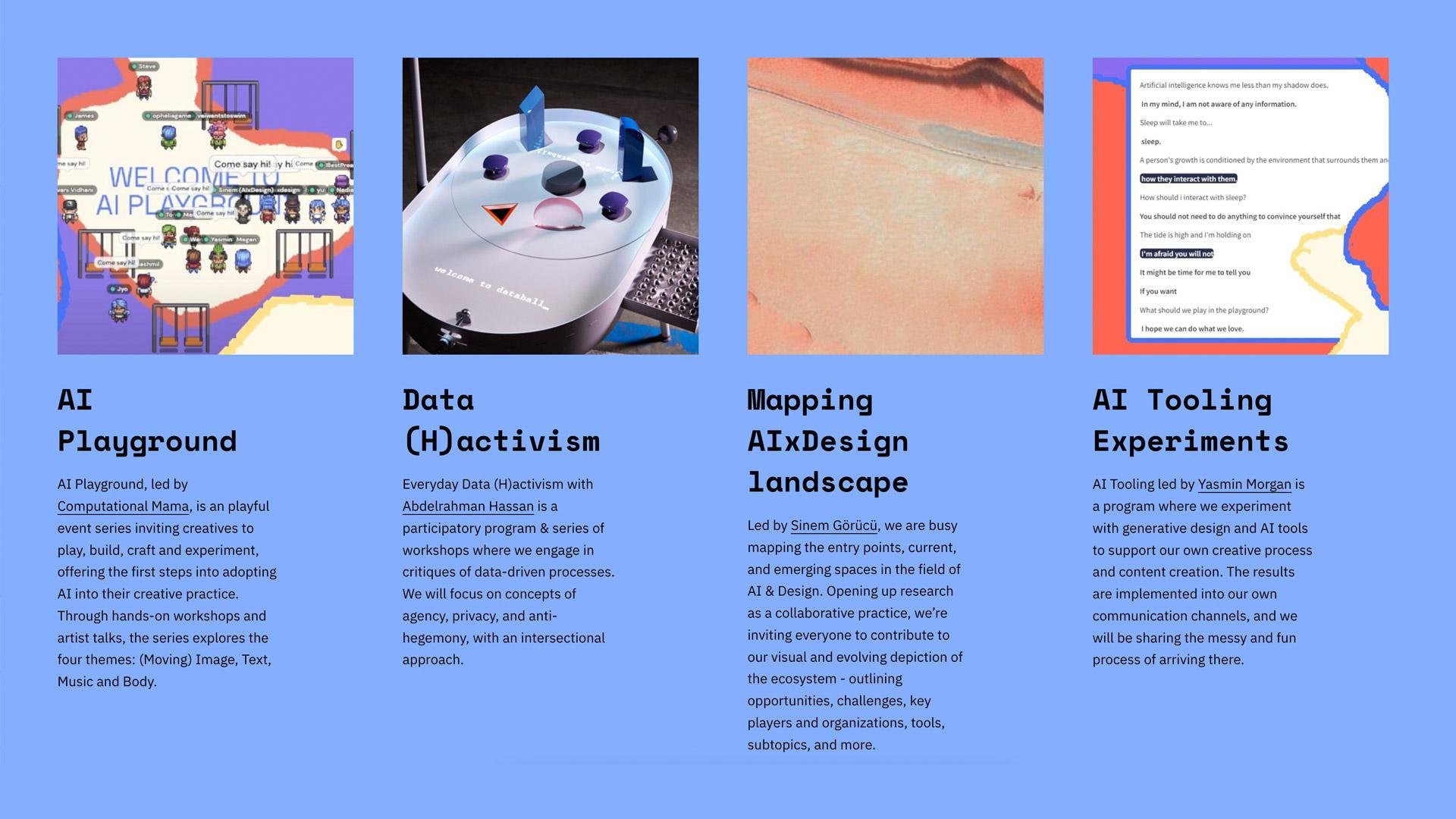
AIxDesign Community
AIxDesign is an independent community of practitioners exploring & shaping the intersection of Design/Creativity and AI/ML/Data. They run events, do research, and create resources for geeky designers, creative techies & the curious-minded from all walks of life. Challenging what AI looks like, they aim to embody values of (co-)creation, democratising access, plurality, care, and play.
Check out their resources: resource library, articles and tutorials. And their Instagram account.
@aixdesign.co
Samples
B-DC 332
Graduation Project
Computation in Design
23–24
Semester 1
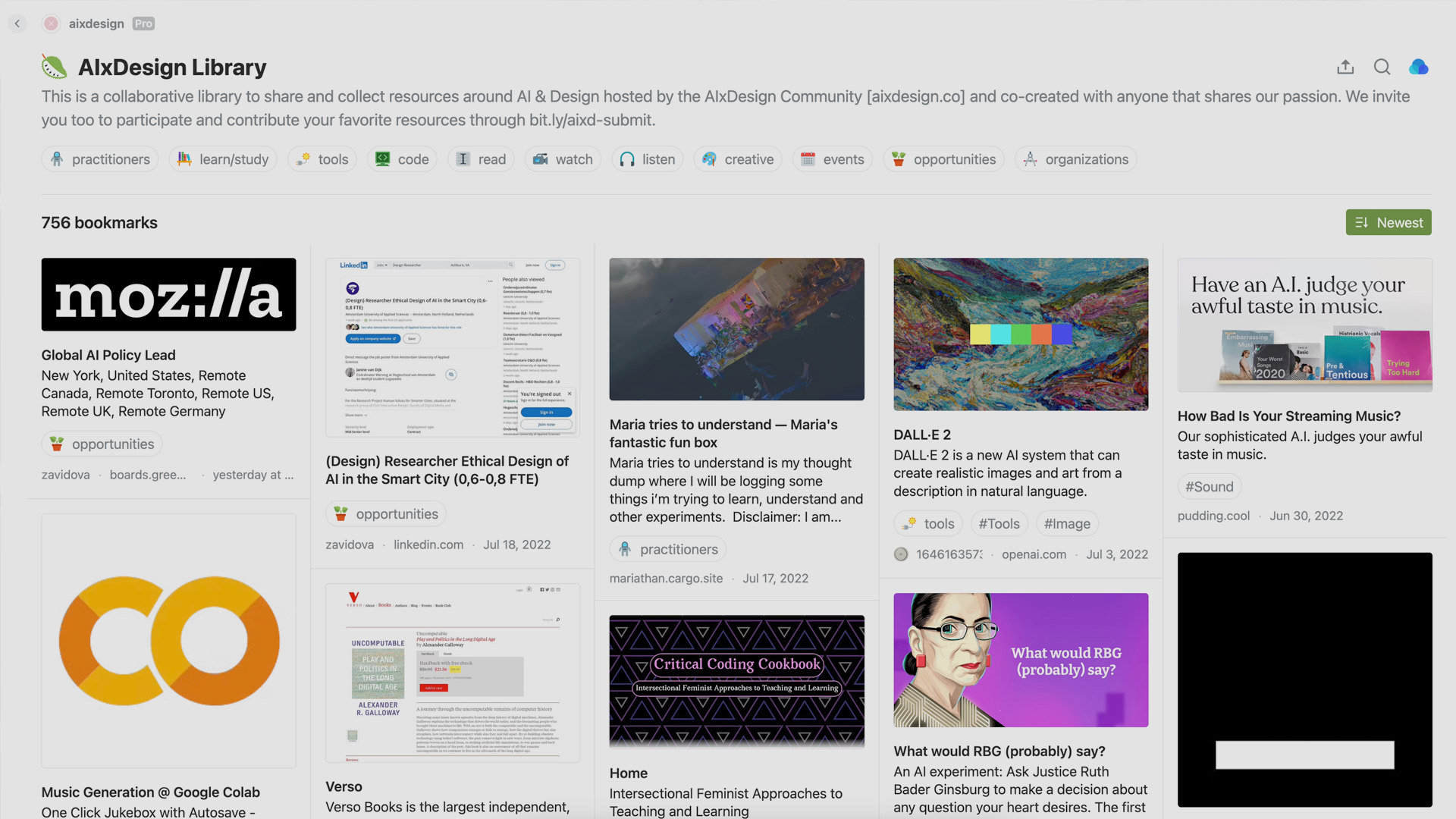
B-DC 332
Graduation Project
Computation in Design
23–24
Semester 1

Biodesigned and Biodesign Challenge
Biodesigned is an independent, not-for-profit publication produced by Biodesign Challenge. Biodesign Challenge is an international competition and education program for high schools and universities that introduces students to the intersections of biotechnology, art, and design.
Biotechnology is spreading into every aspect of our lives—from our materials to our everyday products. As it becomes ubiquitous, society needs interdisciplinary thinkers to understand biotech’s impact and to come up with the next solutions. Future designers must fully understand the debates surrounding biotech so when they are asked to design with it, they do so thoughtfully and ethically. To thrive, we need a multiplicity of perspectives across disciplinary, professional, and cultural backgrounds.
Samples
B-DC 332
Graduation Project
Computation in Design
23–24
Semester 1
Disnovation Collective
Disnovation is a research collective setup in Paris in 2012. They work at the interface between contemporary art, research and hacking, and compose tailor-made for each investigation together with academics, activists, engineers and designers. More specifically their recent artistic provocations seek to empower post-growth imaginaries and practices while challenging dominant techno-solutionist ideologies. Their research includes artworks, publications and curation.

Post Growth Prototypes, a series of video essays, 2021.
Samples
B-DC 332
Graduation Project
Computation in Design
23–24
Semester 1
Disnovation website, browse-through.
Samples
B-DC 332
Graduation Project
Computation in Design
23–24
Semester 1
B-DC 332
Graduation Project
Computation in Design
23–24
Semester 1
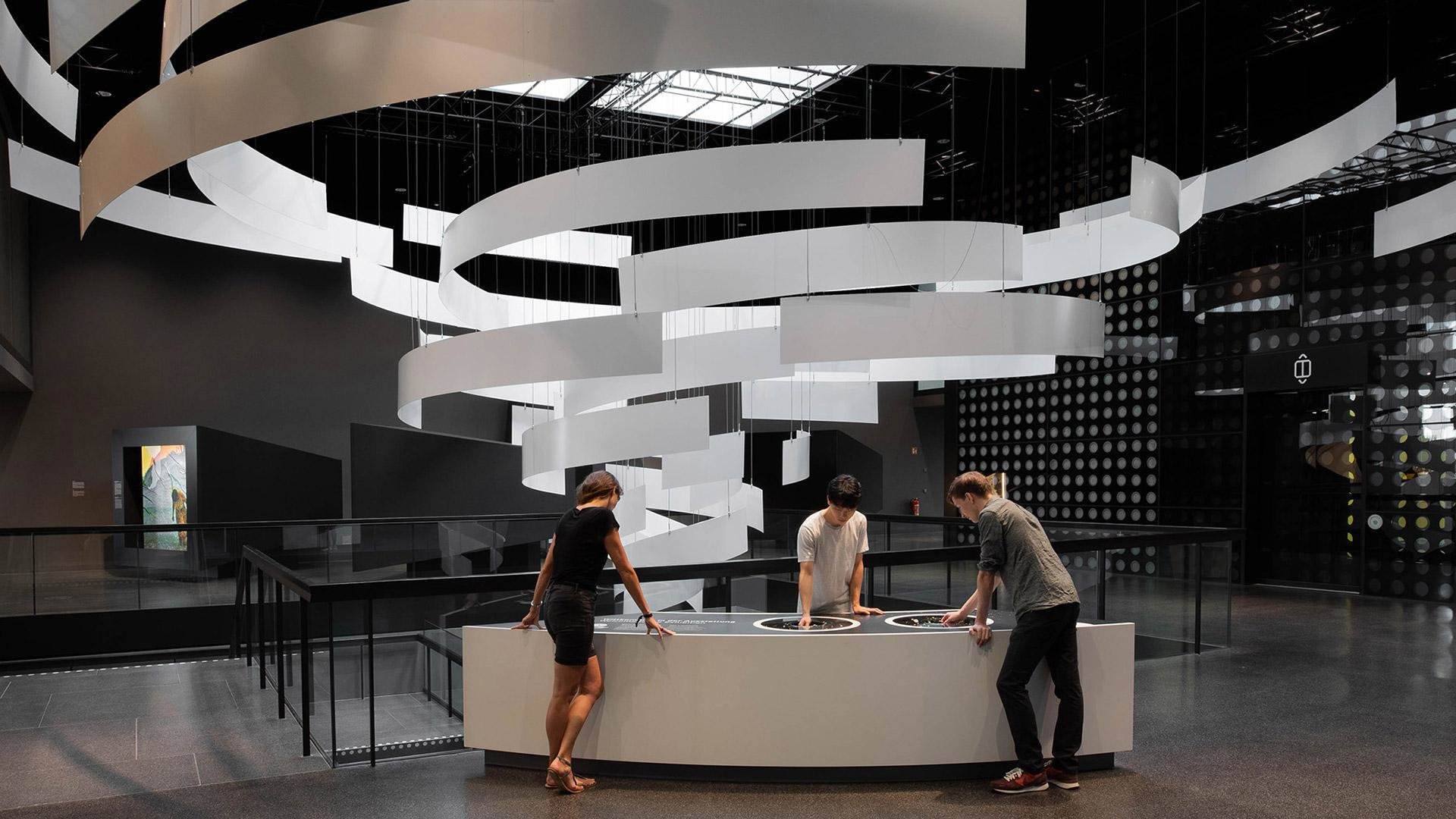
Art+Com
Art+Com is Art, Communication and Research in one. They create media sculptures and installations that impact on their respective locations, giving them an identity beyond architecture and function. These works make use of new media for expression and are computationally charged with complex behaviour and coded meanings. Their art projects are both commissioned for public space, exhibitions and collections, and self-commissioned. They design and implement media installations and spaces that impart complex content in a targeted manner and turn information into a tangible experience. We create exhibits for exhibitions, museums and brand spaces. Content is always in the foreground, never technology.
Samples
B-DC 332
Graduation Project
Computation in Design
23–24
Semester 1
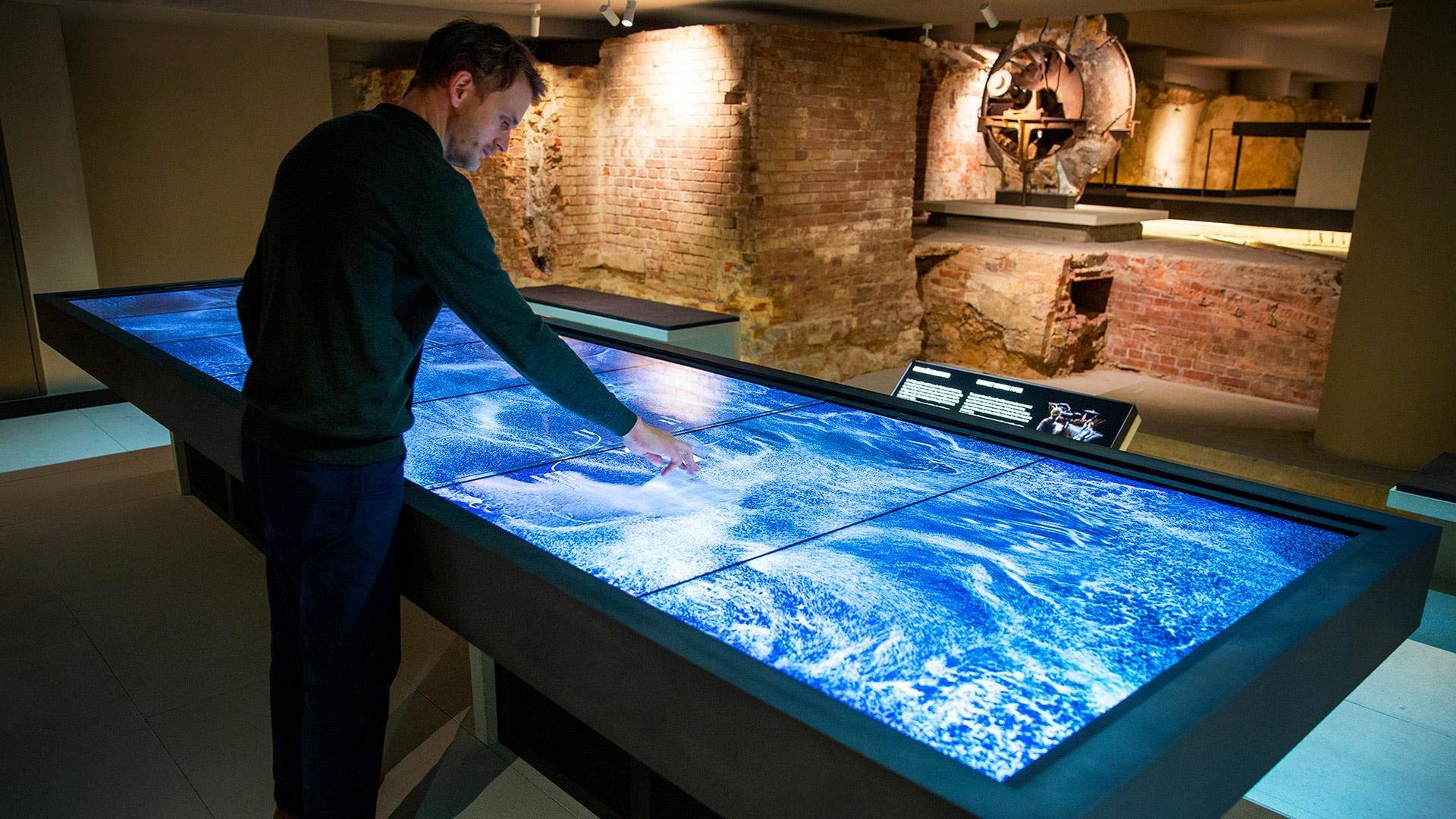
History of the Site, Humboldt Forum, Berlin.
B-DC 332
Graduation Project
Computation in Design
23–24
Semester 1
Petalclouds, Changi Airport, Singapore.
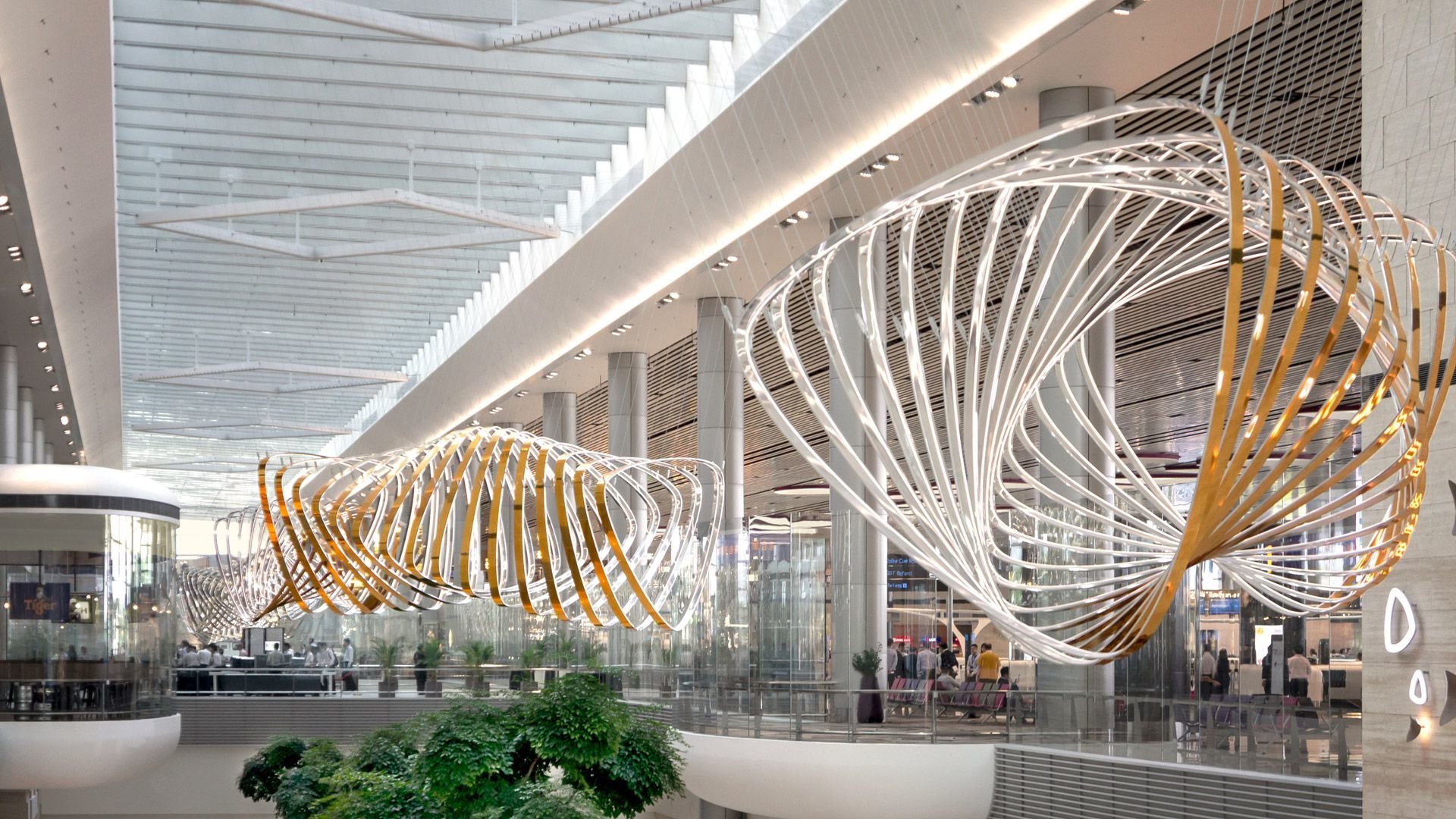
B-DC 332
Graduation Project
Computation in Design
23–24
Semester 1
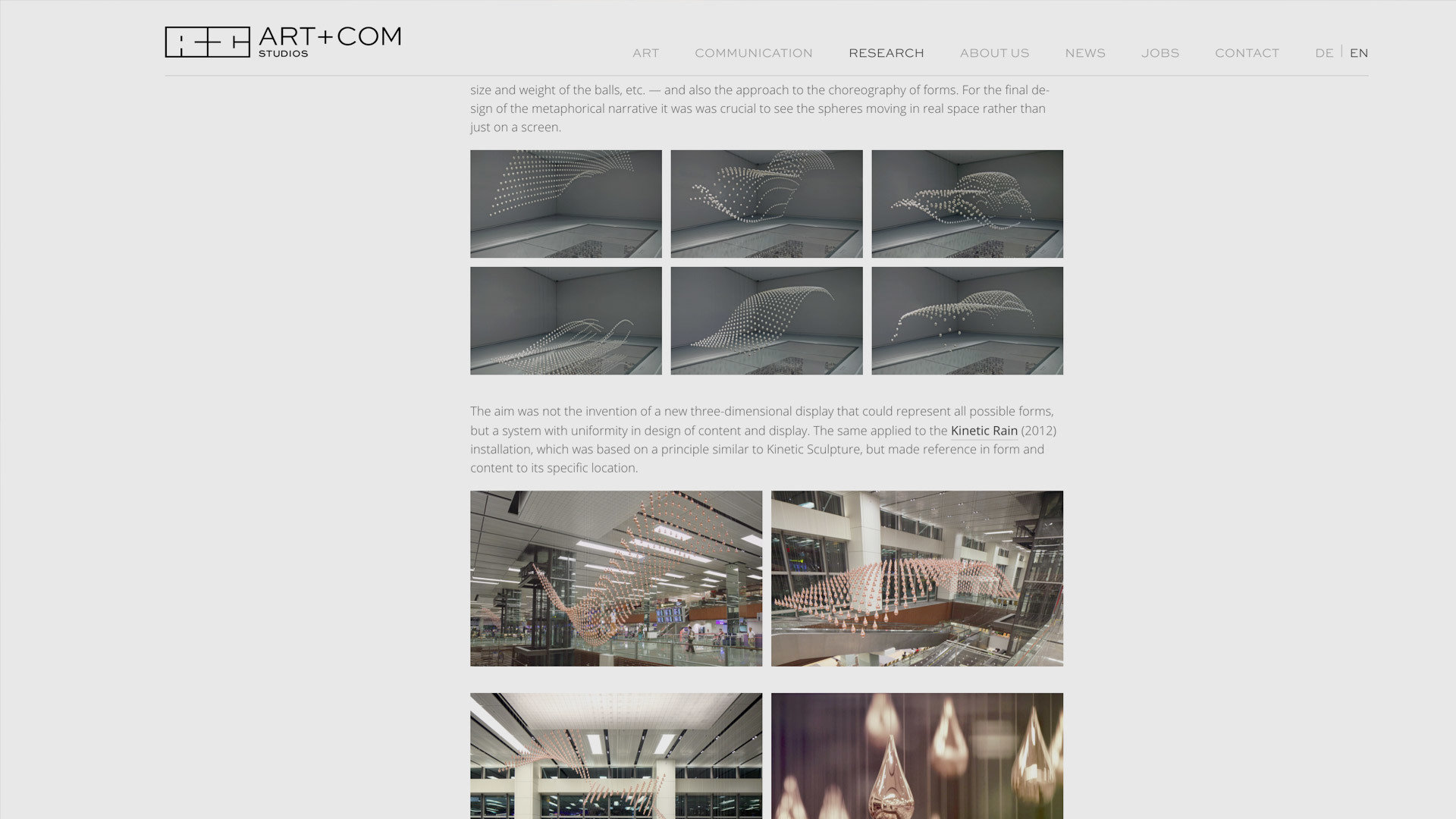
Art+Com Research, Kinetics.
B-DC 332
Graduation Project
Computation in Design
23–24
Semester 1
oio studio
a creative studio made of designers, technologists and bots working on future products and interactions. Designing experimental products, things that you've never seen before, like a mask that analyzes your health, or a synthesizer in twenty-one dimensions. Oh and they are currently building an AI that fits in your pocket. They built creative applications with emerging technologies and put artificial intelligence in lots of different products, explored new creative tools for artists in augmented reality, and designed their own custom electronic boards. They turn abstract trends and weak signals into tools and artifacts, like a calculator for a better distribution of wealth, a toy carpet for kids to explore smart cities, or a series of products crafted by an algorithm.
or
Samples
B-DC 332
Graduation Project
Computation in Design
23–24
Semester 1
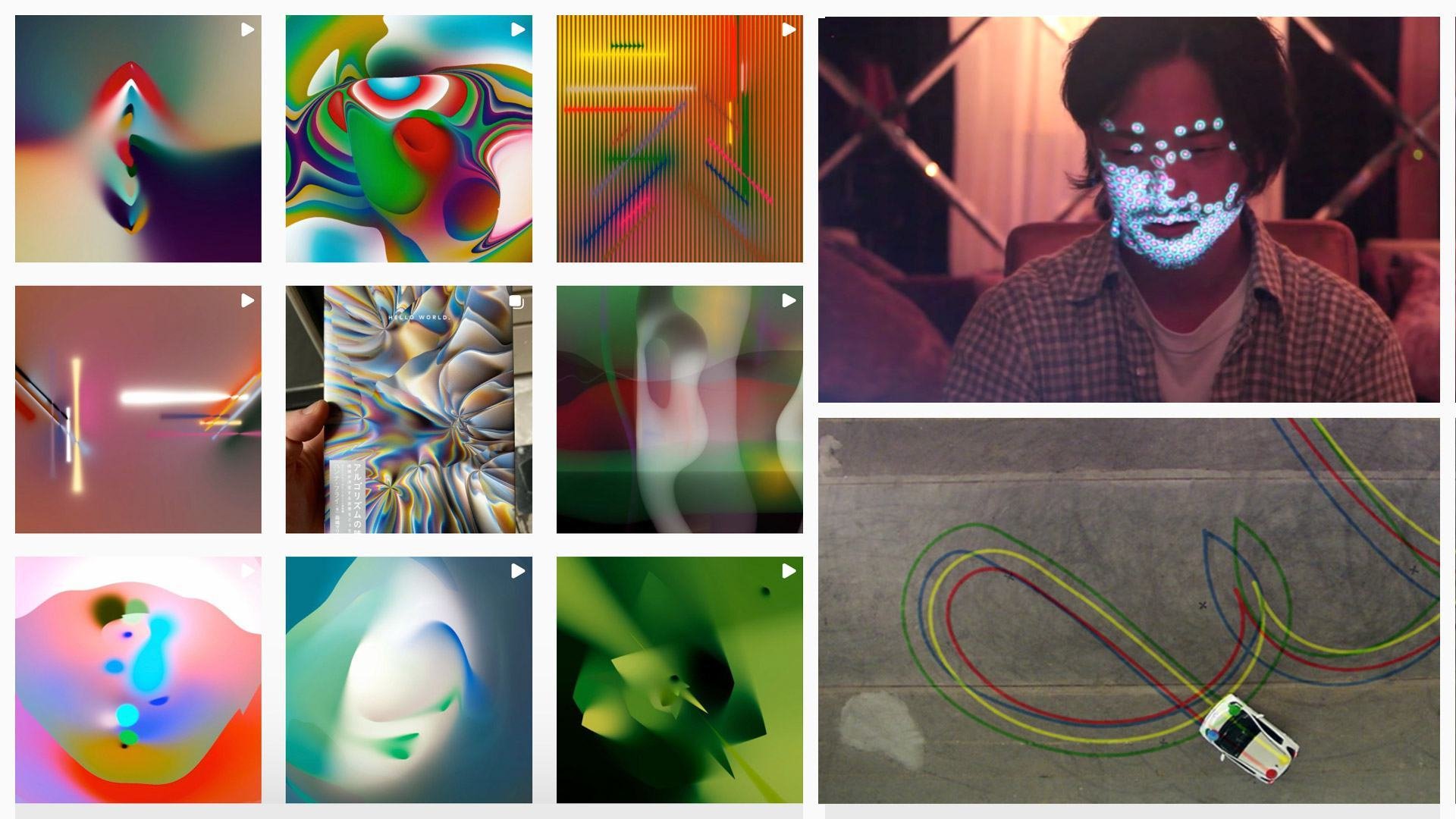
Zach Lieberman
Zach Lieberman is an artist and educator based in New York City. He create artwork with code, and focus on building experimental drawing and animation tools. He make interactive environments that invite participants to become performers. His main focus is how computation can be used as medium for poetry.
He is a professor (MIT Media Lab) at the Future Sketches group which explores software as a medium for art and design, as well as how toolkits and pedagogical approaches can help inform a new generation of computational craft. In their work and courses they focus on computational sketches, often engaging with the past, as a way of suggesting different possible futures.
Samples
B-DC 332
Graduation Project
Computation in Design
23–24
Semester 1


B-DC 332
Graduation Project
Computation in Design
23–24
Semester 1
Learning code can be frustrating and it requires a lot of time and a lot of failure. Time and failure and misunderstanding.
To imbue a sense of optimism here is so important–to celebrate this as a new mode of working and to help students to realise that there's all these untapped ideas out there.
Zach Lieberman
Levin, Golan, and Tega Brain. Code as Creative Medium a Handbook for Computational Art and Design. The MIT Press, 2021.
B-DC 332
Graduation Project
Computation in Design
23–24
Semester 1
Google Experiments
Little Signals
Samples
B-DC 332
Graduation Project
Computation in Design
23–24
Semester 1
Design Emergency, Paola Antonelli
Samples
B-DC 332
Graduation Project
Computation in Design
23–24
Semester 1
Creative Applications
Samples
B-DC 332
Graduation Project
Computation in Design
23–24
Semester 1
Lila Feldman
Samples
B-DC 332
Graduation Project
Computation in Design
23–24
Semester 1
Rhizomatiks
Samples
B-DC 332
Graduation Project
Computation in Design
23–24
Semester 1
Pentagram
Samples
B-DC 332
Graduation Project
Computation in Design
23–24
Semester 1
Ideo
Samples
B-DC 332
Graduation Project
Computation in Design
23–24
Semester 1
TheGreenEyl
https://thegreeneyl.com/
Samples
B-DC 332
Graduation Project
Computation in Design
23–24
Semester 1
Core 77 Design awards
click images for project details
Recognizing excellence in all areas of design enterprise, the Core77 Design Awards annually celebrates the richness of the design profession as well as the insight and perseverance of its practitioners. Now in its eleventh year, the Awards program remains dedicated to excellence and inclusivity, offering both students and professionals the opportunity to promote their best work on a global scale across 23 distinct design disciplines.
Browser the current and past winners for inspiration and learn from how projects are developed, organised and presented.




Samples
B-DC 332
Graduation Project
Computation in Design
23–24
Semester 1
iF Design Awards
iF Design is known for outstanding design and social engagement.
Their trend report aims to helps in the discovery of innovation potentials and provides designers with ideas and orientation. The report provides an outlook of future design practices and applications.
The award categories provide a wide range of projects, products and applications. A few selections, but dont hesitate to browse their archives: Lost Water Multidisciplinary Exhibition, Argus, water monitoring with sensors, Cha sustainable composite material, Dreamer 3:45 Nevertheless, We Keep On Dreaming Exhibition design.




Samples
B-DC 332
Graduation Project
Computation in Design
23–24
Semester 1
xCoAx
xCoAx is an exploration of the intersection where computational tools and media meet art and culture, in the form of a multi-disciplinary enquiry on aesthetics, computation, communication and the elusive X factor that connects and characterises them all. The focus of xCoAx is on the unpredictable overlaps between creative freedom and algorithmic rules, between human nature and machine technology, aimed towards new directions in aesthetics.
Contributions to a conference are usually archived in the conference Proceedings, do take a look at the xCoAx Proceedings / publications. including many papers to learn from.
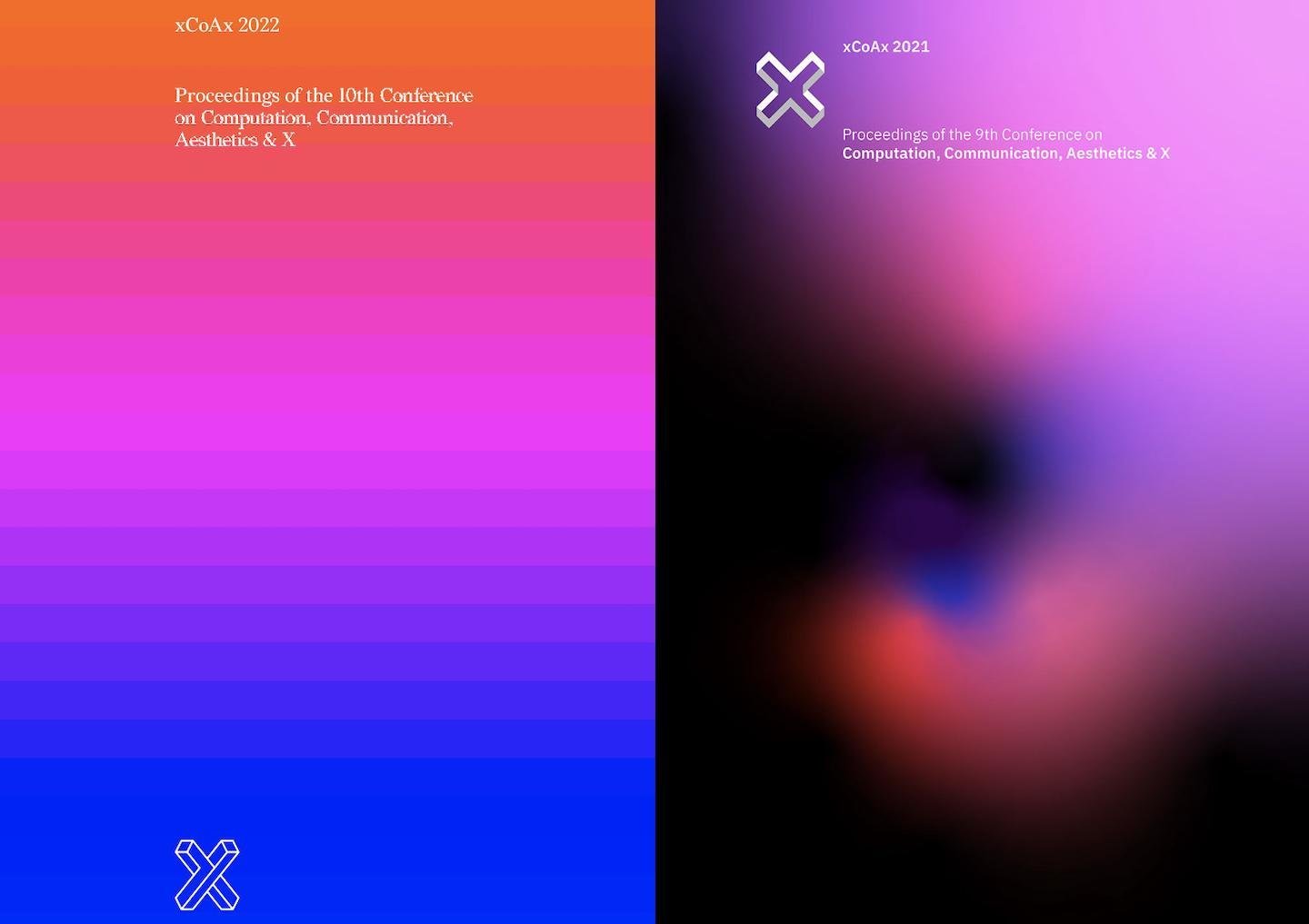
Samples
B-DC 332
Graduation Project
Computation in Design
23–24
Semester 1
Research Through Design conference
Research Through Design (RTD) is an experimental conference that supports the dissemination of practice-based design research. RTD aims to present an alternative to the traditional conference presentation of papers in darkened auditoriums, and supports a more discursive, synergistic setting that places the presentation of designed artefacts at the heart of proceedings.
Sample Paper 1
Sample Paper 2
Sample Paper 3
Sample Paper 4
Samples
B-DC 332
Graduation Project
Computation in Design
23–24
Semester 1
Dan Lockton | Design and Imagination in Climate Futuring
~20+ case studies
Dan Lockton | Design and Imagination in Climate Futuring, https://www.youtube.com/watch?v=QZ1p9vWKYhk
Transition Design
Qualitative Data through experiential and participatory and co-created projects
Samples
B-DC 332
Graduation Project
Computation in Design
23–24
Semester 1
website
Add
Design Research Society
Research Through Design conference
Samples
B-DC 332
Graduation Project
Computation in Design
23–24
Semester 1
website
http://imaginari.es/projects/futures/
https://www.youtube.com/watch?v=QZ1p9vWKYhk
Samples
B-DC 332
Graduation Project
Computation in Design
23–24
Semester 1
website
Samples
https://lynnharles.com/
https://lilafeldman.com/
??
??
B-DC 332
Graduation Project
Computation in Design
23–24
Semester 1
Neri Oxman
Samples
B-DC 332
Graduation Project
Computation in Design
23–24
Semester 1
Alexandra Daisy Ginsberg
pollinator.art
Samples
B-DC 332
Graduation Project
Computation in Design
23–24
Semester 1
serial.co
Samples
B-DC 332
Graduation Project
Computation in Design
23–24
Semester 1
Design Systems International
Design Systems International is a design studio that uses code as their primary material. They turn ideas into experiences, create visual systems, and improve workflows.
Samples
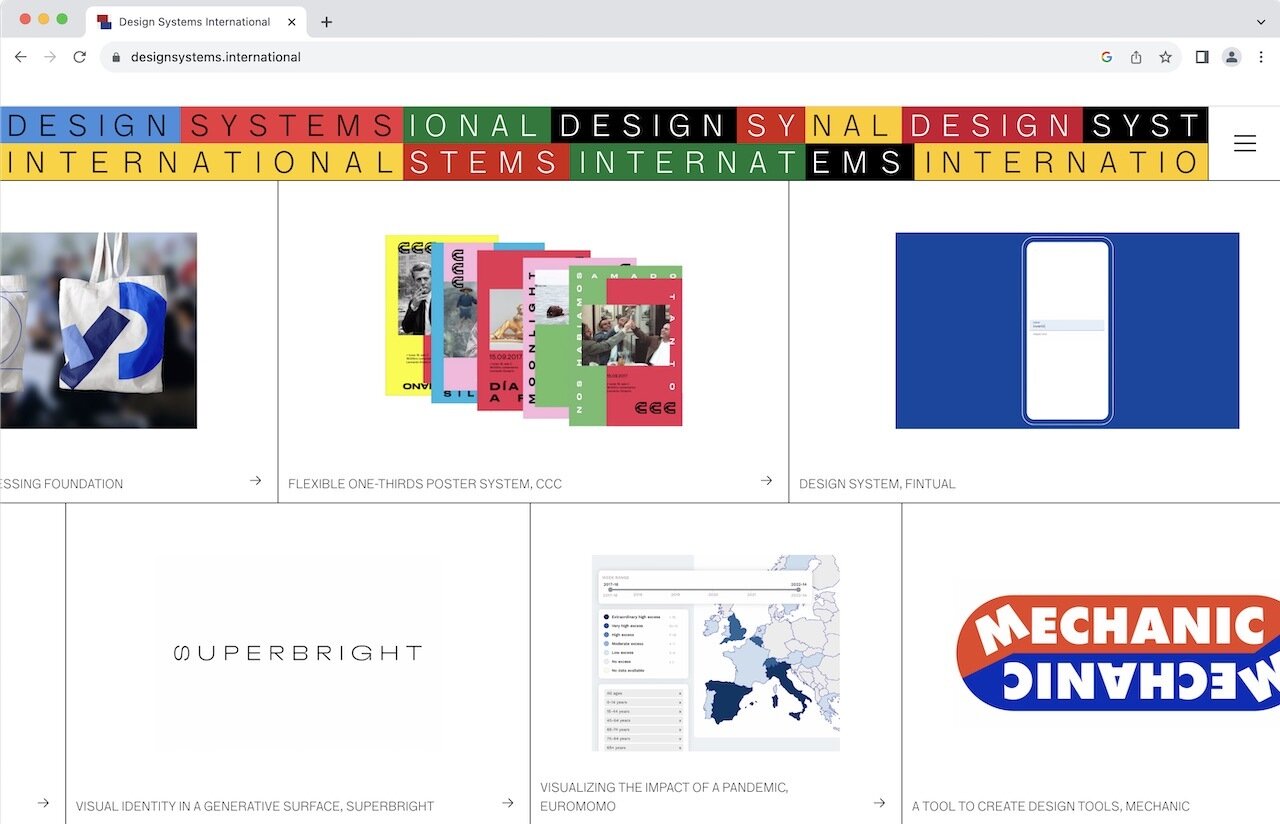
B-DC 332
Graduation Project
Computation in Design
23–24
Semester 1
Flexible Visual Systems
Flexible Visual Systems sums up 10 years of research at the University of Barcelona, 20 years of developing systems at TwoPoints.Net and 18 years of teaching systems at over 10 design universities throughout Europe on 320 pages.
Flexible Visual Systems is the design manual for contemporary visual identities. It teaches you a variety of approaches on how to design flexible systems, adjustable to any aesthetic or project in need of an identifiable visual language.
To learn how to design flexible systems is not just learning another craft, it is going to change the way you think and work entirely. It is an approach, how to design.
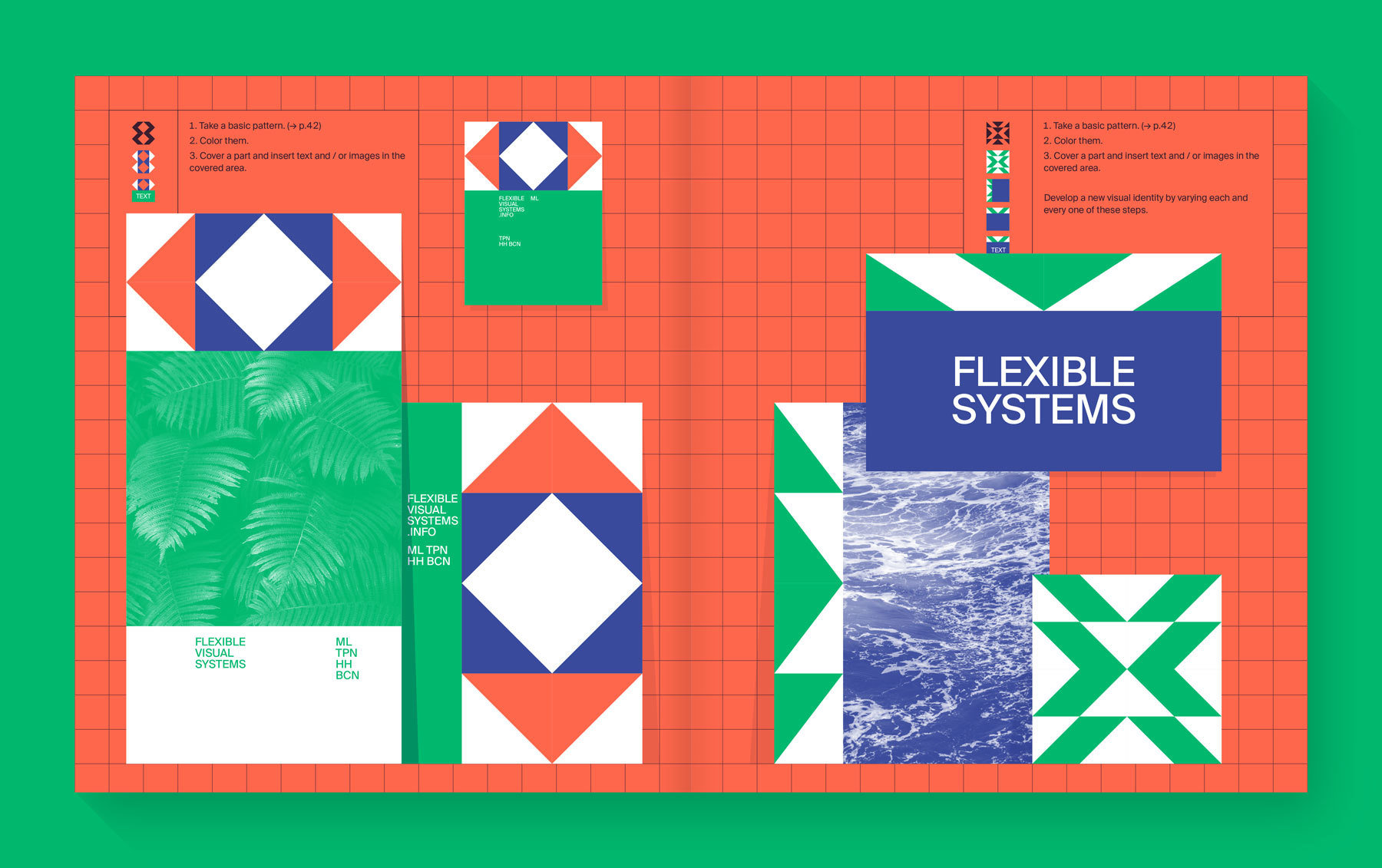
Samples
B-DC 332
Graduation Project
Computation in Design
23–24
Semester 1
B-DC 332
Graduation Project
Computation in Design
23–24
Semester 1
Not working or thinking in systems corresponds neither to our today's communication networks nor to contemporary communication behaviour.
Martin Lorenz
Lorenz, Martin. Flexible Visual Systems: The Design Manual for Contemporary Visual Identities. Slanted Publishers, 2022.
B-DC 332
Graduation Project
Computation in Design
23–24
Semester 1
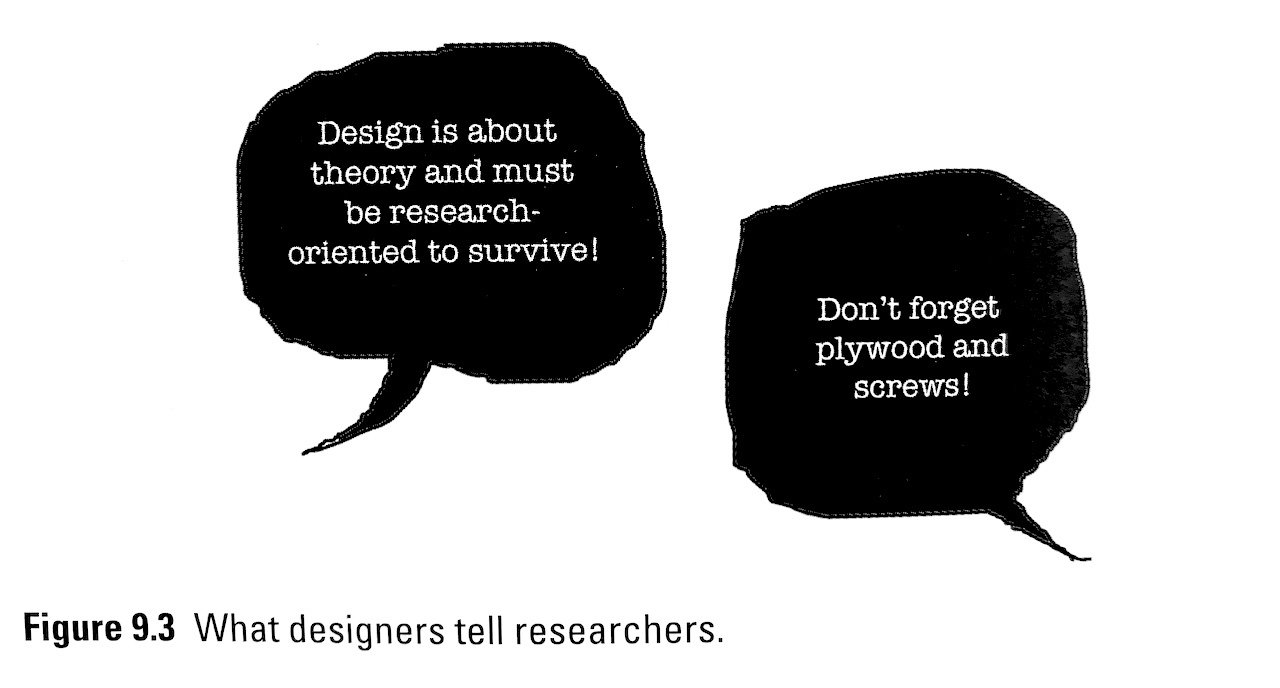
B-DC 332
Graduation Project
Computation in Design
23–24
Semester 1
Generally useful as a foundation for research proposal writing
Additional, more in depth, reading to support your research approach
Great resource for various design topics for general and in-depth understanding
See the Research through Design section
Frayling (1993). Research in Art and Design. Royal College of Art Research Papers 1(1). (PDF from rca.ac.uk)
Zimmerman, Forlizzi, & Evenson (2007). Research through Design as a Method for Interaction Design Research in HCI. In Proc. CHI. (ACM Digital Library)
Zimmerman, Stolterman, & Forlizzi (2010). An analysis and critique of Research through Design: towards a formalization of a research approach. In Proc. DIS. (ACM Digital Library)
Useful to support and develop your research discussion
How to reflect on design research, design experiments and innovaiton
Suggestions
B-DC 332
Graduation Project
Computation in Design
23–24
Semester 1
Cross, Nigel. Design Thinking: Understanding How Designers Think and Work. 2nd ed., Bloomsbury Visual Arts, 2023. e-library
Connecting
Exploring
Experimenting
Making
Prototyping
Testing
Documenting
Reflective
Skilful
Progressive
Informed
Together
Playful
Inspire
6
B-DC 332
Graduation Project
Computation in Design
23–24
Semester 1
Connecting
Exploring
Experimenting
Making
Prototyping
Testing
Documenting
Reflective
Skilful
Progressive
Informed
Together
Playful
Inspire
6
B-DC 332
Graduation Project
Computation in Design
23–24
Semester 1
Connecting
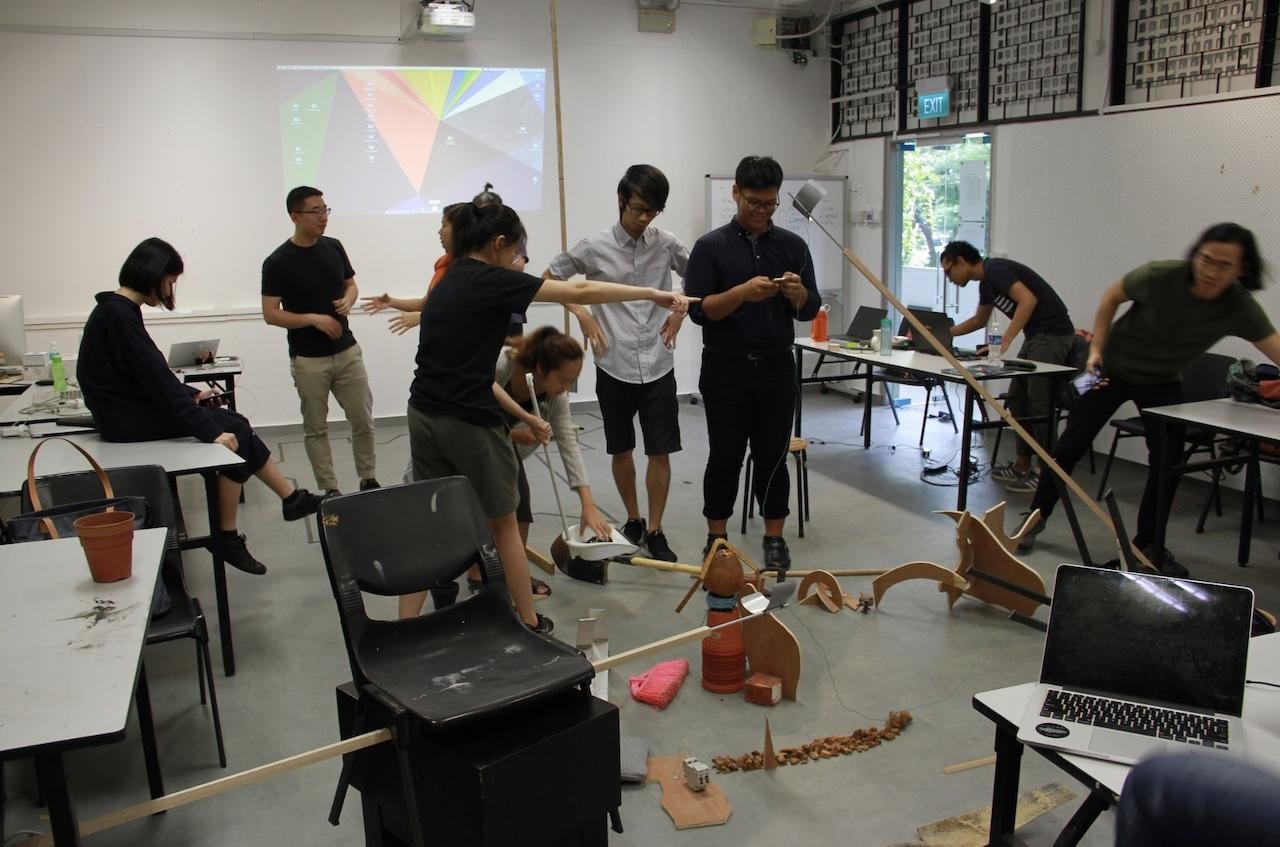
Reflective Experimenting
B-DC 332
Graduation Project
Computation in Design
23–24
Semester 1

Connecting
Informed Testing
B-DC 332
Graduation Project
Computation in Design
23–24
Semester 1


Connecting
Playful Prototyping
B-DC 332
Graduation Project
Computation in Design
23–24
Semester 1
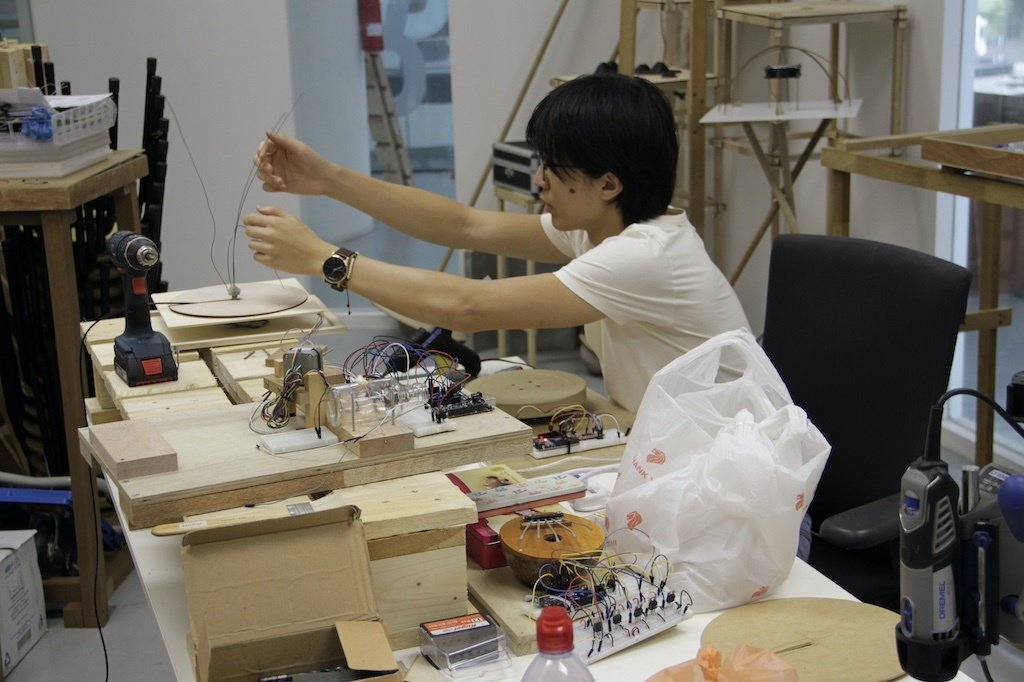

Connecting
Skilful Making
B-DC 332
Graduation Project
Computation in Design
23–24
Semester 1

Connecting
Together Exploring
B-DC 332
Graduation Project
Computation in Design
23–24
Semester 1
Enjoy what you are
making, be inspired to
inspire others.
B-DC 332
Graduation Project
Computation in Design
23–24
Semester 1
Computation in Design
Resources
Semester 1
Readings
Learning Portal
Useful tips
Research Seminars
Labs
Generative AI and ChatGPT
1
2
3
4
5
6
B-DC 332
Graduation Project
Computation in Design
23–24
Semester 1
Readings
1
Comprehensive list of Design relevant topics including Interaction Design, Design Research, Typography and more put together by Vikas.
Selected Computation in Design and Research related readings by Andreas.
Use library resources in the physical library as well as the e-library effectively.
B-DC 332
Graduation Project
Computation in Design
23–24
Semester 1
Useful tips
3
B-DC 332
Graduation Project
Computation in Design
23–24
Semester 1
Research seminars, week 3 and 5
4
On Weeks 3 and 5, Dissertation classes will be devoted to research seminars covering one of three methods/approaches:
1. Critical journal (Gideon)
2. Case studies (Vikas)
3. Interviews (Yasser)
Each student only needs to attend two of three seminars listed above. Seminars will be assigned after a sign-up process.
B-DC 332
Graduation Project
Computation in Design
23–24
Semester 1
ChatGPT works with algorithms and is trained to generate human-like text that can be used in conversation. It can answer questions, provide information, and engage in natural language discussions with users.
Some potential use cases for ChatGPT include customer service chatbots, virtual assistants, and conversational interfaces for websites or mobile apps. It can also be used to generate content for social media or create chatbot scripts for marketing or entertainment purposes.
Overall, ChatGPT is a powerful tool for creating chatbots that can have intelligent and engaging conversations with users.
23–24
B-DC 332
Graduation Project
Computation in Design
Semester 1
6
Generative AI and ChatGPT
Generative AI
AI models that can generate open-ended content, often creative content like visuals, music or text.
LLMs
Large Language Models, are advanced computer programs designed to understand and generate human-like text.
Prompting
AI chat prompting is a technique where a computer program provides suggested text or other outputs to help users engage in natural language conversations with AI or to generate creative outcomes like visuals for example.
Hallucination
AI hallucination refers to a situation where an AI system generates content that is not accurate or based on real information, often creating fictional or misleading outputs.
What is this about?
23–24
B-DC 332
Graduation Project
Computation in Design
Semester 1
6
Bias
Bias in AI refers to the presence of unfair or skewed representations and decisions made by artificial intelligence systems, potentially leading to unequal treatment or inaccurate conclusions.
Generative AI and ChatGPT
Acknowledging the use of generative AI in your work
For this assignment (Dissertation), you are allowed to use GenAI solely for certain functions, which will be explicitly stated. Any use of GenAI must be acknowledged. Some examples of what we might allow AI to be used for:
→ Create text that you'll then need to change to fit your specific situation or perspective
→ Summarise topics to give you a starting point for more in-depth research without using AI
Your writing must be your own.
Remember that you are in school to learn and become an independent learner and eventually an expert in your field of study and practice.
Generative AI tools can help you achieve your ideas, visions, futures, but keep in mind that the quality of your work is determined by talent, practice and knowledge.
23–24
B-DC 332
Graduation Project
Computation in Design
Semester 1
Generative AI and ChatGPT
6
Dissertation
B-DC323
You are free to use GenAI tools in any way that helps you in your learning for this class. However, any usage of GenAI must be properly acknowledged and communicated.
You need to provide a statement of use that clarifies what, if any, technologies you employed to create content while working on your assignment.
Remember that you are in school to learn and become an independent learner and eventually an expert in your field of study and practice.
Generative AI tools can help you achieve your ideas, visions, futures, but keep in mind that the quality of your work is determined by talent, practice and knowledge.
23–24
B-DC 332
Graduation Project
Computation in Design
Semester 1
Generative AI and ChatGPT
6
Acknowledging the use of generative AI in your work
Graduation Project
B-DC332
Weekly Schedule
We will meet on a weekly basis Tuesdays 9.30am and Thursdays 9.30am in D301. For the weekly schedule, click buttons below to be pointed to the weekly breakdown spreadsheets
B-DC 332
Graduation Project
Computation in Design
23–24
Semester 1
1
Cohort meets for dissertation introduction. Dissertation module, timeline, emphases, resources.
Cohort Briefing, Induction to the Module. Structure and Expectations: timeline, deadlines. Briefing on online repository.
Tuesday
Thursday
B-DC 332
Graduation Project
Computation in Design
23–24
Semester 1
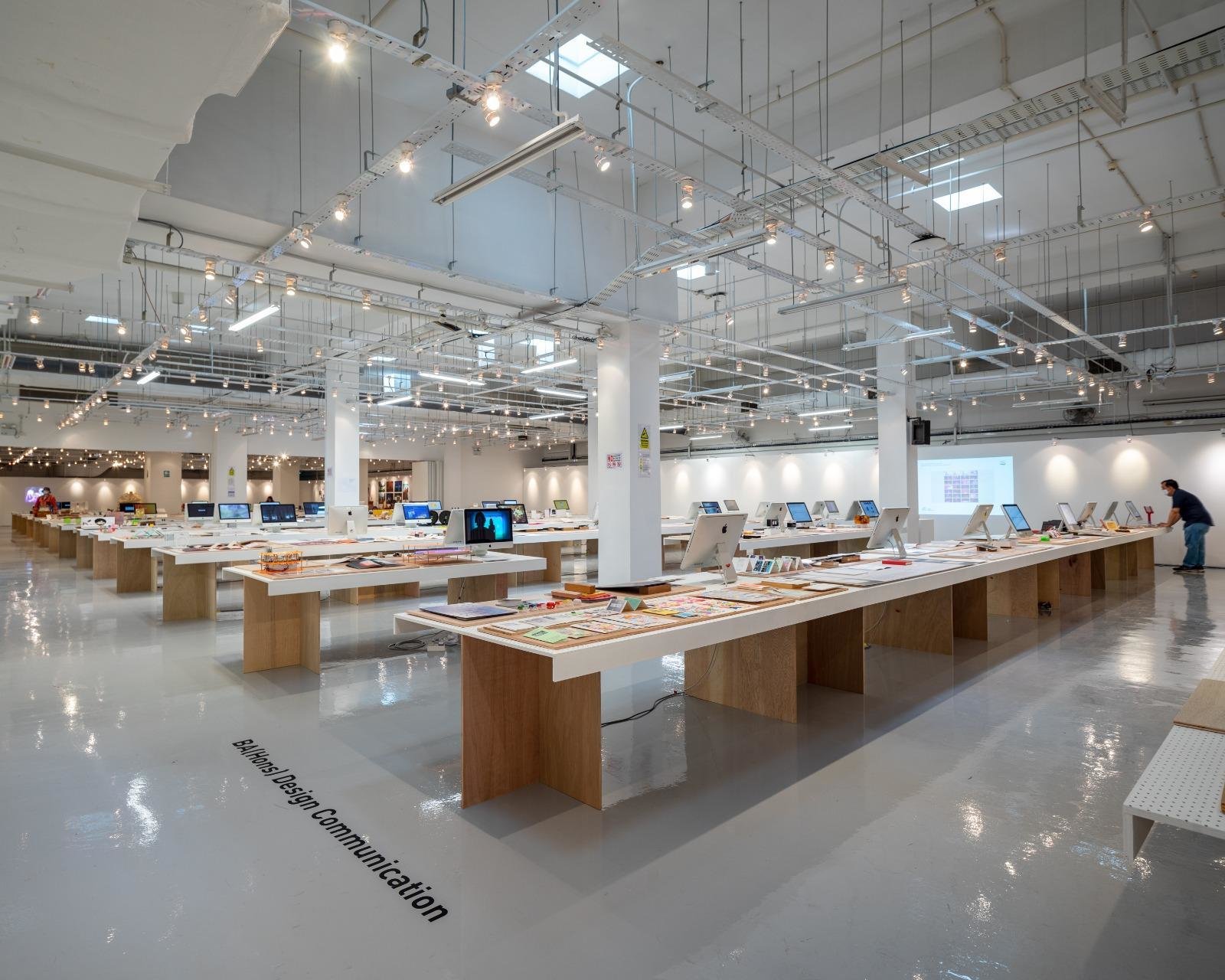
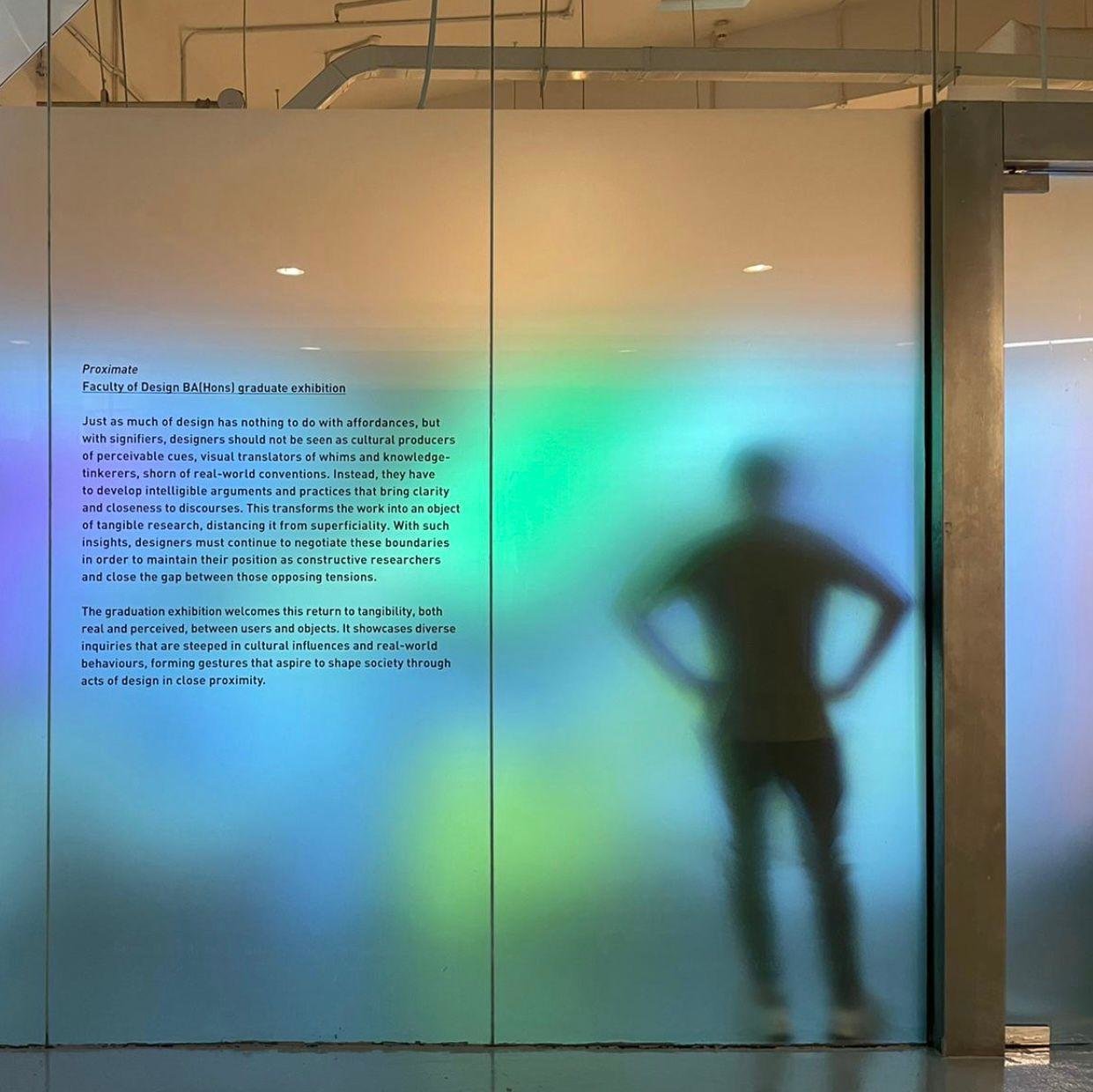
Graduation Projects, previous years.
B-DC 332
Graduation Project
Computation in Design
23–24
Semester 1
Marcus
Tanishqa
Siyoun
Ryan
Bryan
Attention Span in Brand Experience Understanding Cognitive Load and Attention Span for Brand Experience
Selected projects, 2024.
Creativity as a Commodity Speculating the future of the Creative Industries amid the increasing adoption of generative AI technologies.
Digital Stroll Revamping digital reading for Gen Z through tailored typography and enhanced readability.
Tangible Theater Exploring a new configuration of theater experience through tangible and interactive objects and non-linear narratives.
Artefacts of Fragmentation Provoking reflections on algorithm curation dilemmas through speculative artefacts
Richard
Exhibition beyond Immersive Augmented Reality An investigation into AR interactions within contemporary museums, with the aim of enriching a meaningful experience
Ly
Tactile Playgrounds Assistive navigational tools for visually impaired children
Cheryl
Sculpting Perceptions Exploring textures in digital-physical interaction bridging realms seamlessly.
Yi Shan
Antidotes for Bruised Creatives An exploration of translating displays of expressions to visuals
Momo
Motivation Makeover Cultivating motivation through a guided experience, one challenge at a time.
B-DC 332
Graduation Project
Computation in Design
23–24
Semester 1
Aditi
Rachel
Ellie
Ariel
Seoyeon
Interactive Signage. Exploring the design of interactive signages that interpret a neighbourhood’s identity through generative visuals.
Selected projects, 2023.
Ubiquitous Nuisance. A study on the effectiveness of soundwalk as a research tool to discover sources of urban noise in Singapore public parks.
Phygi Land is a global metaverse marketplace that showcases phygital collectibles
Selfscapes. Experiments into the potential of generative visuals as representations of online identities
Bio Interfaces. A speculative project that explores tangible human-plant interactions to reconnect with nature.
Farhan
ZeFuture. Why work hard when you can work smart? This project proposes interactive prototypes that will be taught through a series of workshops to encourage designers to become creative technologists
Matin
Positive Distractions enhances healing spaces with nature-inspired elements: greenery, water, and animals.
Aimee
Urban Plastisphere. Exploring the role of interactive artefacts in soliciting awareness of plastic pollution.
Sadhna
Farm to Fork Phenotype is a series of generative designed interactions utilising provenance and data of chicken to evoke appreciation of our food orgins, from birth to bone.
Sang Hee
Green Plus. Teaching your child eco-friendly habits. This Green + education kit proposes a fun way for kids to play, learn and take action through 4 steps.
B-DC 332
Graduation Project
Computation in Design
23–24
Semester 1
Azri
Matthew
Sing Hong
Wan Ying
Zeherng
Re:inventions of Eating investigates the potential of designed friction and engineered discomfort to suggest behavioural alternatives to our modern consumption habits.
Selected projects, 2022.
Title Sequence++ is a collection of experiments that begin to treat title sequences as ‘found material’, presenting iterations of how they could be manipulated beyond their immediate conceptualised form.
Listening Lab investigates the potential of sound experiences to re-examine our relationship with the man-made and natural soundscapes in Singapore.
Hello, I'm Here explores creative technology applications through an interactive and immersive installation.
Sonocular focuses on the visualisation of digital sounds, by rethinking the relationship between our senses of sight and hearing through sound visualisation.
Yi Qing
Crafted Objects is a reflective design and making project that explores the rise of digital fabrication and its effectiveness as a tool for craft production, in order to uncover possibilities for hybrid craft production.
Anushka
Clean Touch aims to help germaphobes feel safer in the post-pandemic world by creating a self-cleaning material out of lotus leaves.
Hannah
The New Exchange seeks to uncover what it means to be virtually present in a physical street dance battle and how social connectedness can be fostered within the street dance community.
B-DC 332
Graduation Project
Computation in Design
23–24
Semester 1
Research Repository
The research repository is a selection of documents that support your research. From this list of research documents you should present in brief outlines the key findings and insights that will support and help your research to progress.
Consider the repository as an archive of well organised and structured materials that allow you to present your research, findings, and insights to your supervisor in a comprehensive and clear overview.
Think of this repository as an accumulation of findings over time. Make it available online, ideally you create a website for it or negotiate other online formats with your supervisor.
You can start with an are.na links collection, or a miro or figjam board
The final repository should be organised in a website (cargo was used across all ateliers last AY, recommended to DIY this AY)
B-DC 332
Graduation Project
Computation in Design
23–24
Semester 1
2
24–25
B-DC 332
Graduation Project
Computation in Design
Semester 1
Tuesday
Thursday
Project presentations followed by group discussions.
Project presentations continue followed by group discussions.
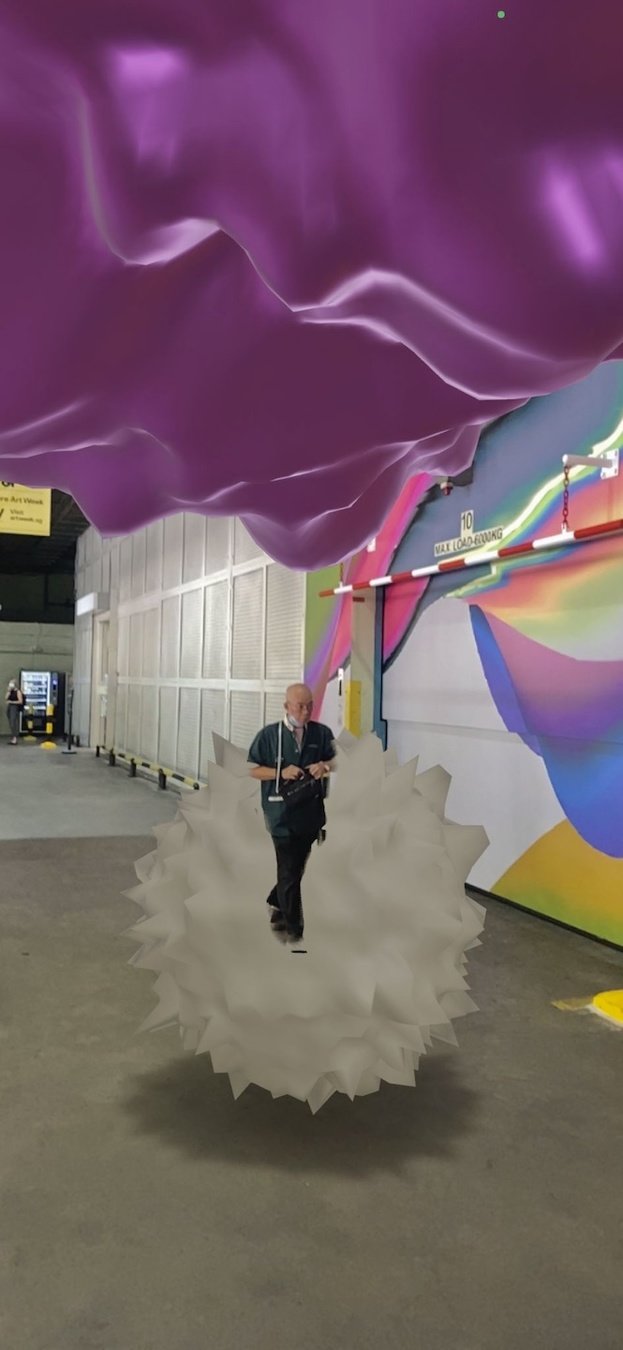
At the end of this week you should be able to start populating your CPJ, start organising your readings and your research proposal outline
B-DC 332
Graduation Project
Computation in Design
Semester 1
Tuesday
Week 2
At the end of this week you should be able to start populating your CPJ, start organising your readings and your research proposal outline
24–25
Presentations and discussion
B-DC 332
Graduation Project
Computation in Design
Semester 1
To start the semester we will hear from each of you where your current research is located and how it has progressed up until now. Based on the given slide deck structure each student will share the current state of their project in a 8 minutes long presentation.
1
2
3
4
5
6
7
8
9
Current state of research topic
Readings
Case studies
Current Knowledge of topic
Practice
Samples
Talent
Keywords
Portfolio sample(s)
24–25
B-DC 332
Graduation Project
Computation in Design
Semester 1

24–25
B-DC 332
Graduation Project
Computation in Design
Semester 1
You can tick all the boxes — the project, the design, the research still has to wow.
24–25
Subtitle of paper
Summary of readings
Research objective
References
Research Proposal Outline
B-DC 332
Graduation Project
Computation in Design
Semester 1
Include your references here and use the MLA format.
State one or two objectives (or purposes) of your research. At this stage, it helps to imagine an audience or user category that would benefit from your research and value your work.
You may draw from your Literature Review assignment from the previous semester for this section as it is relevant to the ‘literature review’ section of your dissertation later on.
Think of this as your initial or preliminary topic statement and your grasp of issues will be firmer once you have completed an initial round of scouting, sourcing or experimenting.
Appendix
Only if required
Title of paper
your title should be descriptive and concise. Descriptive titles convey the topic of your research so that readers immediately understand what your research is about.
Introduction
Start with or refer to the topic statement in your introduction. Provide a background to your area of research. Keep the scope of research manageable and don’t overreach.
1
2
3
4
5
7
8
Approach/methods
6
The choice of research method(s) should be informed by your research objective. Start with the three frameworks introduced to you: Critical Journal, Edited Interviews, Case Studies.
24–25
Research Proposal Outline
B-DC 332
Graduation Project
Computation in Design
Semester 1
The linked document should be of guidance for you to get started with your proposal. It is divided into two parts. The first part, Prepwork, makes suggestions about what to consider before even starting to look at the Research Proposal template. The second part looks at the Research Proposal.
Writing the Research Proposal should be seen as an iterative process and should start sooner rather than later. Consider starting with entering bullet points into the template first which can then, over time, translate into sentences and eventually into a well flowing arrangement of structured paragraphs.
24–25
Start putting together your Research Repository
The research repository is a selection of documents that support your research. From this list of research documents you should present in brief outlines the key findings and insights that will support and help your research to progress.
Consider the repository as an archive of well organised and structured materials that allow you to present your research, findings, and insights to your supervisor in a comprehensive and clear overview.
Think of this repository as an accumulation of findings over time. Make it available online, ideally you create a website for it or negotiate other online formats with your supervisor.
You can start with an are.na links collection, or a miro or figjam board
The final repository should be organised in a website, use your CPJ website if you are using the template
B-DC 332
Graduation Project
Computation in Design
Semester 1
24–25
B-DC 332
Graduation Project
Computation in Design
Semester 1
Thursday
Week 2
At the end of this week you should be able to start populating your CPJ, start organising your readings and your research proposal outline
24–25
Presentations and discussion continues
22–23
22–23
B-DC 332
Graduation Project
Computation in Design
Semester 1
To start the semester we will hear from each of you where your current research is located and how it has progressed up until now. Based on the given slide deck structure each student will share the current state of their project in a 8 minutes long presentation.
1
2
3
4
5
6
7
8
9
Current state of research topic
Readings
Case studies
Current Knowledge of topic
Practice
Samples
Talent
Keywords
Portfolio sample(s)
Creative Process Journal website template
At the end of this session we will look at the creative process journal website template.
Until then, organise your notes, images and other materials on your computer and transfer them over to your creative process journal when it is ready to be populated with your content.
B-DC 332
Graduation Project
Computation in Design
23–24
Semester 1
Research Proposal Outline
Begin with writing your Research Proposal outline based on the structure and details given in the presentation during the cohort sessions in week 1 and during the atelier session this week.
Use a Google Docs document and prepare it to be reviewed in our week 3 Tuesday session. Begin with your organising your reading, here use a spreadsheet to list your readings and keep track of important sections or sentences that your come across while reading. At the same time, prepare your literature review.
3
22–23
22–23
B-DC 332
Graduation Project
Computation in Design
Semester 1
Tuesday
Thursday

Workshops on Critical Journal, Interviews and Case Studies
Group Consultations
23–24
B-DC 332
Graduation Project
Computation in Design
Semester 1
Tuesday
Week 3
At the end of this week you should be able to start writing your Research Proposal Outline
First round of seminars on Critical Journal, Interviews and Case Studies
Tuesday week 3
23–24
B-DC 332
Graduation Project
Computation in Design
Semester 1
Slides from workshops
Genral framework slides
23–24
B-DC 332
Graduation Project
Computation in Design
Semester 1
Thursday
Week 3
First round of consultations in groups of 3, the schedule has been shared with you.
Thursday week 3
23–24
B-DC 332
Graduation Project
Computation in Design
Semester 1
4
Tuesday
Thursday
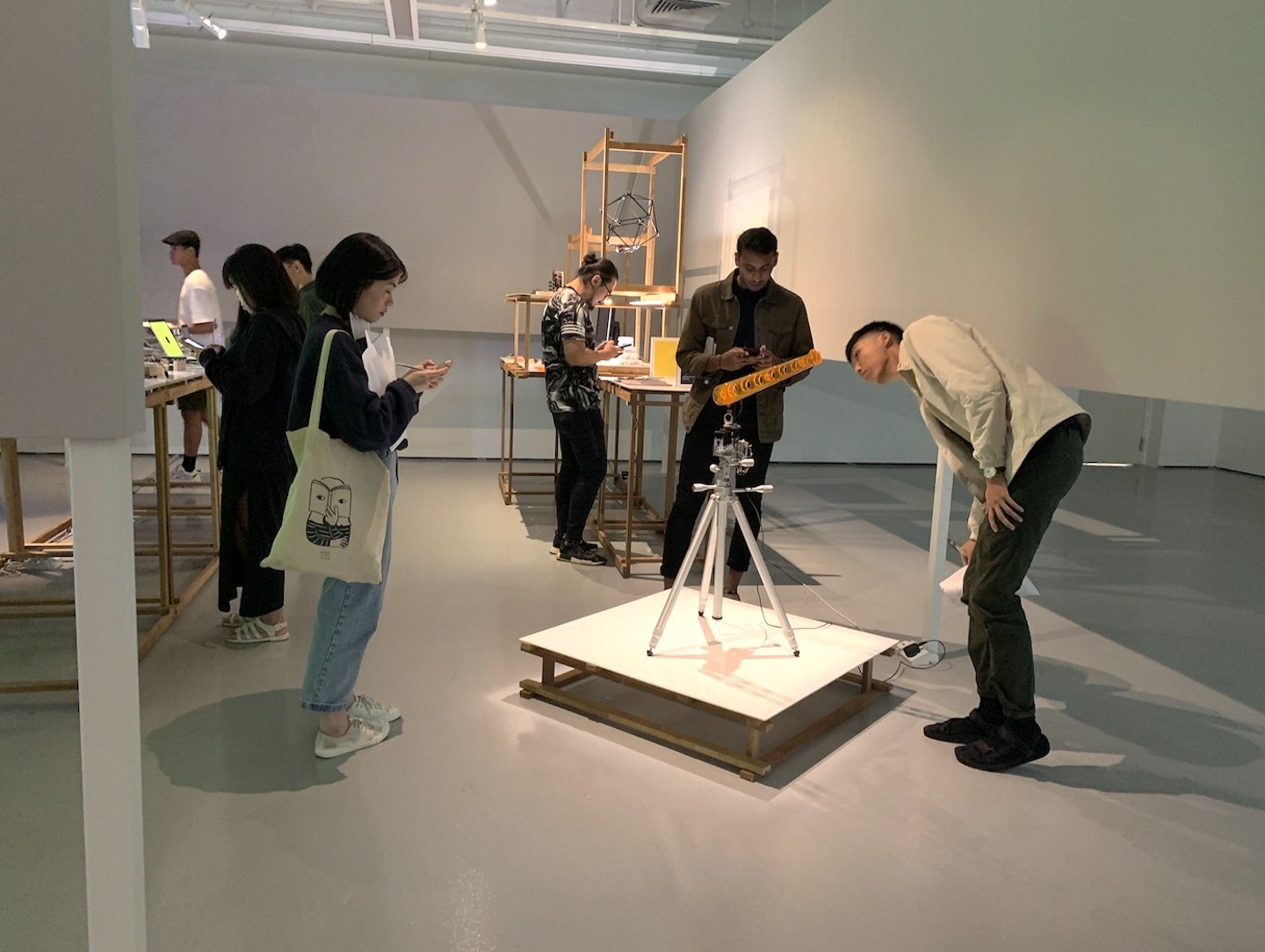
Workshop on Sketching and Experiments
Group Consultation: Research Proposal progress (title, subtitle, topic statement, introduction, summary of readings)
23–24
B-DC 332
Graduation Project
Computation in Design
Semester 1
23–24
B-DC 332
Graduation Project
Computation in Design
Semester 1
Tuesday
Week 4
At the end of this week you should be able to review your first RPO draft and make necessary changes so that you can meet the word count for each section when you share your next draft in Week 5
Group consultations to review the first draft of RPOs: the grouping remain the same as Thursday, Week 3.
Tuesday Session
Research Proposal Outline
23–24
B-DC 332
Graduation Project
Computation in Design
Semester 1
At this point, your Research Proposal Outline (RPO) must present an initial but indicatory coverage of the following sections:
— Title
— Subtitle, Topic Statement
— Introduction
— Summary of Readings
Write in bullet points or full sentences to cover the above sections. If you are able to cover
— Research Objective
— Approach/methods
Tuesday Session
Research Proposal Outline
23–24
B-DC 332
Graduation Project
Computation in Design
Semester 1
Content and Argument
Introduction and articulation of research questions and supporting arguments appropriate to the context of the proposed research.
Organisation of ideas and information demonstrated through appropriate literature review
Research Methodology
Breadth and depth of research.
Appropriate representation of research methodology and theoretical frameworks
Academic Referencing and Citation
Appropriate and consistent use of citations and references
Structure and Clarity
Express and interpret ideas and information effectively, using an appropriate written structure
Tuesday Session
Research Proposal Outline
23–24
B-DC 332
Graduation Project
Computation in Design
Semester 1
Research Pillar 2
It is recommended to organise your research into 3 pillars. This will help you to limit, compact and focus your research, literature review and discussion.
Research Pillar 1
Research Pillar 3
Tuesday Session
Week 4
23–24
B-DC 332
Graduation Project
Computation in Design
Semester 1
Think
About
World
Reader
Text
Write
Writing will be less about yourself but more importantly, about your readers. You write to think about the world, readers read your work to see the world through your writing and making.
Your work is the contribution of your findings to the body of accepted knowledge in your field. It is less about conveying your new knowledge or your ideas than it is about changing your readers ideas, thoughts, the way they think through your contribution–know your reader. It is not enough to know your subject matter. You got to know your readers.
World views
The reader
Use your writing process to help you with thinking and building your work.
Write to be valuable. Value is in the reader. This is, the reader values your writing because it is useful to them, valuable.
Value and valuable
Think and write
Has to make sense to you
Has to be valuable to your readers
Tuesday Session
Week 4
23–24
B-DC 332
Graduation Project
Computation in Design
Semester 1
Make your research and your project meaningful, valuable, and impactful to your audience.
Build connections between the knowledge that already exists and your own research and work.
It's not about you. This is the secret to your own work: understand that it is not about what's in your head.
In some ways, it's not even about what we see, read; what is on paper or on a screen. It's about what your writing, your designed outcomes are making happen in your audience's head.
objective over subjective views
Questions about methods came up during the consultation session and how they fit into the Critical Journal framework.
The Critical Journal framework will guide you through your research and practical work in a chronological and structured way. You will critically document, analyse, reflect and write about your making at different stages.
How will you make? Different milestones will be defined by using and applying relevant methods in the process.
Critical Journal Notes
For example in the beginning of your work you will conduct a series of experiments: Brainstorming, concept sketch, sensorial, empathy map, mash-up.
This is followed by more defined prototypes: such as for example (but not only) Prototyping, clickable prototype, workshop.
At certain stages you will need feedback which you can get through: Observation, testing. focus groups
Note that the above is only an example, but the methods are a good fit for a work that uses the critical journal framework, be selective though
23–24
B-DC 332
Graduation Project
Computation in Design
Semester 1
When you're working on your project and research, always ask yourself why it's important, why is it meaningful, who it's valuable for, who can benefit from it, and how.
Tuesday Session
Week 4
Critical Journal Notes
23–24
B-DC 332
Graduation Project
Computation in Design
Semester 1
When you're working on your project and research, always ask yourself why it's important, why is it meaningful, who it's valuable for, who can benefit from it, and how.
Tuesday Session
Week 4
The slides go through the requirements, methods and approaches in much detail, please review and study this resource carefully, it is a great guide to conduct your making, reflect and write about it in your dissertation.
Critical Journal Notes
23–24
B-DC 332
Graduation Project
Computation in Design
Semester 1
When you're working on your project and research, always ask yourself why it's important, why is it meaningful, who it's valuable for, who can benefit from it, and how.
Tuesday Session
Week 4
What are we searching for through practice and research? Some examples
Understanding a range of different practices–using one's own practice to contrast/compare those of other practitioners.
Being a catalyst in participatory action research where creative practice can actively involve, inform and inspire others.
Using the skills of the artist/designer to visualise and understand complex processes (perhaps in other fields)–making the invisible visible.
Providing knowledge transfer of mutual benefit between different 'worlds' of practice and research, for example art/design higher education and industry.
Critical Journal Notes
click image for conference proceedings
Sample Paper 1
Sample Paper 2
Sample Paper 3
Sample Paper 4
The selected papers on the right can give you a better idea of how a project can be presented in writing by critically documenting, analysing, reflecting one's research and practical work. Have a read and browser through the proceedings as well.
Tuesday Session
Week 4
23–24
B-DC 332
Graduation Project
Computation in Design
Semester 1
23–24
B-DC 332
Graduation Project
Computation in Design
Semester 1
Homework, due
Friday 8 September, 2pm
Update your RPO document, use the provided RPO template
Provide updated draft of your RPO with full sentences replacing bullet points
Cover all required RPO sections to your best knowledge
1
2
3
Thursday
23–24
B-DC 332
Graduation Project
Computation in Design
Semester 1
Week 4
Task, Activity, Experiment
Task A task typically has an objective, a goal like preparing a presentation or creating a moodboard to visualise a particular design you have in mind. You can set yourself small tasks that can become part of a larger thing or project. give yourself tasks that you can carry out confidently within a given time frame.
Activity Compared to a task, an activity is broader, more general but iterative. For example, write a coded sketch every day for the next 4 weeks. Or, you can attend a workshop or follow a tutorial to learn a new skill or technique, you can follow someone else's steps to become better at something, you can go on a field trip to collect new insights or data. Activities contribute to the development of the project.
23–24
B-DC 332
Graduation Project
Computation in Design
Semester 1
(Design) Experiment: A design experiment differs from a scientific experiment. A scientific experiment can mean to close down on options to try and find and to prove something, whereas for a designer a design experiment is about opening up about creating and generating unknowns and that’s a very different set of assumptions and approaches. An experiment here is process-based and helps to test ideas, methods and materials to explore possibilities and gain insights. The aim is to learn from the outcomes, regardless of whether they are successful or not, and to use this knowledge to refine your ideas and designs.
Sketching ideas and Experiments
This two-part workshop aims to address the importance of sketching your ideas when working on your writings and your practical work. Furthermore it looks at conducting experiments that then lead into developing your design prototypes.
23–24
B-DC 332
Graduation Project
Computation in Design
Semester 1
Part 1
Sketching ideas
At the beginning of each project, brainstorming, ideation, organisation and sense making of research materials are important tasks to set your project on the right path.
Visualising your thoughts and bringing your ideas to paper are often overlooked procedures that come with great value for you as the creator and your supervisor.
In today's session we will look at a few visualisation techniques to organise, communicate and develop ideas.
23–24
B-DC 332
Graduation Project
Computation in Design
Semester 1
Techiques
It seems we may have forgotten how to use pen and paper, we think that digital tools have comfortably replaced their physical equivalents. Scientific studies suggest that handwriting engages the brain more than typing.
A sketch can still be transferred from the physical to the digital, lets give pen and paper a chance and let's look at a number of sketching techniques to visualise your thoughts.
1
2
3
4
5
6
7
Notes
Sketch Notes
Sketching
Mood Boards
Mind Map
Concept Map
Timeline
23–24
B-DC 332
Graduation Project
Computation in Design
Semester 1
Techiques
Notes
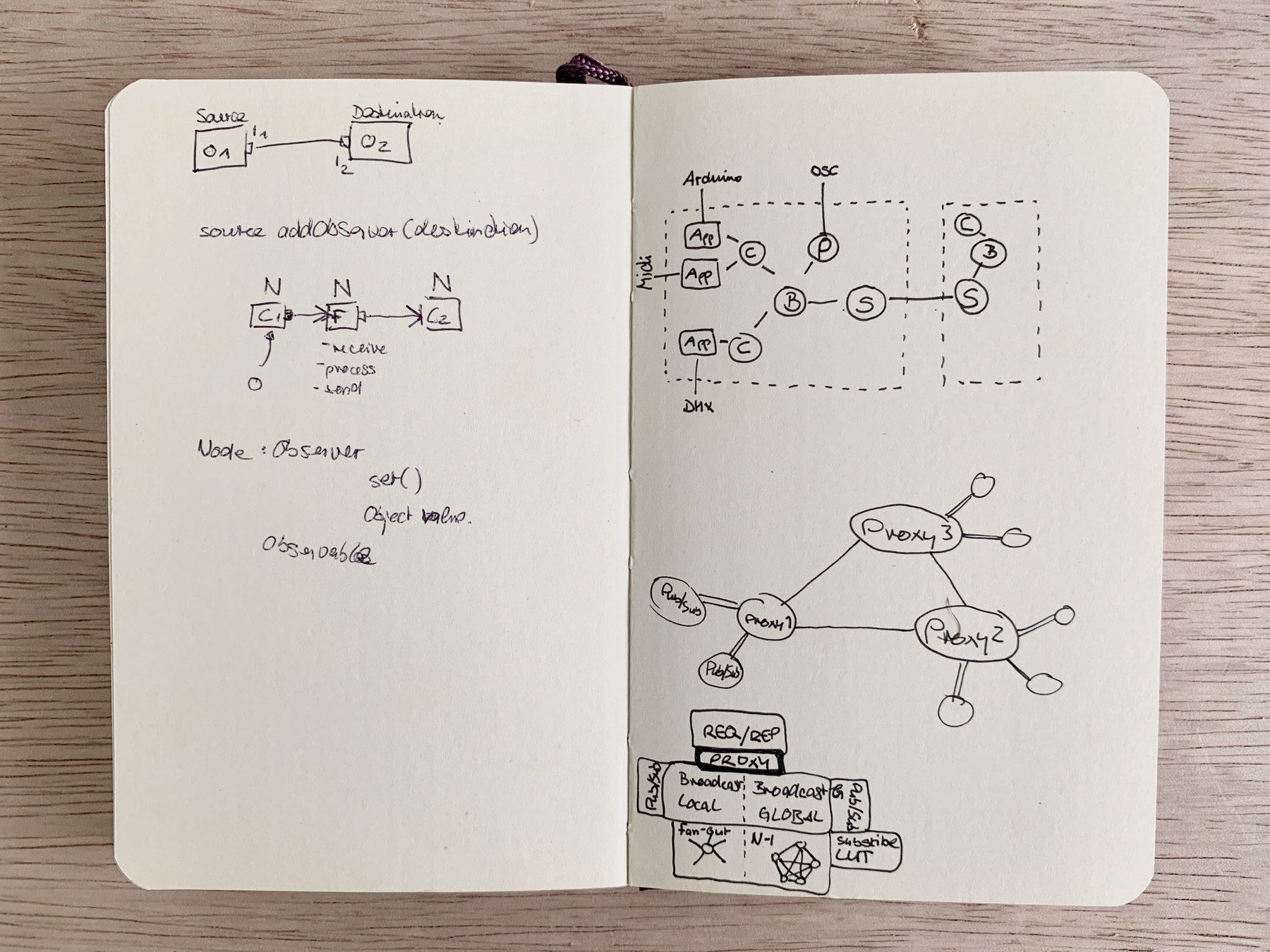
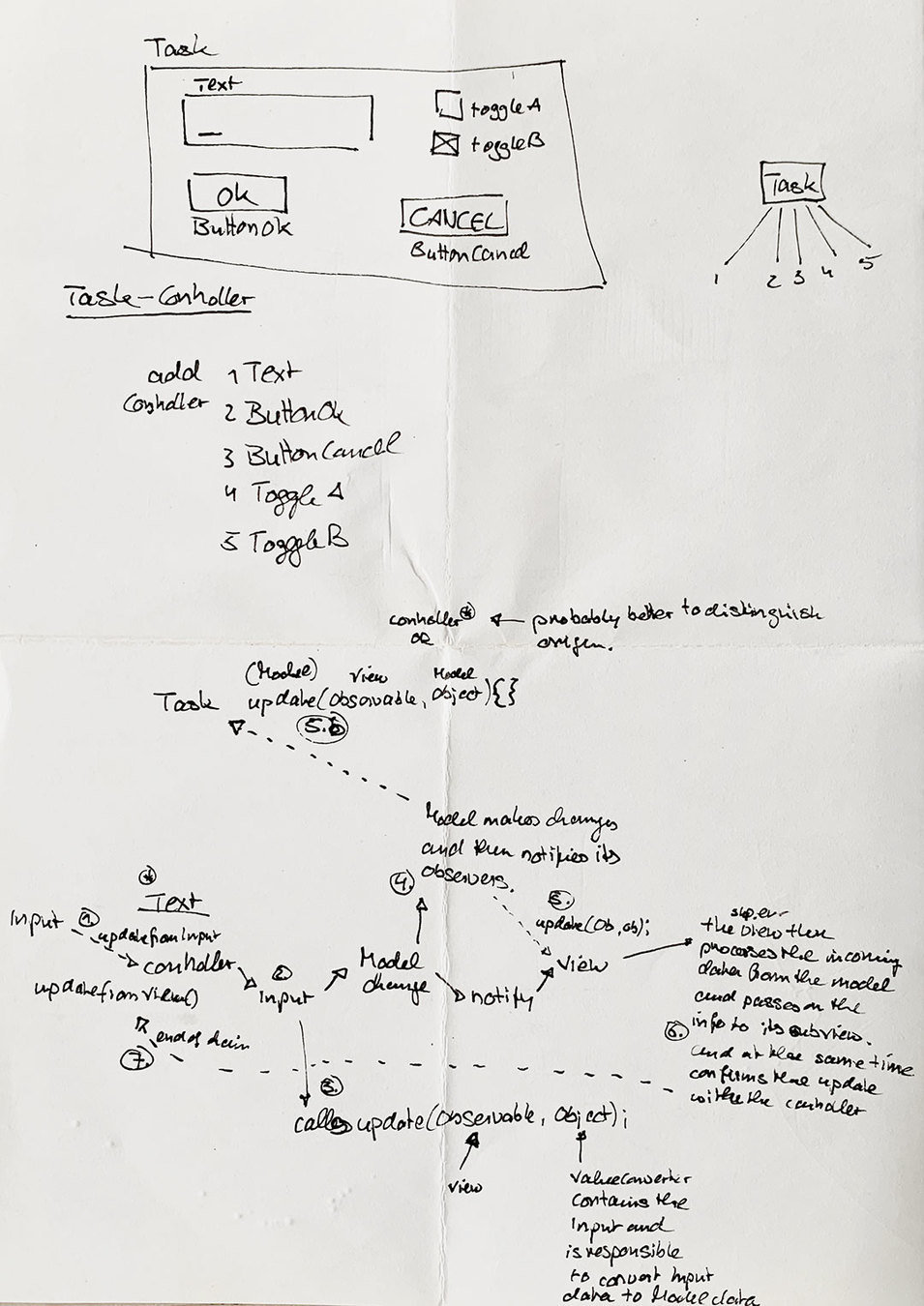
23–24
B-DC 332
Graduation Project
Computation in Design
Semester 1
Note taking is an activity that should allow you to better remember thoughts and information that you pick up on the way–which could mean while reading a book, listening to a lecture, having a conversation amongst many other occasions. There is a difference in taking notes on your devices by typing using your keyboard and taking notes in writing. Studies found that handwriting connects more visual and motor networks in the brain and helps you to better remember than typing on a keyboard.
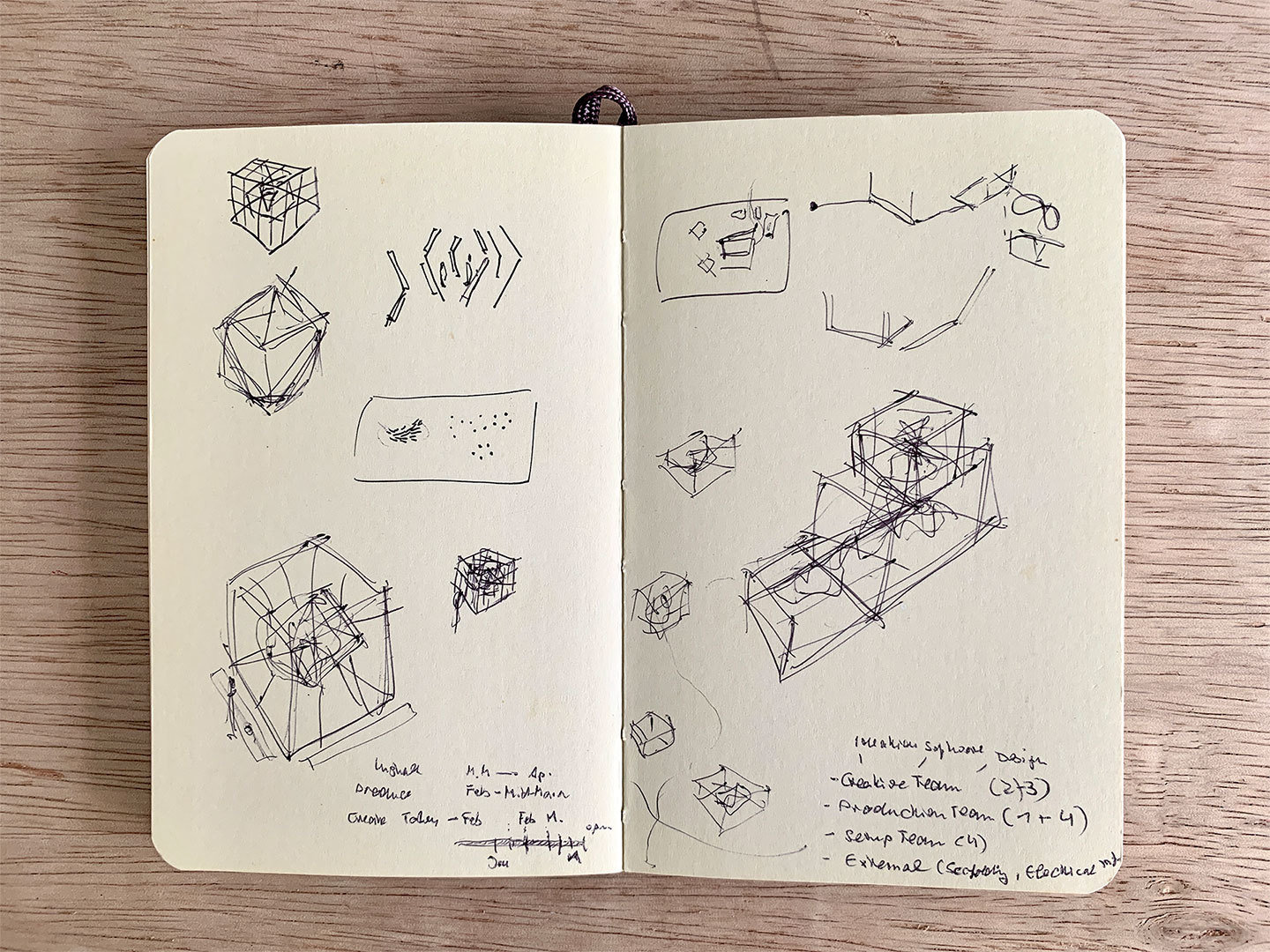
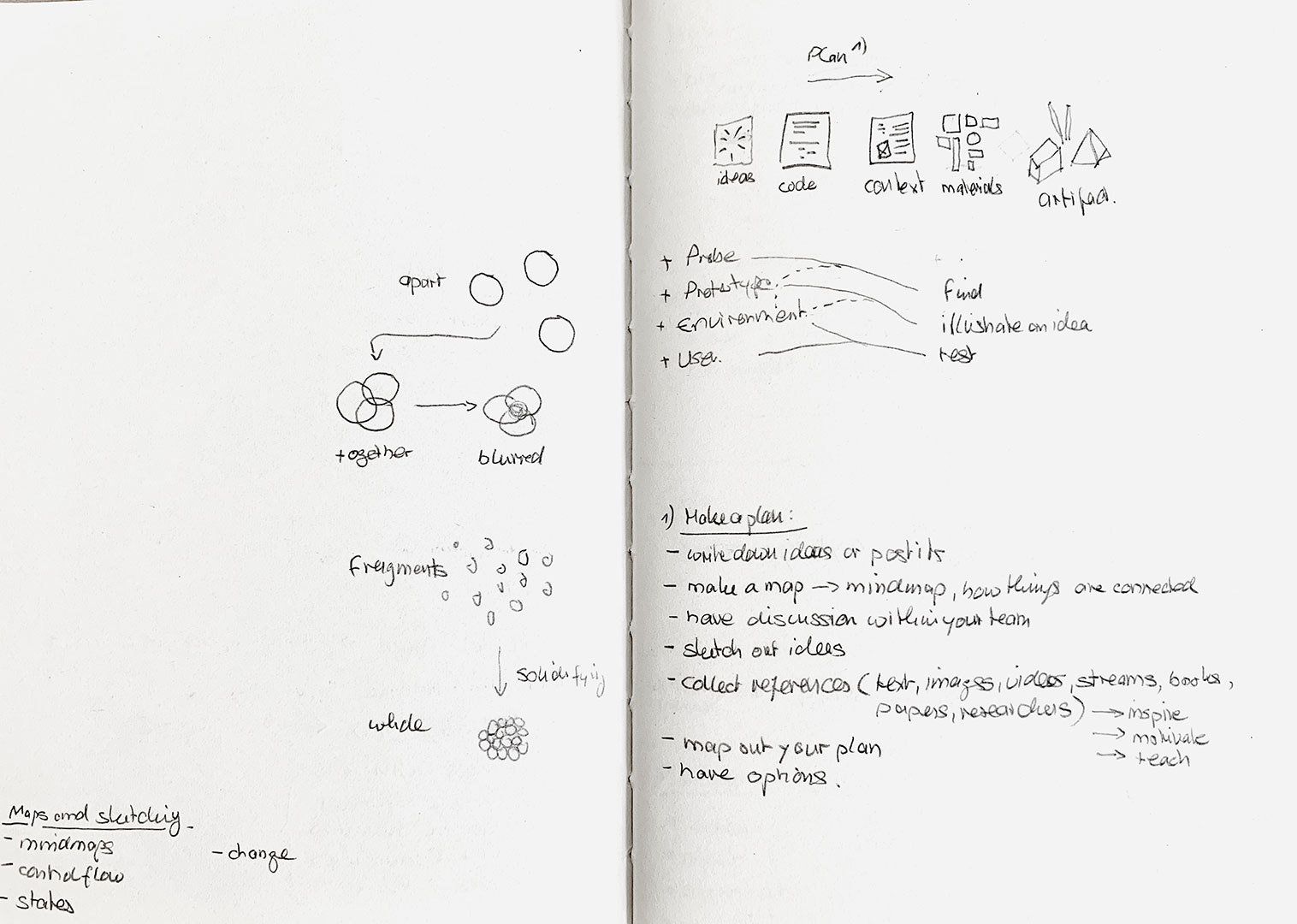
1
Techiques
Sketch Notes
23–24
B-DC 332
Graduation Project
Computation in Design
Semester 1
Sketch noting refers to a visual note taking technique through which one can record their thoughts while listening to others speaking for example during a presentation, podcast or a lecture. It is often a combination of visual elements like icons or illustrations and written keywords or short notes.
2


Techiques
Sketching
23–24
B-DC 332
Graduation Project
Computation in Design
Semester 1
Sketches are also excellent tools to communicate ideas to stakeholders and colleagues. The idea of sketching and drawing can be quite overwhelming for people with no training in design or art, yet it is possible to elaborate good sketches by using simple resources. such as basic shapes and lines. The effectiveness of sketches is neither linked to their artistic merit nor the need to conform traditional ideas of beauty. Successful sketches facilitate discussion, understanding and critique.
Rather than trying to verbalise what ideas are going to look like. they can be quickly represented through a sketch. By putting ideas on paper, they start becoming clearer, facilitating a generative dialogue between your thoughts and your sketch. The act of sketching creates a "back talk" (Schön. 1991) allowing for new meanings to emerge that can be explored through further sketching. As a result, ideas might end up being more comprehensive and creative.
3

Techiques
Mood board
23–24
B-DC 332
Graduation Project
Computation in Design
Semester 1
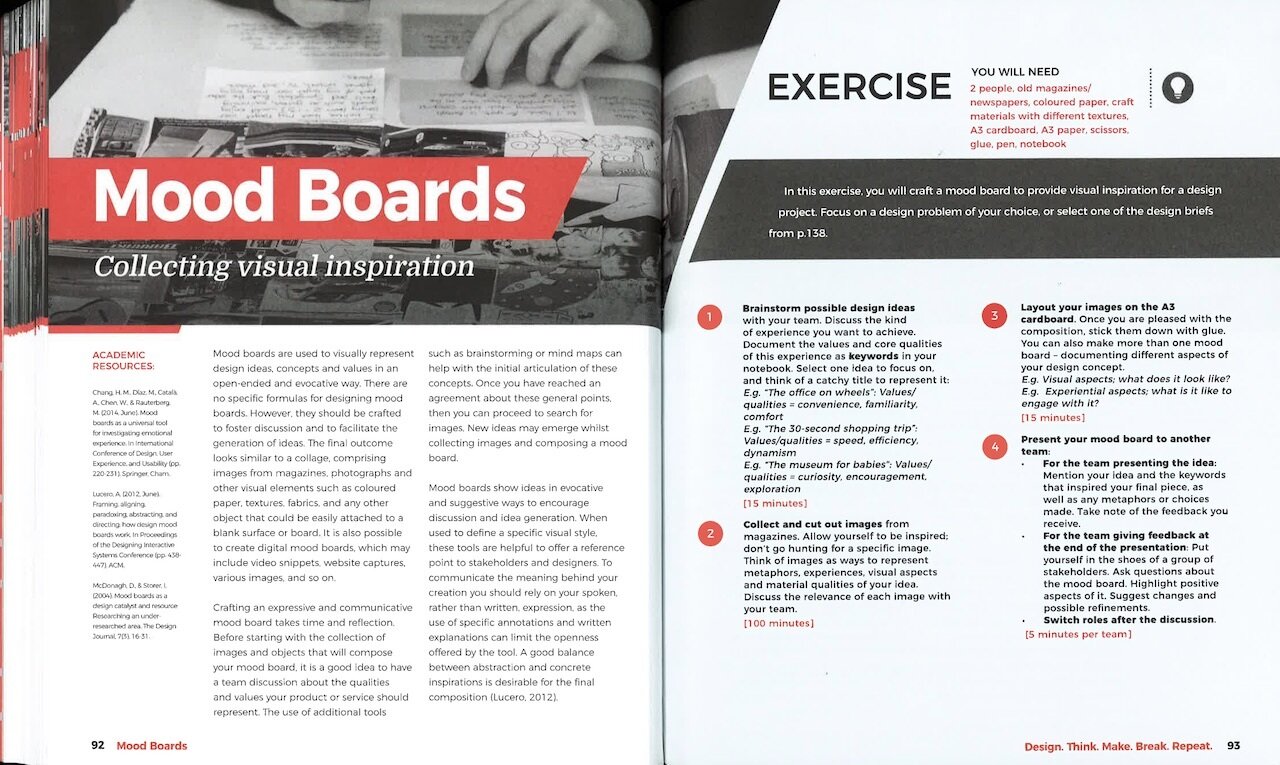
Mood boards are used to visually represent design ideas, concepts and values in an open-ended and evocative way. There are no specific formulas for designing mood boards. However, they should be crafted to foster discussion and to facilitate the generation of ideas. The final outcome looks similar to a collage or grid-based arrangement, comprising images found in various media. Mood boards show ideas in evocative and suggestive ways to encourage discussion and idea generation When used to define a specific visual style, these tools are helpful to offer a reference point to stakeholders and designers.
4
Techiques
Mood board
23–24
B-DC 332
Graduation Project
Computation in Design
Semester 1
Mood boards are used to visually represent design ideas, concepts and values in an open-ended and evocative way. There are no specific formulas for designing mood boards. However, they should be crafted to foster discussion and to facilitate the generation of ideas. The final outcome looks similar to a collage or grid-based arrangement, comprising images found in various media. Mood boards show ideas in evocative and suggestive ways to encourage discussion and idea generation When used to define a specific visual style, these tools are helpful to offer a reference point to stakeholders and designers.
4
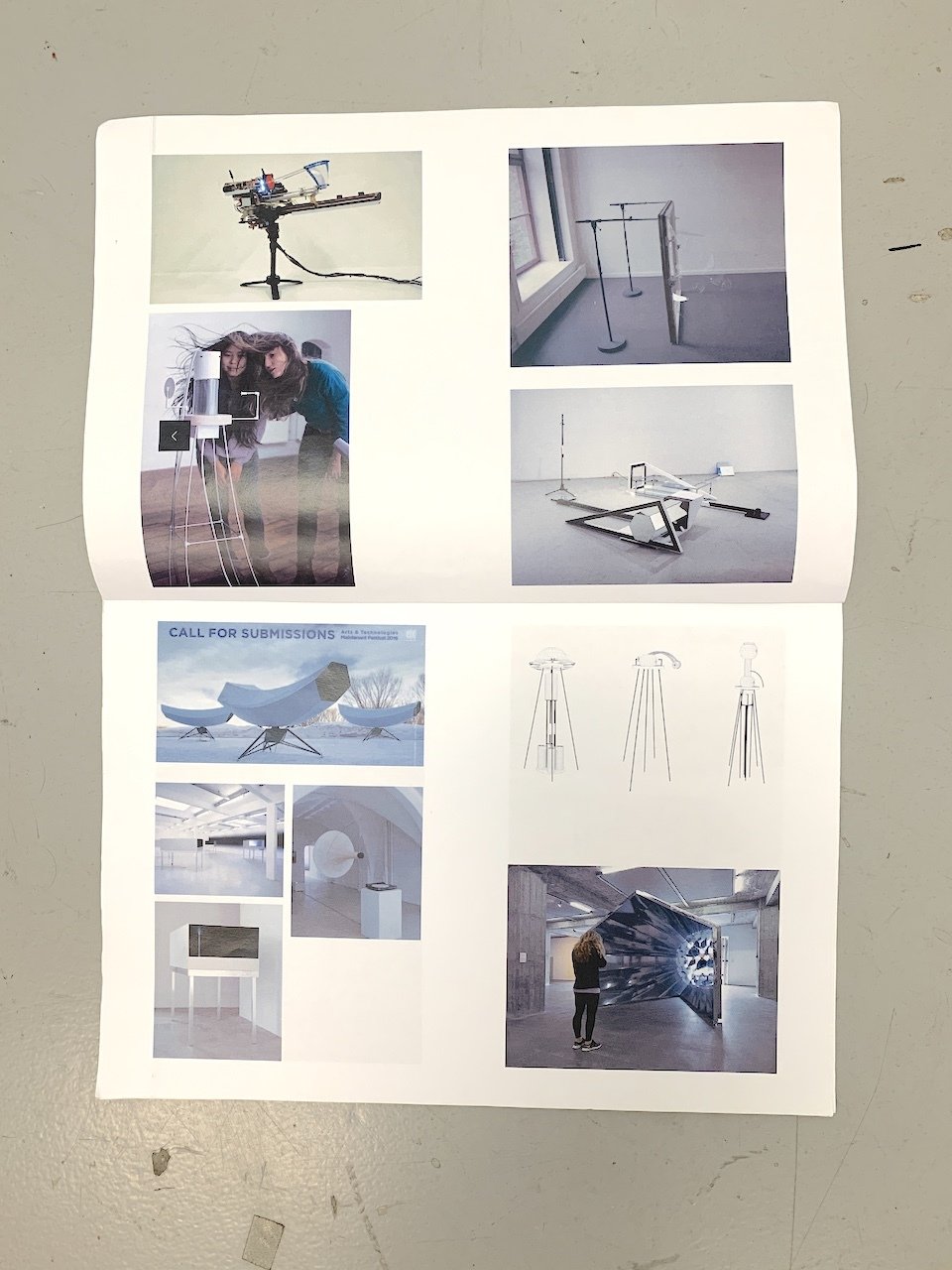
Techiques
Mind map
23–24
B-DC 332
Graduation Project
Computation in Design
Semester 1
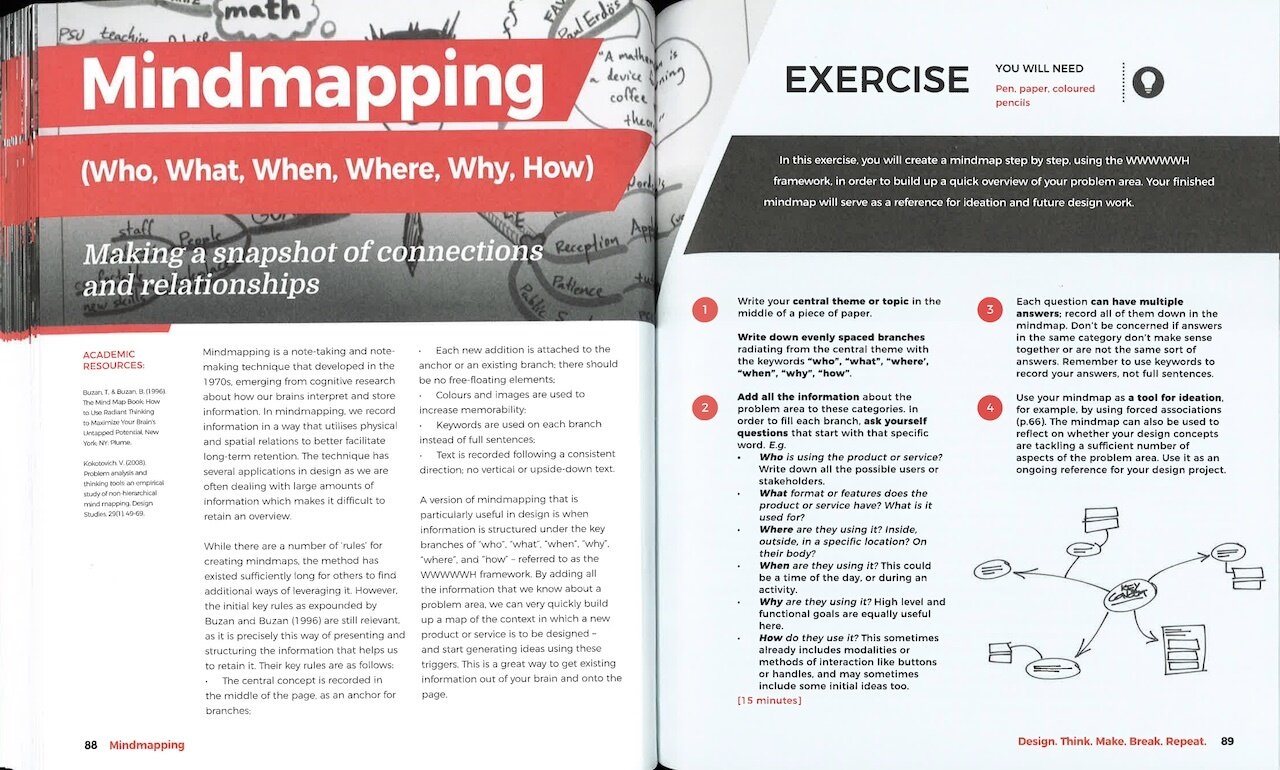
Mind mapping is a note-taking and note-technique that developed in the 1970s, emerging from cognitive research about how our brains interpret and store information in mind mapping. we record information in a way that utilises physical and spatial relations to better facilitate long-term retention. The technique has several applications in design as we are often dealing with large amounts of information Which makes it difficult to retain an overview.
Mind maps are hierarchical maps and branch out from a central concept. Hierarchy here refers to making links between words in that each addition to the mind map is of lesser importance than the previous one.
5
Techiques
Concept map
23–24
B-DC 332
Graduation Project
Computation in Design
Semester 1
Concept maps are a powerful tool for identifying relationships among ideas. Understanding these relationships and depicting them visually can help you learn research materials at a much deeper level and retain it better, too. Concept maps are highly personalised and provide an opportunity to organise research material in a way that makes most sense to you.
Concept mapping is a technique to graphically represent conceptual structures. For example, a student may construct a concept map as part of their revision, to help them identify links within a topic, and as a form of 'active learning' (where the student has to actively rework material, rather than just reading or copying their notes). Students could be ask to compare maps and disucss any substantive differences.
6
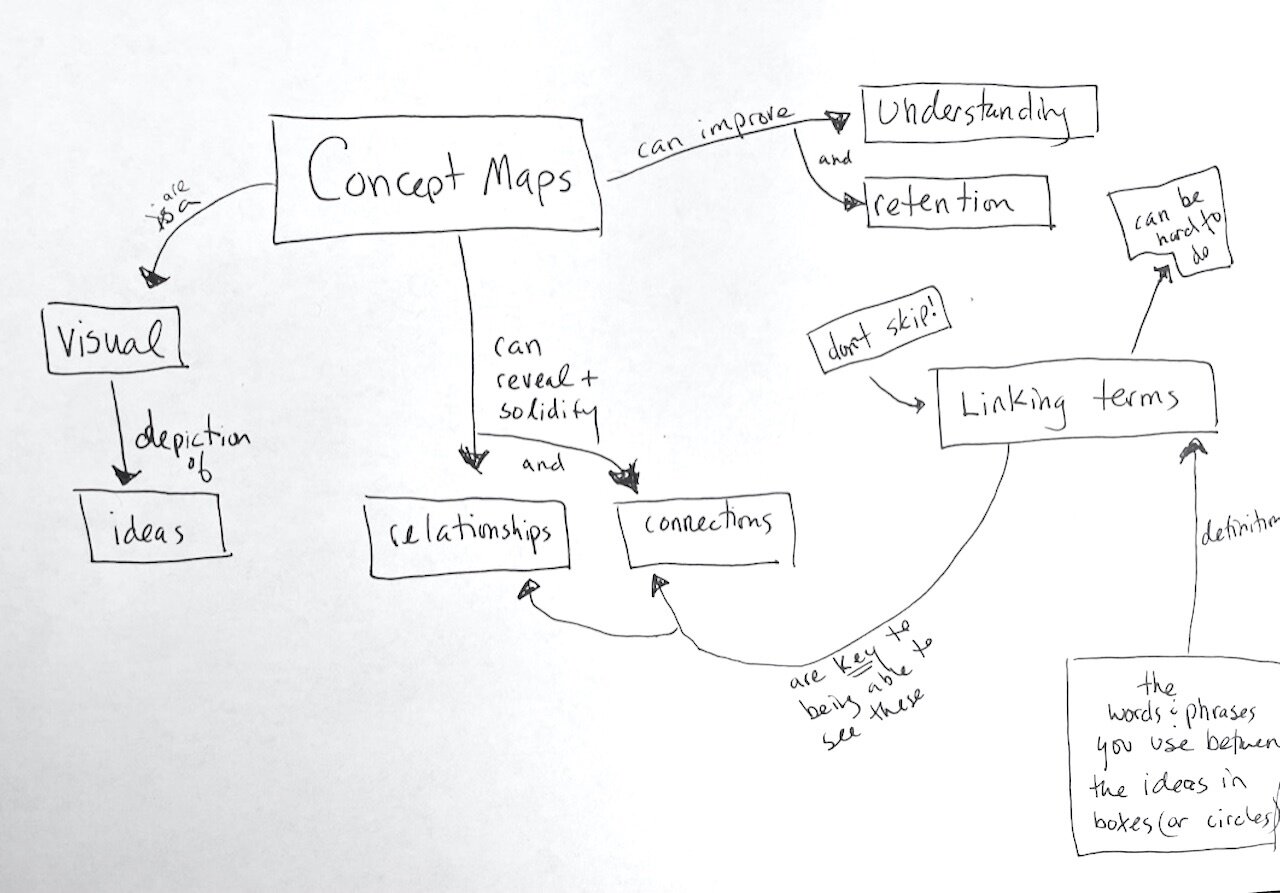
Techiques
Mind map vs concept map
23–24
B-DC 332
Graduation Project
Computation in Design
Semester 1
A concept map gives the relationship between individual ideas, words, or images that create a bigger picture. They depict requirements, cause and effect, and contributions between items. Concept maps are the best tool for developing logical thinking, breaking down complex systems, and understanding specific ideas' roles within more prominent topics.
A concept map connects many ideas or concepts, while mind maps focus on one idea. Conceptual maps have tree structures of many branches and clusters, whereas mind maps have a radial configuration. The links of a concept map are labeled to represent the connection type with an ancestor node. Mind maps have arrows that describe the relationship with ancestor nodes.
A mind map is a diagram in which a visual representation of the central idea is placed in the middle and related ideas arranged around it. It depicts its creator's view about a particular issue or topic.
Techiques
Timeline
23–24
B-DC 332
Graduation Project
Computation in Design
Semester 1
From an article by Katie McCurdy, Sketchy timelines: your personal and professional secret weapon:
Why am I sharing with you something so seemingly elementary and basic, so rudimentary that a child could draw it? Here’s why: every time I draw a timeline like this in meetings or with groups, it seems to help calm people down and get them all on the same page. When I draw a timeline like this for myself, it makes me feel more organised, prepared and in-control. I don’t see a lot of other people drawing ‘sketchy’ timelines like this, and I’m not sure why — perhaps they’re uncomfortable with the free-form nature of a blank page or whiteboard.
7

Exercise 1
Sketch a timeline
23–24
B-DC 332
Graduation Project
Computation in Design
Semester 1
Based on the duration of your graduation project and the necessary milestones, draw out an initial timeline for your project including your practical work and your dissertation
15

Exercise 2
Based on your current research, create a concept map
23–24
B-DC 332
Graduation Project
Computation in Design
Semester 1
From our discussions from Tuesday, visualise your current research. For example, use your 3 research pillars as a starting point and draw a concept map to connect concepts and ideas that you are currently exploring.
20

Exercise 3
Making sense of Encounters reflection
23–24
B-DC 332
Graduation Project
Computation in Design
Semester 1
20
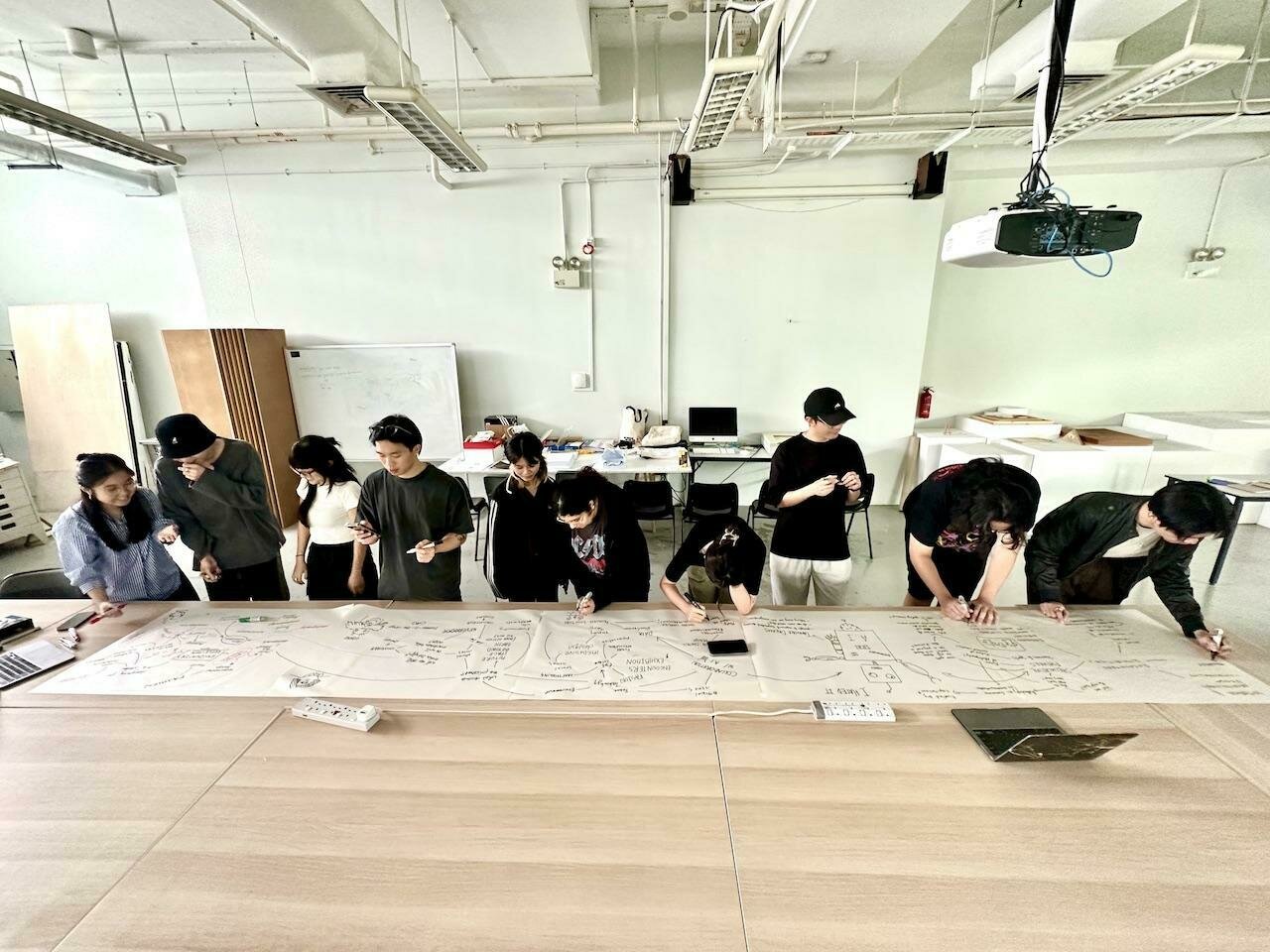
Part 2
Experiments
22–23
22–23
B-DC 332
Graduation Project
Computation in Design
Semester 1
This second part of this workshop session looks at experiments from different angles. What could experimenting and experimental mean at different stages of a design research project?
The intention is to give you some initial pointers to make small things (quickly), experiments that test an idea and get you into the mode of making.
In the following we will look at experimental, experimentation, experiments through the lenses and fragments taken of different resources. There is no standard definition of what an experiment ought to be, but rather different perspectives and applications.
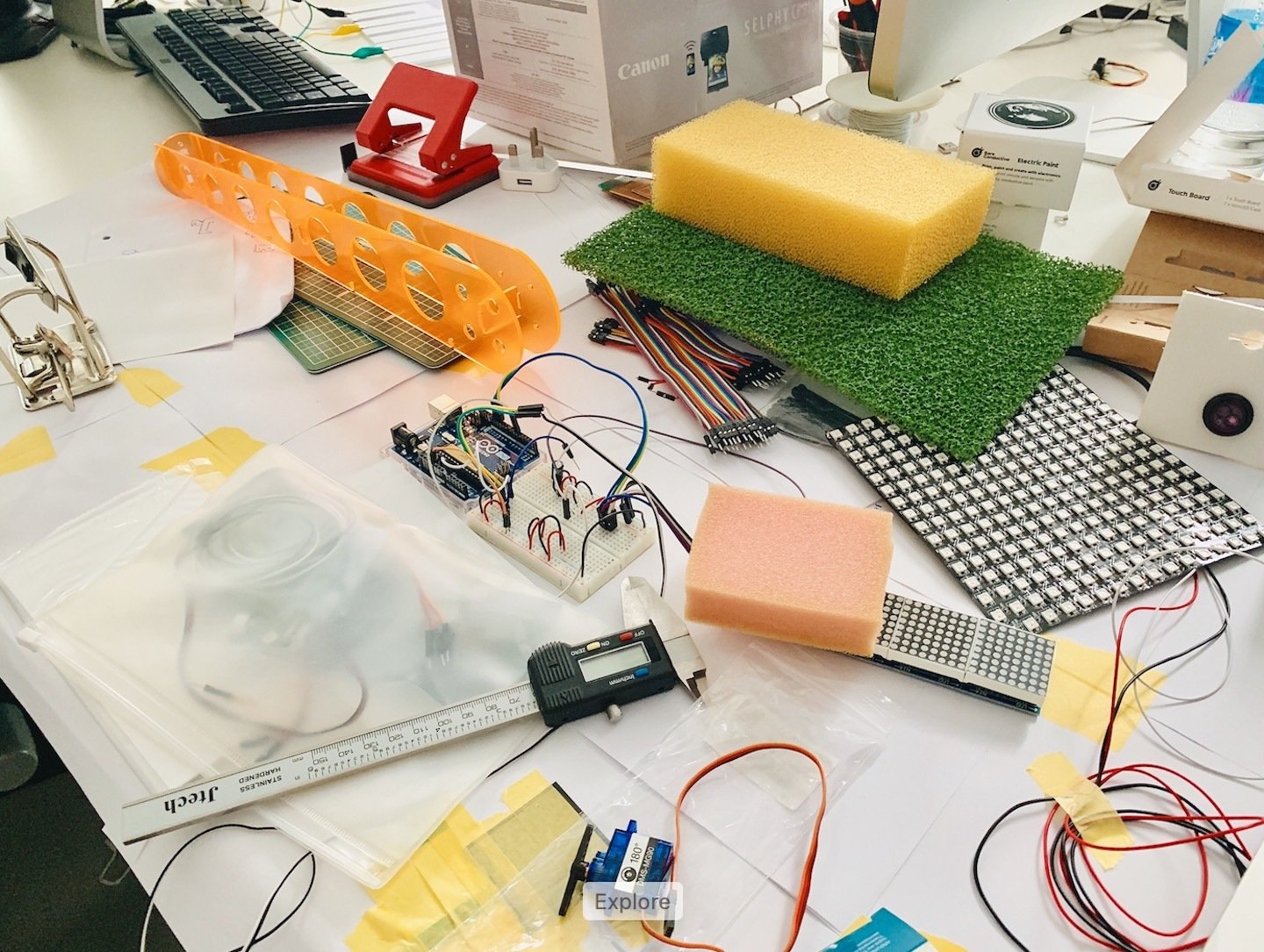
Part 2
Experiments
22–23
22–23
B-DC 332
Graduation Project
Computation in Design
Semester 1
Experiment(ing)
Prototype(ing)
Experiments
22–23
22–23
B-DC 332
Graduation Project
Computation in Design
Semester 1
The advanced quality of experimentation is based on the fact that experimentation always changes situations, correlations, and conditions. Experimentation never takes anything as a given fact, rather, anything is open to change.
That is: experimentation is both confusing and normal. Experimentation does not accept that rules and regulations are fixed. And experimentation is able to see mistakes and misunderstandings as potential qualities for innovation and for developing new perspectives.
Quoted from
22–23
22–23
B-DC 332
Graduation Project
Computation in Design
Semester 1
In academia, thought experiments are broadly understood as “devices of the imagination used to investigate the nature of things.” They derive their authority from following the principles used in physical experimentation.
Dunne and Raby argue that the strength of the analogy between thought experiments and speculative design stems from a property shared by both concepts: they allow us to imaginatively investigate possibilities, which permits us “to step outside reality for a moment to try something.” The analogy has since persisted in the field and is also present in art.
to step outside reality for a moment to try something
Experiments
Fragment 1
Link
Keywords
Experiments
22–23
22–23
B-DC 332
Graduation Project
Computation in Design
Semester 1
Experiments and prototypes often overlap in meaning and application, depending on the domain in which they are used. An experiment may be beyond the scope of a prototype, and the prototype becomes part of the experiment. Experiments are often tests with a specific number of parameters or variables, where the goal is to find the best result based on the constellation of parameters.
An experiment in the broader sense may also refer to practicing by trial and error, trying and testing the unknown, and learning through a process of approximation and correction until a satisfactory state is reached. This state may mean that a particular problem has been solved, or that a state of beauty has been achieved, or some other form of successful (or possibly unsuccessful) result.
Trial and error, trying and testing the unknown, learning through a process of approximation and correction.
Fragment 2
This can be a great approach when creative-coding, try it out starting from these sketches
Links
22–23
22–23
B-DC 332
Graduation Project
Computation in Design
Semester 1
By using controlled experiments, you can either prove or disprove your assumptions in their real context and thus further refine, or even abandon, your initial idea.
One of the best ways to learn about the positive and negative dynamics of your solutions is to take physical action, by experimenting with and exploring potential solutions. When you prototype, you bring your ideas onto a tangible plane, which will enable you and your team to see and discuss the pros and cons, to learn from users’ feedback, and to create little opportunities for creative serendipity. So, stop thinking, and start doing now.
Testing Ideas, a hypothesis, early on.
Interaction Design, UI, UX, user-feedback
Experiments
Fragment 3
Link
Keywords
22–23
22–23
B-DC 332
Graduation Project
Computation in Design
Semester 1
Well prepared design methods or the next toolkit will not save anyone from collecting experiences in experiments that could provoke conflicts and will confront ourselves with our own presumptions.
Participatory Design, making, co-creation, feedback
Experiments
Fragment 4
Link
Keywords
22–23
22–23
B-DC 332
Graduation Project
Computation in Design
Semester 1
Experimental prototyping sounds fancy. In reality it means constructing your designs and prototypes as an experiment, with hypotheses that can be disproved or validated. I like the tension between the common conception of experimental design, and the practical application of design experiments. On the one hand, we are engaging in an experiment. On the other hand, we are working in an ambiguous, nonscientific field of design. Our designs are not held to the same rigorous review as a scientific experiment.
This experiment strives for consistent methods and variables, and a testable hypothesis. On the other hand, we are working in an ambiguous, nonscientific field of design. Our designs are not held to the same rigorous review as a scientific experiment. What we can learn from these experiments gives us increasingly deeper knowledge about the experiences and products we design.
UI, UX, experiences mostly screen based, testing, feedback
Our designs are not held to the same rigorous review as a scientific experiment.
Experiments
Fragment 5
Link
Keywords
22–23
22–23
B-DC 332
Graduation Project
Computation in Design
Semester 1
The experimental design agenda is primarily exploration, experimentation, and discovery, where the process can be more important than its outcome. In its purest form, it is not driven by an overly specific end-goal of application but rather by curiosity or a question.
Its value tends to lie in what is learned in the process of designing rather than in the merits of the final artefact itself—often it is just a symbol or evidence of the process or potential. Typically, it is an inquiry into, for example, a technology, a manufacturing technique, a material, a concept, a context, or an aesthetic issue. Experimental design can be done as a form of design research, to test a hypothesis, or to learn something.
Where the process can be more important than its outcome.
Experiments
Fragment 6
Link
Keywords
22–23
22–23
B-DC 332
Graduation Project
Computation in Design
Semester 1
Based on your interest and the nature of your work and project, which of the six experiment fragments would be most suitable to undertake an experiment over the next six days?
Experiments
Activity
Document your experiment in your Creative Process Journal. We will look at your outcomes in our next Thursday sessions
1
Start with sketching out your ideas.
2
3
Experiments 1, moving on to Experiments 2
22–23
22–23
B-DC 332
Graduation Project
Computation in Design
Semester 1
For next week's class come prepared with an experiment based on your own research, for example address one aspect of your current work as an experiment.
Select one or more methods from the list of methods in the "Additional Research Proposal materials" document to apply and conduct in class. Take time before class to prepare appropriately so that you can conduct your experiment right at the beginning of class.
Homework
Experiments 1
22–23
22–23
B-DC 332
Graduation Project
Computation in Design
Semester 1
Working in pairs, you were asked to choose one of the given fragments presented as a starting point to develop an experiment motivated by your current research. In class you discussed ideas and you should have started making by just doing and get going. Often this is easier said than done.
Feedback was given to you individually or in smaller groups. It was important that you did not overthink but start with the most obvious or curious question.
Did you document the process?
Recap
Experiments 2
22–23
22–23
B-DC 332
Graduation Project
Computation in Design
Semester 1
For this week's class you prepared an experiment based on your own research.
You selected one or more methods from the list of methods in the "Additional Research Proposal materials" document to apply and conduct in class. We will begin class with conducting your experiments.
Activity
Let's just get started.
Document the process with photos, video and written notes–then add to your CPJ.
Experiments 2
22–23
22–23
B-DC 332
Graduation Project
Computation in Design
Semester 1
Why did we conduct this workshop on Experiments?
The main objective was to get you into making-mode. In the beginning this is often an uncomfortable undertaking: Why should I do this? What should I do? What am I supposed to do? Am I doing it right?
Now at this point you should be more confident to have answer to the above questions. We move forward from here.
Debrief
5
B-DC 332
Graduation Project
Computation in Design
Tuesday
Thursday
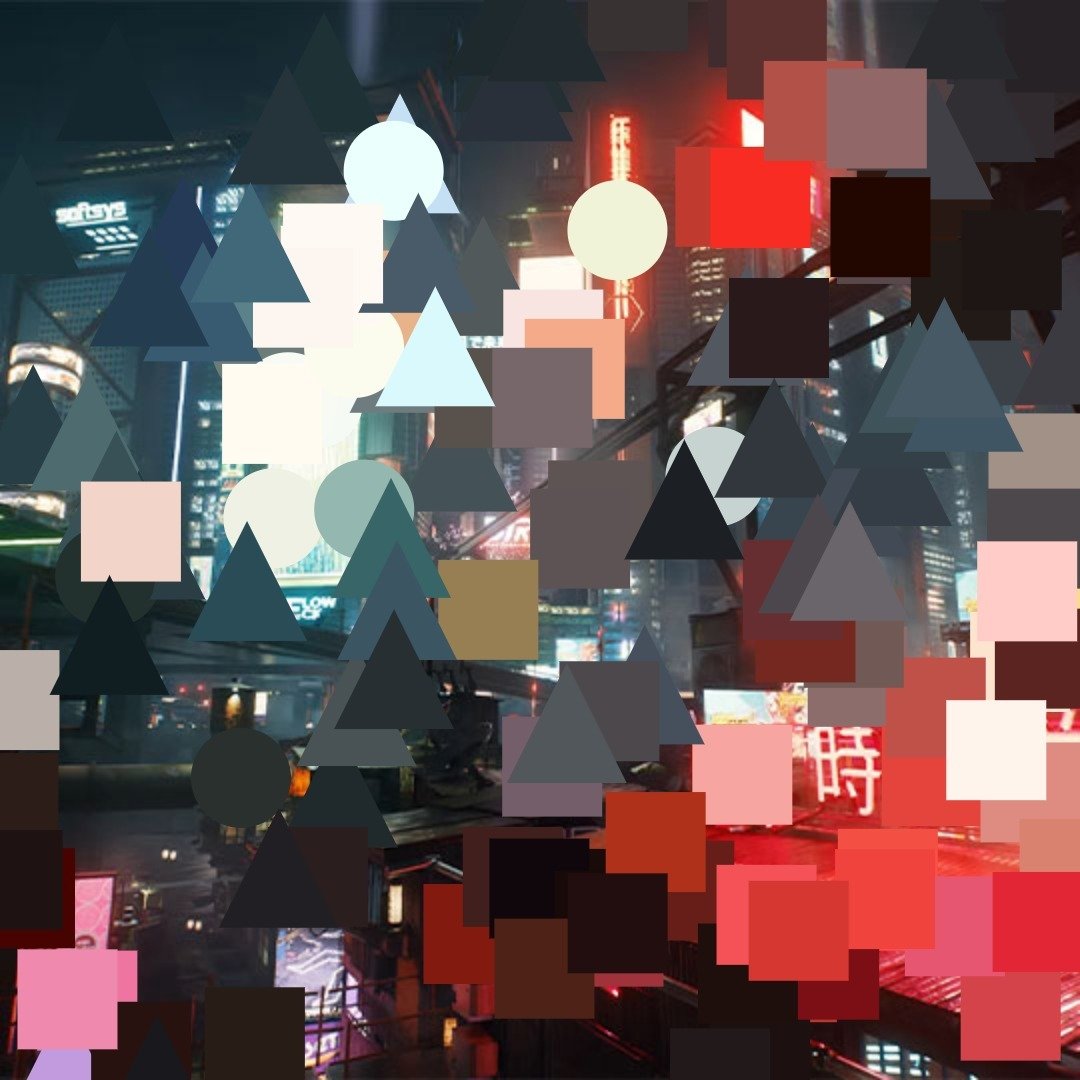
On Making & Consultation: By schedule, in groups of three, each 15 mins.
Workshops on Critical Journal, Interviews and Case Studies.
Friday 9:30am online
Generative AI for Media Art and Design
Rodger Luo and Weidi Zhang
23–24
Semester 1
23–24
B-DC 332
Graduation Project
Computation in Design
Semester 1
Tuesday
Week 5
At the end of this week, aim to complete your first RPO draft and settle on your research approach and framework. You should have started to populate your CPJ. We will have covered the Catalogue of Making this week, and you should have considered your approach to this catalogue which documents your making and will be a deliverable at the end of the semester.
Second round of seminars on Critical Journal, Interviews and Case Studies
23–24
B-DC 332
Graduation Project
Computation in Design
Semester 1
Tuesday week 5
Slides from workshops
Genral framework slides
23–24
B-DC 332
Graduation Project
Computation in Design
Semester 1
Thursday
Week 5
Thursday Session On Making
22–23
22–23
B-DC 332
Graduation Project
Computation in Design
Semester 1
Sharing and Making
9:30 – 12:30pm
Recap and Thoughts
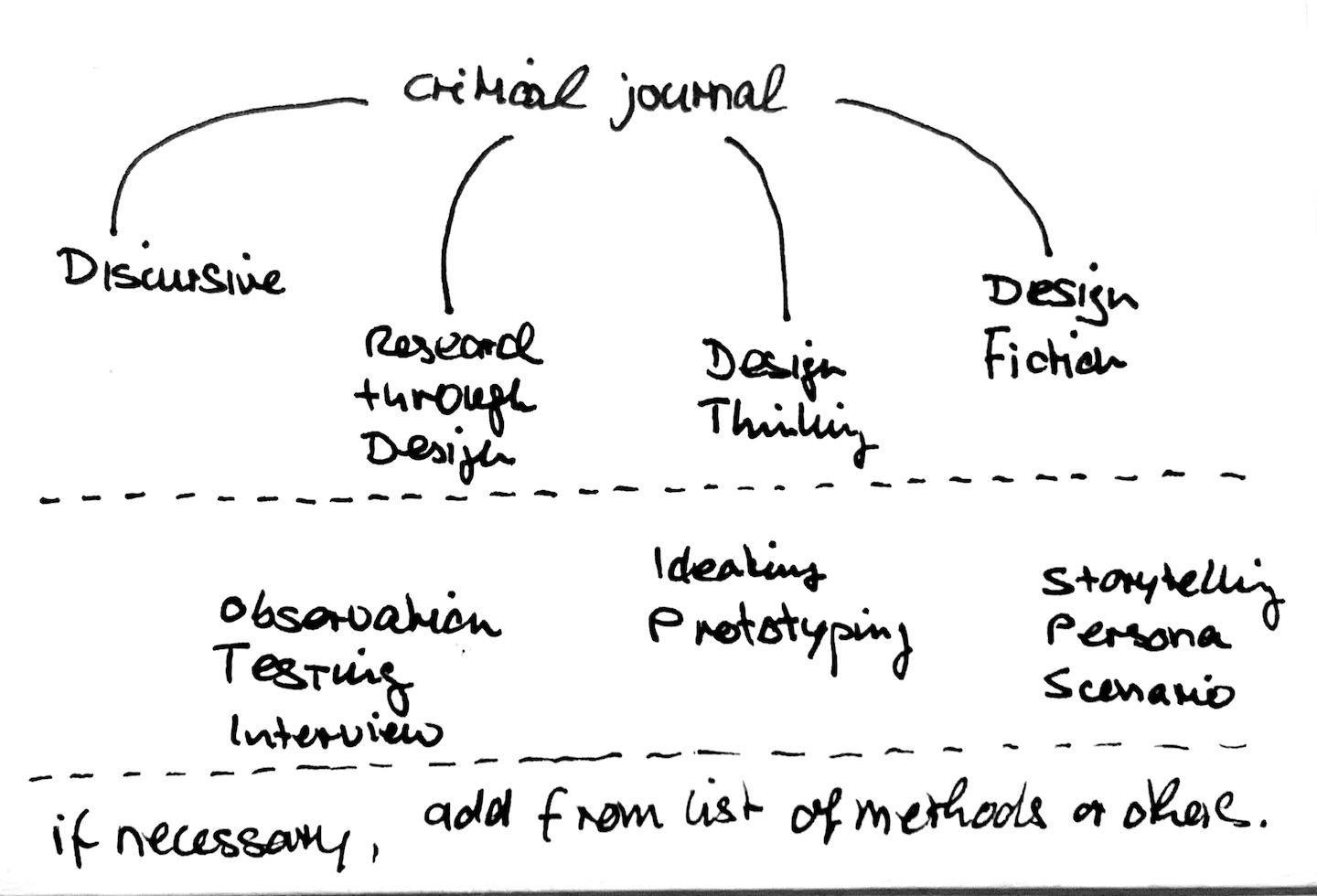
23–24
B-DC 332
Graduation Project
Computation in Design
Semester 1
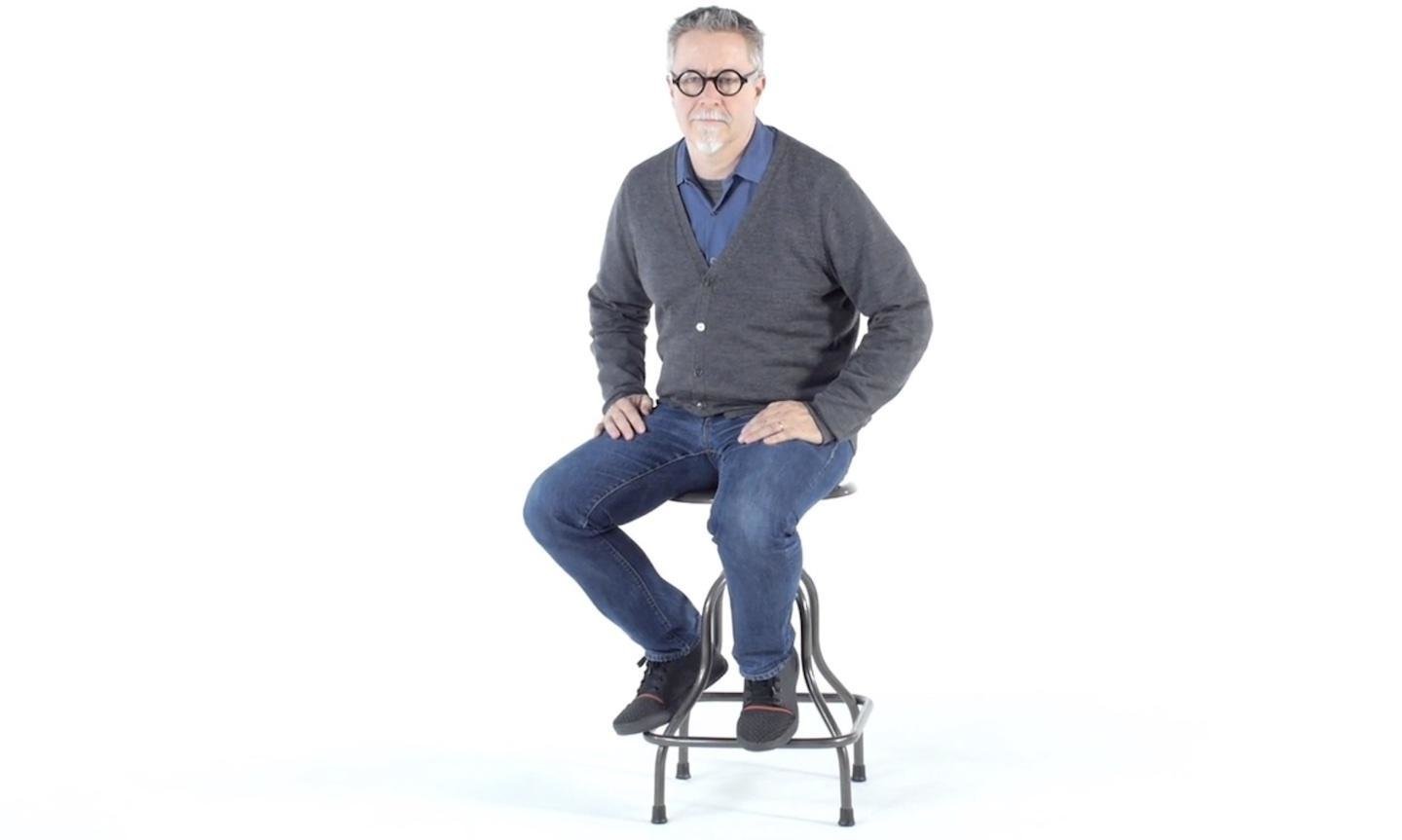
Tim Brown, Ideo.
"Don't think of it as failure, think of it as designing experiments through which you’re going to learn."
23–24
B-DC 332
Graduation Project
Computation in Design
Semester 1
A project by Space10 & IKEA
Thursday Session On Making
23–24
B-DC 332
Graduation Project
Computation in Design
Semester 1
Sharing
9:30 – 12:30pm
I will meet you in small groups of 2–3 to go over the following points regarding your RPO and studio work: close in on research pillars and framework, making and experiments, skills and tools to move forward.
While I talk to each group, the others should engage in group discussions and making, see below.
Making
9:30 – 12:30pm
While others share their studio progress, you will initiate more experiments. To keep track, we should catalogue what we make, let's call it the Catalogue of Making. How? See next slides.
23–24
B-DC 332
Graduation Project
Computation in Design
Semester 1
While others share their studio progress, you will initiate more experiments. To keep track, we should catalogue what we make, let's call it the Catalogue of Making.
Catalogue of Making
We started with initial experiments and tasks on week 2. The Sketching and Experiments Workshop from last week should not be seen as a finished exercise, but a beginning for your ongoing work and continuous making, which will only come to a conclusion with the exhibition of your practical work.
To capture and document your studio work (failed or successful), catalogue them in a designed document, the Catalogue of Making.
The Catalogue of Making is primarily a visual collection with annotations. Short text segments or quotes are welcome. The Catalogue is high in visual quality and minimal in design. It is indexed, browsable and enjoyable to the eye and mind. Think Experimental Jetset.
How is this different from the Creative Process Journal? The Catalogue of Making is a curated collection of your studio work that you have produced so far–and will produce in the future. It is primarily visual with annotations and can be a mix of your own sketches, activities, experiments, etc and can be supported by found and collected materials.
Thursday Session On Making
23–24
B-DC 332
Graduation Project
Computation in Design
Semester 1
Catalogue of Making
The Catalogue of Making is primarily a visual collection with annotations. Short text segments or quotes are welcome. The Catalogue is high in visual quality and minimal in design. It is indexed, browsable and enjoyable to the eye and mind. Think Experimental Jetset.
How is this different from the Creative Process Journal? The Catalogue of Making is a curated collection of your studio work that you have produced so far–and will produce in the future. It is primarily visual with annotations and can be a mix of your own sketches, activities, experiments, etc and can be supported by found and collected materials.
These formats can be used (one or a combination of)
printed booklet, web-based, video

6
B-DC 332
Graduation Project
Computation in Design
Tuesday
Thursday

Studio work, practical work review and feedback
Individual Consultation 1.1: Research proposal. By schedule, in groups of two, each 20 mins.
23–24
Semester 1
Recap Week 1 – 5
B-DC 332
Graduation Project
Computation in Design
Week 1 and 2 were primarily about introducing you to the dissertation and the studio work for this year-long final project. Milestones and deliverables were shared with you, as well as the various resources for writing your research proposal outline (RPO), which will be the first deliverable to be submitted in week 9.
Studio work in week 3 and 4 focused on establishing the relevance and approach of conducting experiments to not only support the development of one's research, but also to engage in an ongoing process of making through which ideas can be expressed, experienced or tested. On Tuesdays, we primarily looked at and discussed the different sections of the RPO. In individual or group sessions, suggestions were made on how to focus and move forward with one's research.
Week 5 focused on reviewing your RPO. The pace of development varies from student to student, and obstacles should be addressed in a timely manner if necessary. Furthermore, you continued to define and develop options and methods for your studio to support your research and provide an approach to your practical work.
At this point, you should have completed an outline in bullet points and gathered relevant readings to support your research. Your Creative Process Journal should be developed by now to document your progress and findings.
As you progress, the focus will be on formalising and finalising your RPO so that your supervisor can read a draft at the end of week 7. Your practical work should also continue to develop. The outcomes produced so far should be consolidated and presented in your Catalog of Making. At the end of week 7 you will prepare your RPO and studio work for formative feedback.
1–2
3–4
5
Looking ahead, 6–7
23–24
Semester 1
Looking ahead to Week 7, formative assessment.
B-DC 332
Graduation Project
Computation in Design
Studio
Repository, are.na or figma, curated
Catalogue of Making (pdf or web)
Creative Process Journal
up-to-date
Dissertation
Research Proposal Outline Draft
Reading List
submit by Friday 29.9. 6:00pm
check
check
We have conducted sessions on experiments which should have helped you to get started making. Results that you have created so far will go into your Catalogue of Making.
link to are.na or figma, selected findings important to one's research should be organised and structured, from the CPJ website template use the Repository section to curate.
Experiments and tasks
Document your experiments and tasks that you have carried out so far and curate them in your Catalogue of Making
23–24
Semester 1
Looking ahead to Week 7, formative assessment.
B-DC 332
Graduation Project
Computation in Design
Studio
Research Repository, are.na and curated
Catalogue of Making (pdf or web)
submit by Wed 28.9. 9:30am
We have conducted sessions on experiments which should have help you to get started making. Results that you have created so far will go into your Catalogue of Making.
are.na and curated cargo website, selected findings important to one's research should be organised and structured.
Slide Deck
presents deliverables in a slide deck for the purpose of synthesis
Select the highlights of your are.na archived research and the blocks you found important and relevant to your work–these will become your items for your curated list of are.na findings.
The curated list should then be presented in a cargo website . This list can be organised based on categories such as: books, journals, articles, projects or you may find it more useful to organise them based on your research pillars.
23–24
Semester 1
7
Tuesday

Individual Consultation 1.2: Research proposal. By schedule.
Thursday
Studio work, practical work review and feedback
B-DC 332
Graduation Project
Computation in Design
23–24
Semester 1
Formative assessment
B-DC 332
Graduation Project
Computation in Design
Studio
Repository, are.na or figma, curated
Catalogue of Making (pdf or web)
Creative Process Journal
up-to-date
Dissertation
Research Proposal Outline Draft
Reading List
submit by Friday 29.9. 6:00pm
check
check
We have conducted sessions on experiments which should have helped you to get started making. Results that you have created so far will go into your Catalogue of Making.
link to are.na or figma, selected findings important to one's research should be organised and structured, from the CPJ website template use the Repository section to curate.
Experiments and tasks
Document your experiments and tasks that you have carried out so far and curate them in your Catalogue of Making
23–24
Semester 1
A studio session in 3 scenarios
B-DC 332
Graduation Project
Computation in Design
Those of you who struggle with their practical work and the requirements for the submission I will sit down with you to clarify issues and shortcomings. Before this can happen, please note down your questions and identify possible reasons and even suggest solutions.
Struggle
In case you are in the middle of completing your formative feedback submission, please continue with your work and check with me in case you need further clarification on any of the deliverables.
In Progress
If your practical work has progressed well so far and your formative assessment submission is almost complete, consider to summarise your current findings as an additional deliverable. A summary here can be designed into a research poster, explainer video or project teaser. This is an excellent opportunity to extend on the expected deliverables.
Confident
23–24
Semester 1
Research Poster. Print, A2 portrait
Explainer video. Video 1080p, up to 2 minutes
Project teaser. Video 1080p, up to 1 minute
9
Tuesday
Thursday

Individual consultation: By schedule, in groups of two, each 15 mins. Project focus and development.
individual consultation, optional.
B-DC 332
Graduation Project
Computation in Design
23–24
Semester 1
10
Tuesday
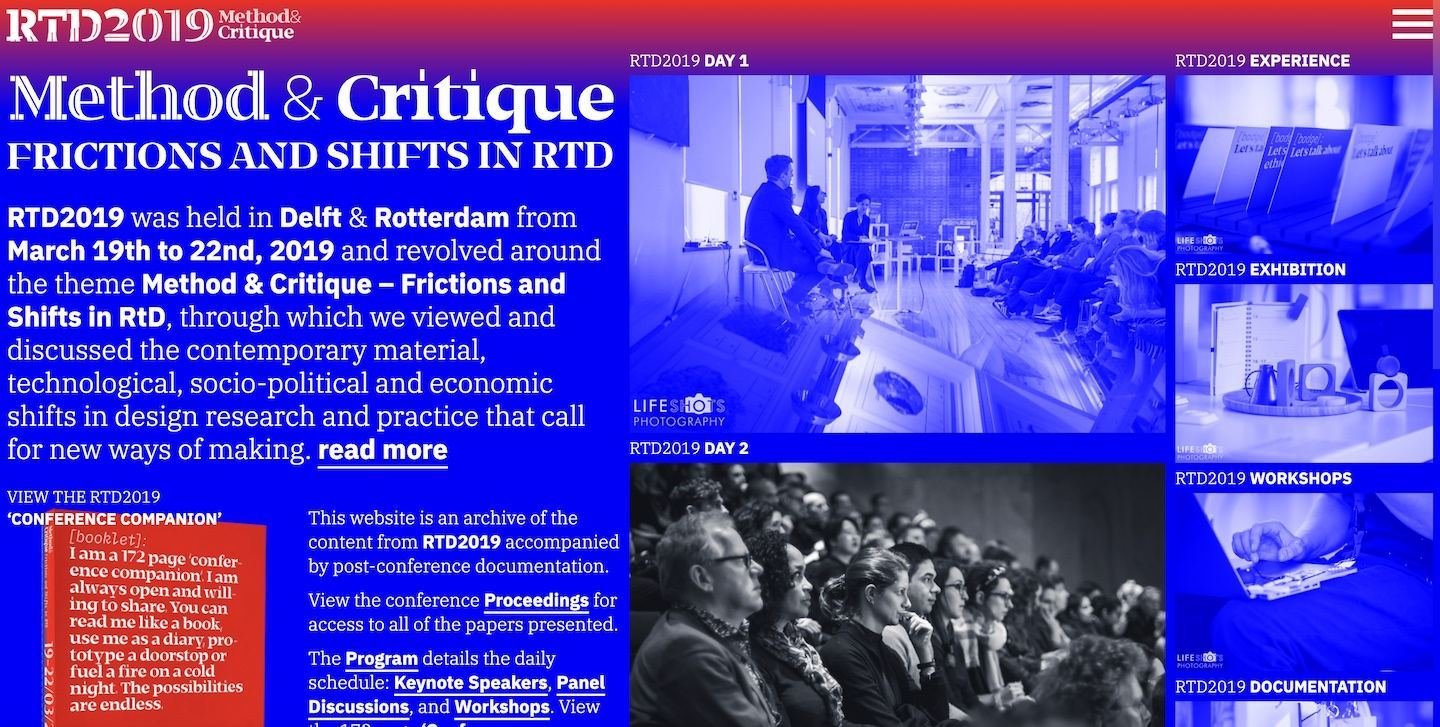
Group Consultation 4: Looking ahead, Dissertation.
Thursday
Project consultation
B-DC 332
Graduation Project
Computation in Design
23–24
Semester 1
Tuesday Session Group Consultation
22–23
22–23
B-DC 332
Graduation Project
Computation in Design
Semester 1
In groups of at least 3 each, select
one of the papers provided. Read and
analyse the chosen paper and focus
on how the practical work is
discussed by the authors.
11.1
B-DC 332
Graduation Project
Computation in Design
Semester 1
Tuesday
Thursday
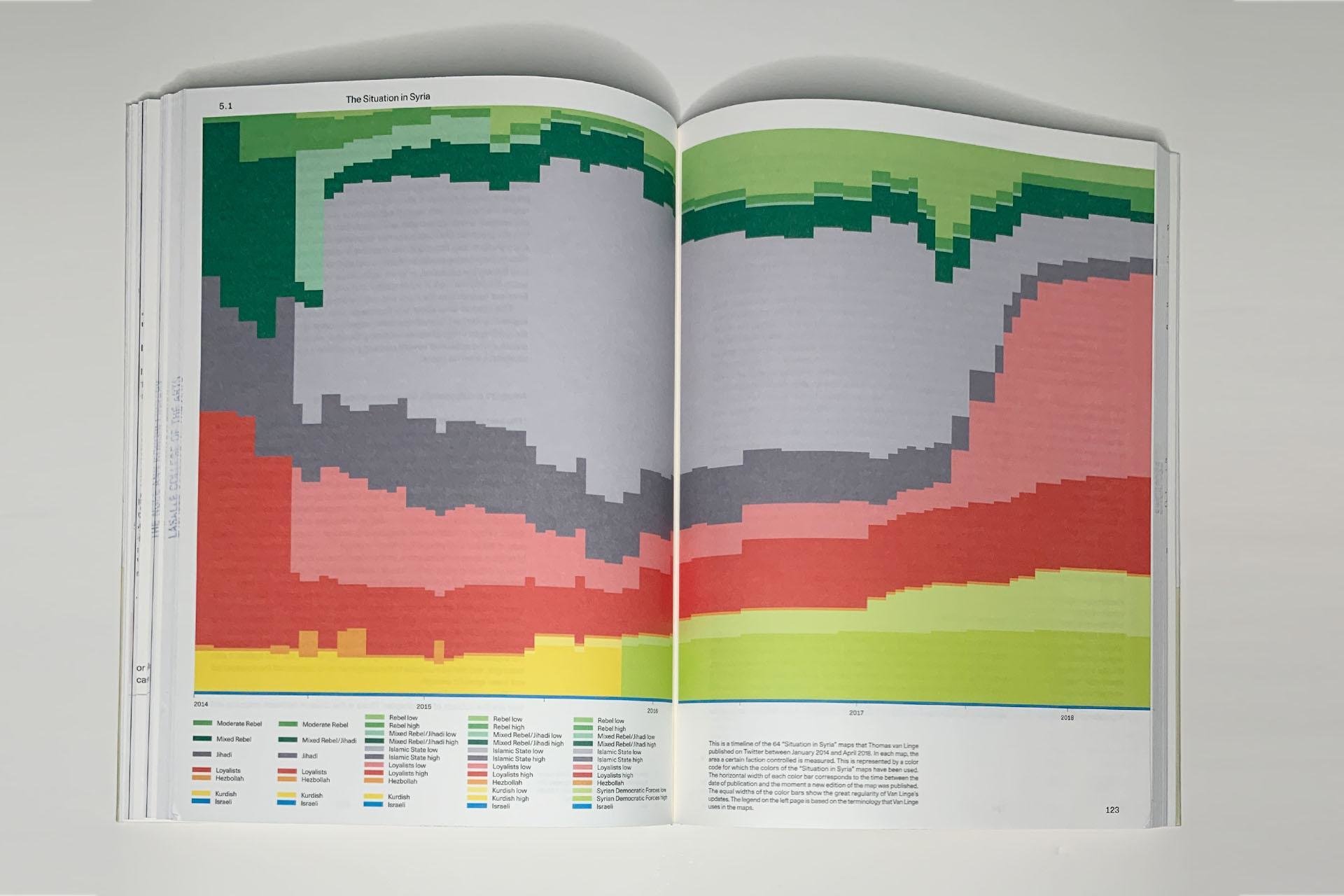
Practical work, individual consultations
Group Consultation 5: Looking ahead, Dissertation.
23–24
23–24
B-DC 332
Graduation Project
Computation in Design
Semester 1
Week 11
Dissertation Presentations
1
2
Tuesday Session Group Consultation
B-DC 332
Graduation Project
Computation in Design
Semester 1
In this group session I want to initiate the transition from RPO to dissertation.
In week 10, we looked at different papers and analysed them using a worksheet with a series of questions to develop a better understanding of how you approach the discussion part of your dissertation–through a Critical Journal or the Edited Interviews framework. This group exercise was intended to help you get started with your dissertation and to continue your practical work.
First we will listen to everyone's short 5 mins presentation based on the outline described in the following slides, I had shared the outline with you in an email before.
23–24
Presentation outline
B-DC 332
Graduation Project
Computation in Design
Semester 1
Step 1 / 4
Introduction, you already covered the following 3 sections in your RPO, this should be a good opportunity for you to share the key points for each section and any development since the RPO submission:
→ Background
→ Literature Review
→ Research Objective
Introduction
Approaches and methods
Discussion
Start and end of presentation
23–24
Presentation outline
B-DC 332
Graduation Project
Computation in Design
Semester 1
Step 2 / 4
Approaches and methods, you already covered this part in your RPO, share with us the key approaches and methods you intend to use. Will this change over time?
Introduction
Approaches and methods
Discussion
Start and end of presentation
23–24
Presentation outline
B-DC 332
Graduation Project
Computation in Design
Semester 1
Step 3 / 4
Discussion, this is a new section which has not been part of your RPO, this section will be your Critical Journal. The Critical Journal approach will mean that you write the discussion section periodically. What do you intend to cover in your Critical Journal (or Interviews) and how? Share your plan for discussing your progress as you keep going back and forth between your practical work and your writing.
Introduction
Approaches and methods
Discussion
Start and end of presentation
23–24
Presentation outline
B-DC 332
Graduation Project
Computation in Design
Semester 1
Step 4 / 4
start your presentation with your title and subtitle (topic statement). After you have given an overview, review, current status and outlook of your research, end your presentation with sharing and elaborating on the areas that you need to improve on
Introduction
Approaches and methods
Discussion
Start and end of presentation
23–24
Tuesday schedule
B-DC 332
Graduation Project
Computation in Design
Semester 1
Presentations
1
Prototypes
2
Debrief session, discussion of questions.
3
9:30–11:30
11:30–12:30
12:30–1:00
23–24
Prototyping
B-DC 332
Graduation Project
Computation in Design
Semester 1
This session is intended to begin the transition from conducting experiments to prototyping as you move into the next phase of your FYP, writing your dissertation while working on your practical work.

23–24
Prototyping
B-DC 332
Graduation Project
Computation in Design
Semester 1
Looking back at our first workshop in term 1, this workshop looked at different angles of what experiments, experimenting, could mean at the early stage of a design research project.
The intention was to give you initial pointers to making small things quickly, experiments that get you into the mode and mood of making.
Experiments at this point differ, for example, from scientific experiments that aim to test, evaluate, and prove a hypothesis.
An experiment here refers to quickly testing an idea, practicing by trial and error, just making, trying and testing the unknown (technique), and learning through a process of approximation and correction until a satisfactory state is reached.
A prototype, on the other hand, should show more intent and planning. It can be derived from a previous experiment. A prototype should be testable (by users, your target audience), refined and eventually lead to the final design outcome.
Experiment vs Prototype
23–24
Prototyping
B-DC 332
Graduation Project
Computation in Design
Semester 1
Experiment: try out, develop understanding, learn by making, materializing ideas
Prototype: a planned activity with the intent to explore, learn, and comprehend, test, and experience
Experiment vs Prototype
23–24
Prototyping
B-DC 332
Graduation Project
Computation in Design
Semester 1
Some of the purposes that prototypes fulfil are
Exploring You can use prototypes to explore problems, ideas, and opportunities within a specific area of focus and test out the impact of incremental or radical changes.
Learning and Understanding Use prototypes in order to better understand the dynamics of a problem, product, or system by physically engaging with them and picking apart what makes them work or fail.
Engaging, Testing, and Experiencing Use prototyping to engage with end users or stakeholders, in ways that reveal deeper insight and more valuable experiences, to inform design decisions going forward. Inspiring and Motivating Use prototypes to sell new ideas, motivate buy-in from internal or external stakeholders, or inspire markets toward radical new ways of thinking and doing.
What a prototype can do
23–24
Prototyping
B-DC 332
Graduation Project
Computation in Design
Semester 1
The term prototype, along with the verb prototyping, has become popular in design research, and especially so in interaction design. Originally, the term indicated a precursor of a mass-produced product, which shares its material qualities, but will undergo testing and development during implementation. In design research, the term prototype is also used for all kinds of product-like physical constructions.
In interaction design, paper prototyping can be as simple as drawings on paper. Prototypes are a narrower category than artifacts. They are ‘like products’ in the sense that someone can interact with them and experience them, whereas sketches and blueprints are less direct representations about—rather than realizations of—intended situations and interactions.
The term ‘artifact’ originates in anthropology/archeology, and refers to a man-made thing, usually a material object. In the Research through Design literature, some authors use the term ‘artifact’ (or, in British/Commonwealth English, ‘artefact’) with this meaning that we reserve for ‘prototype’, but without making the difference explicit. In this chapter, we use the distinctions above – that every prototype involves an artifact or artifacts, but that not every artifact is a ‘prototype’
What a prototype can do
23–24
Prototyping
B-DC 332
Graduation Project
Computation in Design
Semester 1
Low fidelity versus high fidelity using the example of a digital product
Effort
Fidelity
Sketching
Paper Prototype
Wireframe
Digital Prototype
Mockup
Coded Prototype
Prototypes
Interactive Applications
The fidelity of a prototype refers to its level of completeness, functionality and detail. The degree of completeness of the prototypes you build depends on the stage of progress:
Low fidelity: low cost, rough and quick to build
Medium fidelity: slightly more detailed, still rough but closer to the solution
High fidelity: much closer to final, very detailed and much more time-consuming
This represents a scale of completeness or closeness to the final product, which differs depending on the type of solutions and needs of the situation. Prototypes can also have different parts with varying levels of fidelity.
For example, you can build a prototype with high visual fidelity but with low functional fidelity — which would be useful if you were testing the visual aspects, rather than functional aspects, of the prototype. The main aspects, which are the focus of the prototype, should receive more focus and, ideally, higher fidelity.
The fidelity of a prototype
23–24
Prototyping
B-DC 332
Graduation Project
Computation in Design
Semester 1
How do prototypes (often) look like
Sketching
Paper Prototype
Wireframe
Digital Prototype
Mockup
Coded Prototype
Prototypes
Interactive Applications
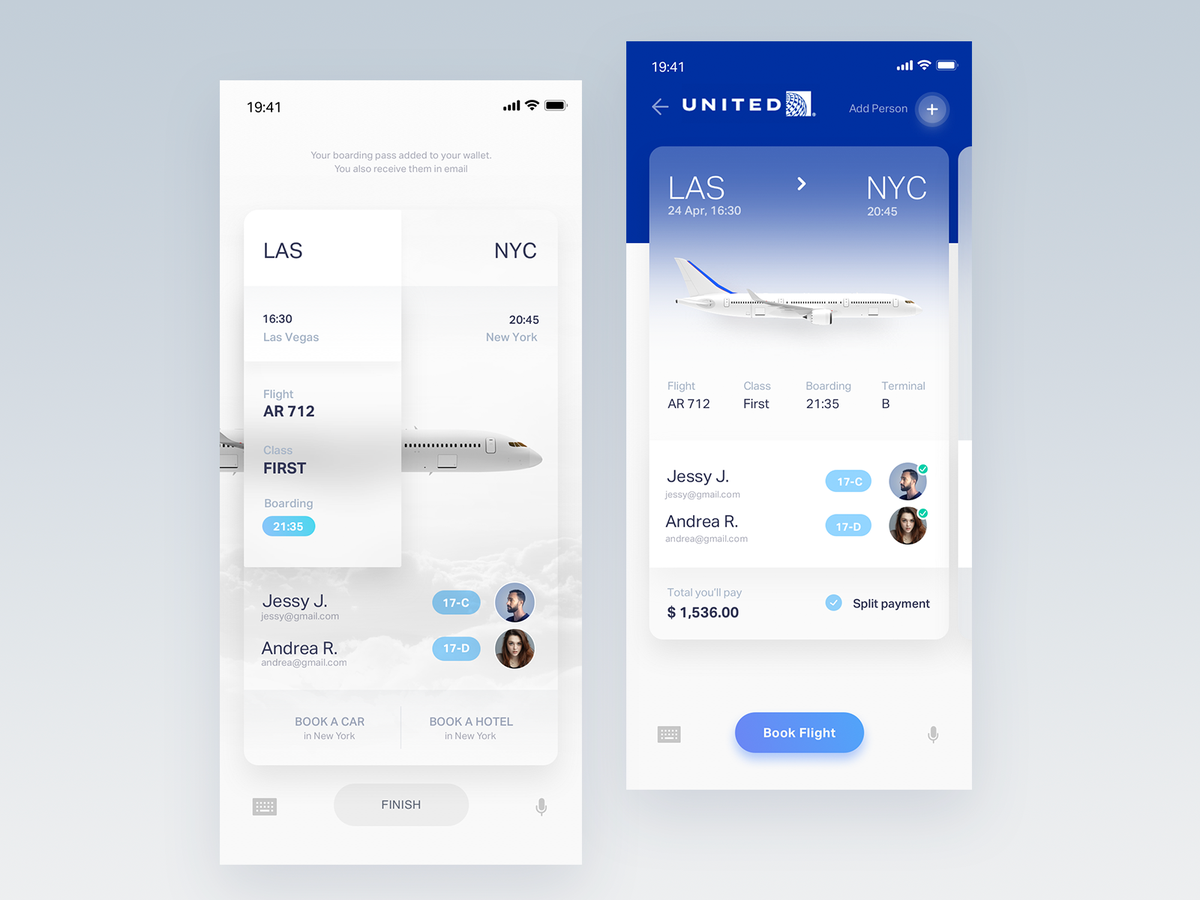
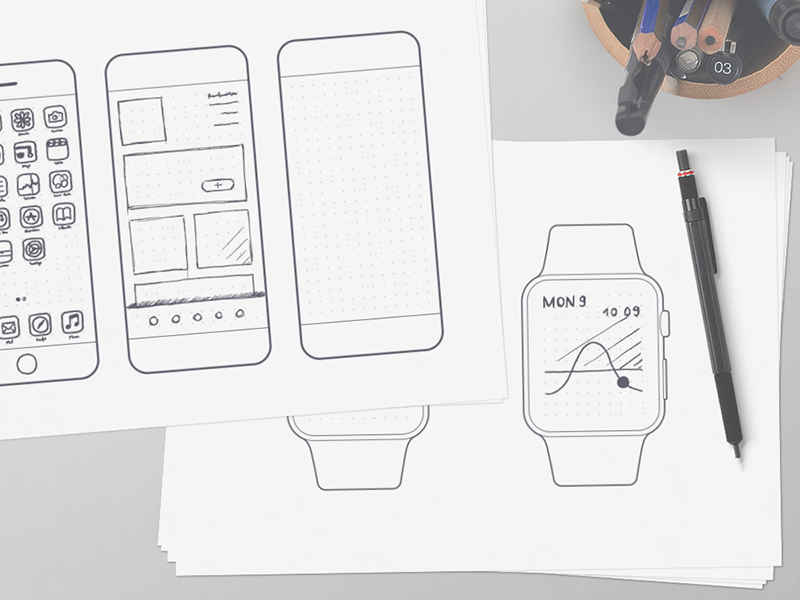
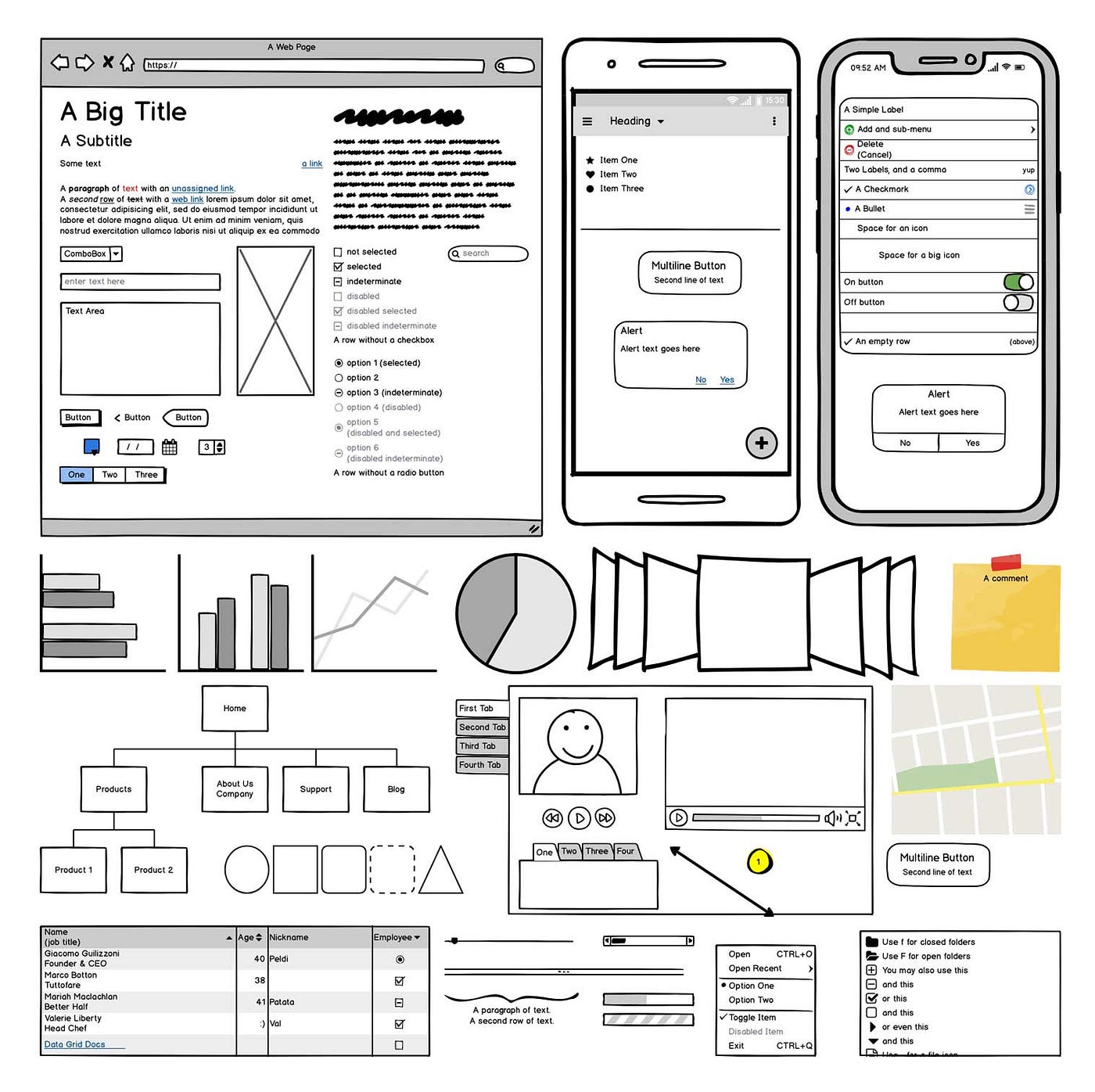

23–24
Prototyping
B-DC 332
Graduation Project
Computation in Design
Semester 1
How could our prototyping ideally look like
Sketching and Paper Prototyping

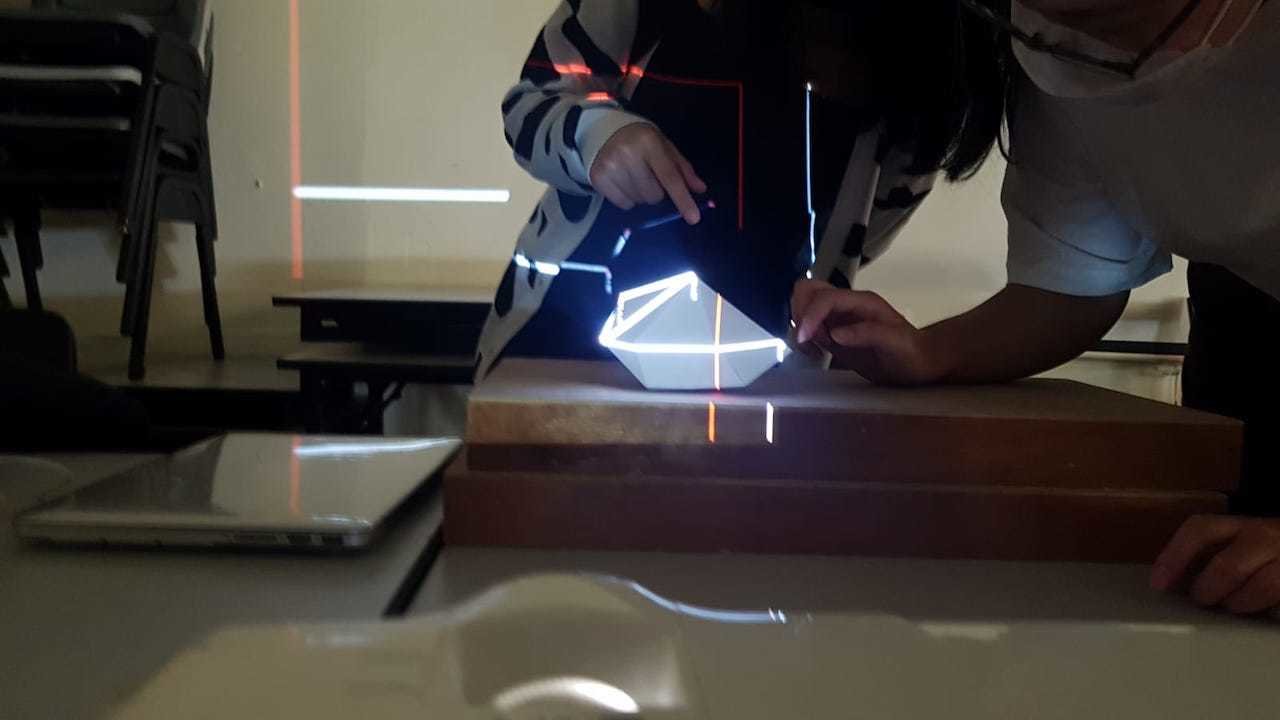




Coded prototypes and Hands-on making
Screen-based and Physical Prototyping
23–24
B-DC 332
Graduation Project
Computation in Design
Semester 1
Case Studies
23–24
22–23
22–23
B-DC 332
Graduation Project
Computation in Design
Semester 1


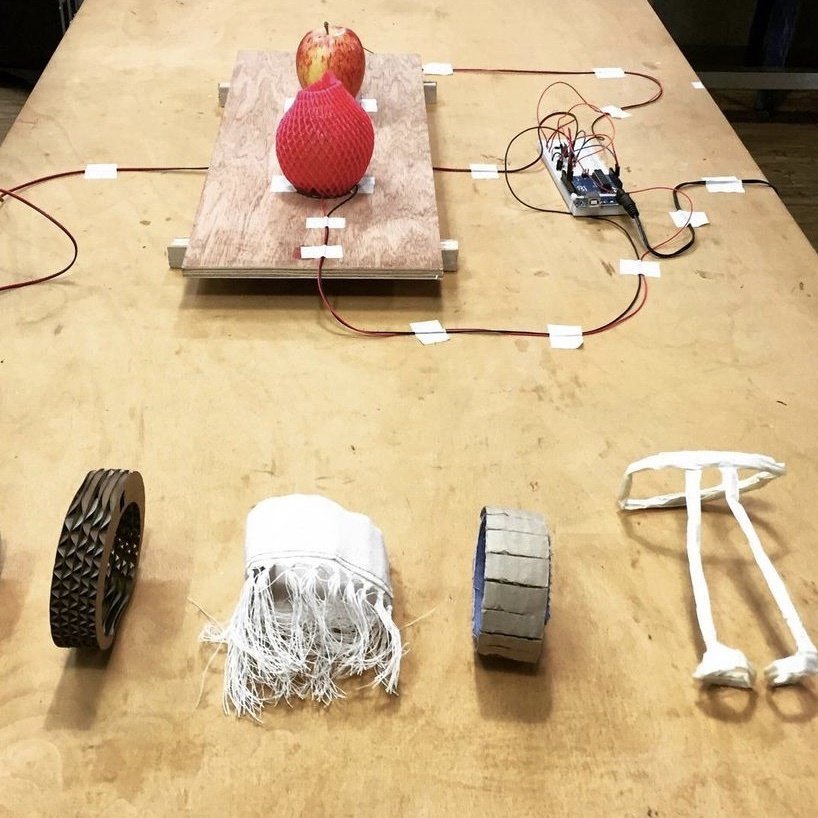
Case Studies
22–23
22–23
B-DC 332
Graduation Project
Computation in Design
Semester 1
Case Study 1
Carelets is a collection of wearable accessories designed to promote environmentally conscious consumerism in order to create a global "just enough" consumer culture for a sustainable future.
Its objective is to help its users to understand the supply chain and waste management of things we consume. We argue that the supply chain and the production of consumer goods as well as the disposal of used goods are becoming more and more complex and invisible and therefore less apparent to the consumer itself.
By participating in the Carelets initiative one is encouraged to wear at least one Carelet to identify and monitor their purchasing behaviour. A Carelet provides one with an on-the-spot feedback when attempting to buy a new product. We provide users with an open database of supply chain and waste management information to monitor and evaluate a user's consumer behavior. A tactile response reminds you of a product’s impact on the environment.
During this one week long workshop (Singapore, 2015) we used methods from the open prototyping model developed by workshop facilitator FutureEverything.


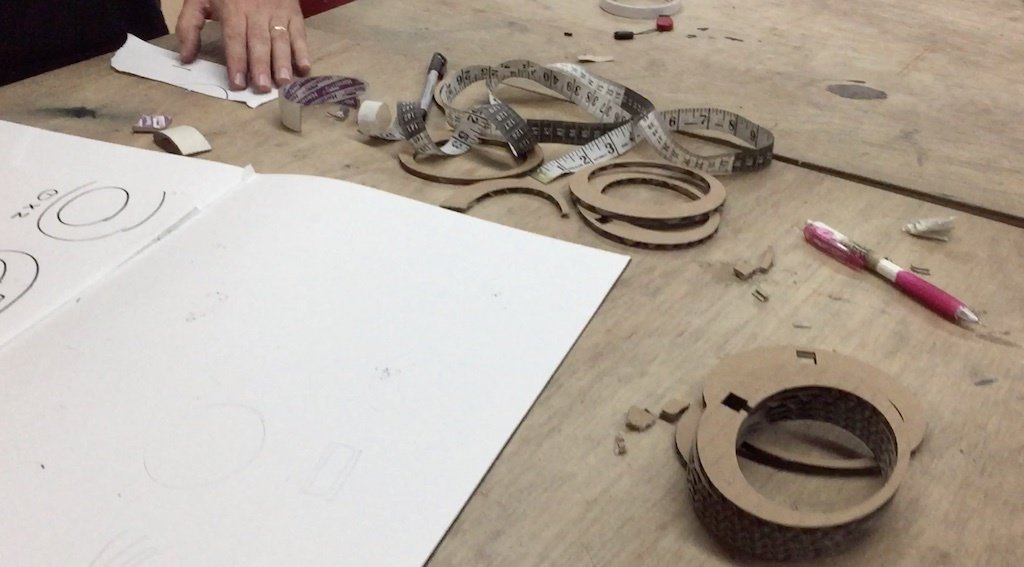
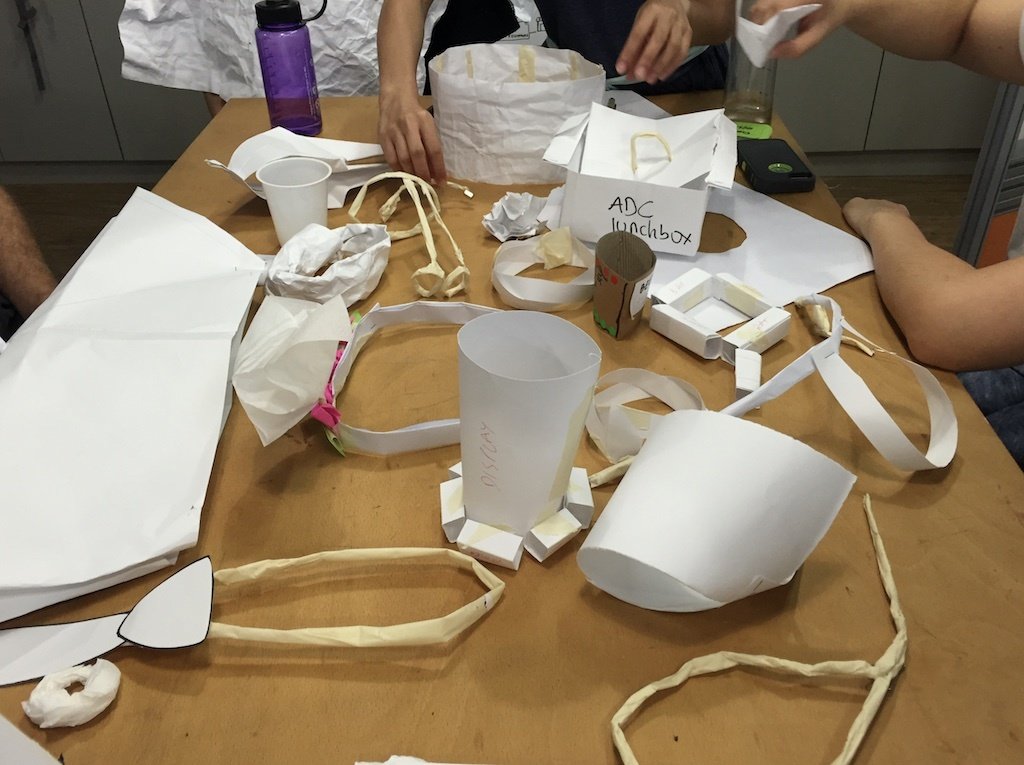
Carelets
22–23
22–23
B-DC 332
Graduation Project
Computation in Design
Semester 1
Case Study 2
A hallmark of human-centered design is rapid prototyping and iterating on the fly. A project team working in Ethiopia on designing a new device to plant teff—a grain and staple of Ethiopian cuisine—put our process to the test when a prototype of their planter came face to face with the Ethiopian soil.
Transporting the planter from San Francisco to rural Ethiopia was one thing, but the real challenge came when engineer and team member Ravi Prakash set out to push it through a field of muddy soil.
“Suddenly, Ravi’s steps started getting smaller. Watching him was like seeing time slow down,” reported project lead Martin Schnitzer. “He was barely 50 feet down the field and the wheels had picked up enough mud to make it nearly impossible to move any further. We knew the mud would be challenging but we didn’t think it would render the planter useless so quickly. Deflated, we felt like we were thrown back to the beginning of our challenge.”
Prototyping and Iteration: A device to plant teff

The team was quickly back in the shop of a local agricultural research center trying to figure out what to do with the planter’s wheels. They played with a variety of solutions, quickly moving through ideas like spiked wheels and skis, until one of the local metal workers had a suggestion: wrap the wheels in burlap.
“Wrapping the wheels in burlap isn’t an idea we could have ever come up with in a brainstorm,” said Schnitzer, ”and burlap certainly isn’t on any list of new high tech materials. However, using burlap came from keeping an open mind to trying new solutions. It came from talking to people who understand the conditions best and by sharing the excitement of this project with others to gain inspiration from a number of places.”
In the end, burlap worked wonderfully well. And though the wheels of the final product are made of harder-wearing stuff, the burlap fix allowed the team to get back out into the soil and test other elements of the planters with the farmers who’ll use them.
22–23
22–23
B-DC 332
Graduation Project
Computation in Design
Semester 1
Case Study 3
Roboarm

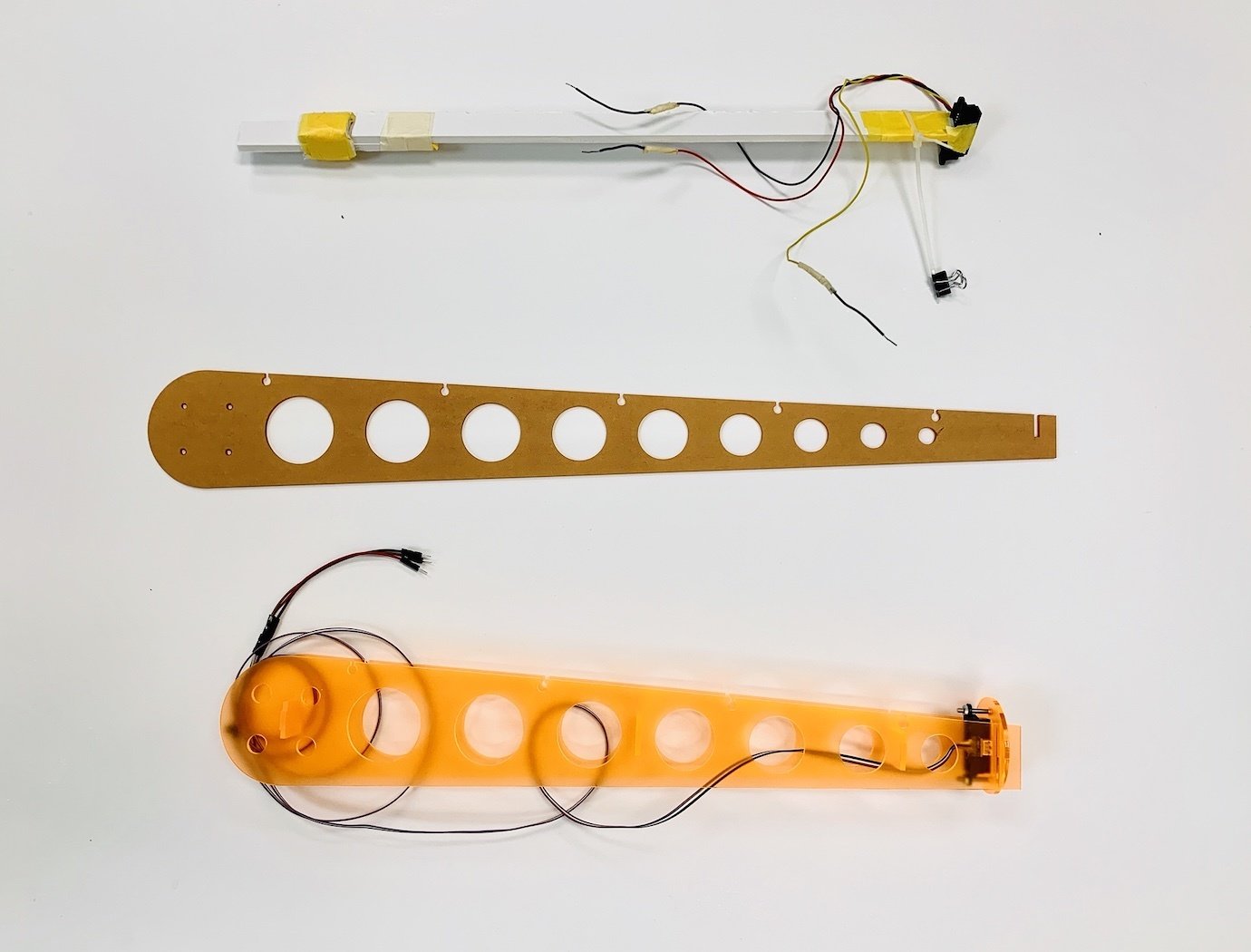
Roboarm is a physical object. Two motors and a proximity sensor mounted on a tripod constitute Roboarm's exterior. On the inside is a set of rules that determine its behavior. Roboarm is intended to give the impression of a self-obsessed and contented machine. As long as it is not interrupted, it sporadically 'draws' simple calculations in mid-air. A sensor attached to the tip of the arm behaves like a pair of eyes – upon sensing any obstruction, Roboarm shies away. Some audience reactions that could be observed and recorded when on public display:
Motion sensor and presence of movement triggers a response but unsure of whether presence vs continuous movement is required
It moves when our hands are near the top of the handle
I had to find the sensor
I was looking for how I could interact and then waving around helped
I was a bit confused as to why it started to move even after I wasn’t near the sensor
It was fun to play with as it avoids your hand
I waved to the roboarm and there were some form of reply
Almost like a responsive AI Machine to me, i can foresee many outcomes from this work, so i think it is not random.
At times it seemed random but the response was overall quite clear
22–23
22–23
B-DC 332
Graduation Project
Computation in Design
Semester 1
You will be working in pairs. As a team of two, each of you will draw and map out a timeline of your studio project, how did it go so far?
Highs
Lows
Then
What are some low points and what are the high points you encountered over time? Be visual (draw doodles) and add short descriptive notes.
15
You can draw your journey map onto a piece of paper using the above as your starting point
Reflection
Now
22–23
22–23
B-DC 332
Graduation Project
Computation in Design
Semester 1
You will be working in pairs. As a team of two, each of you will draw and map out a timeline of your studio project, how did it go so far?
Highs
Lows
Then
What are some low points and what are the high points you encountered over time? Be visual (draw doodles) and add short descriptive notes.
10
Reflection
Now
Together, pick a low point for each of you and discuss how it could be resolved. Use the sheet of paper on which you drew your journey map.
Action
22–23
22–23
B-DC 332
Graduation Project
Computation in Design
Semester 1
Approach
The only way to experience an experience is to experience it.
Bill Moggridge
was a British designer, author and educator who cofounded the design company IDEO
23–24
B-DC 332
Graduation Project
Computation in Design
Semester 1
Documenting
B-DC 332
Graduation Project
Computation in Design
Documenting


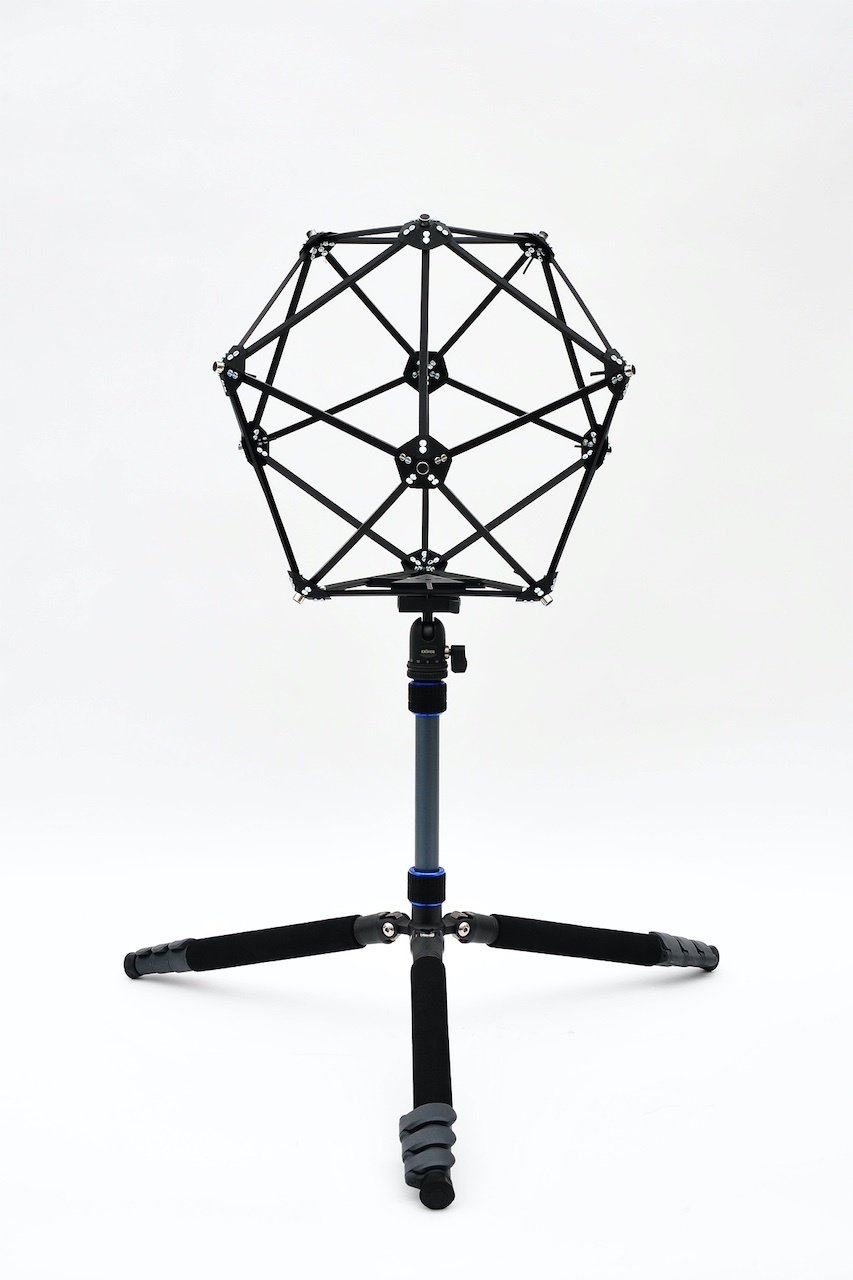
Product shots, clean background so that the focus is solely on the subject. Use a good camera, tripod if necessary, and appropriate lighting.
Semester 1
23–24
B-DC 332
Graduation Project
Computation in Design
Documenting
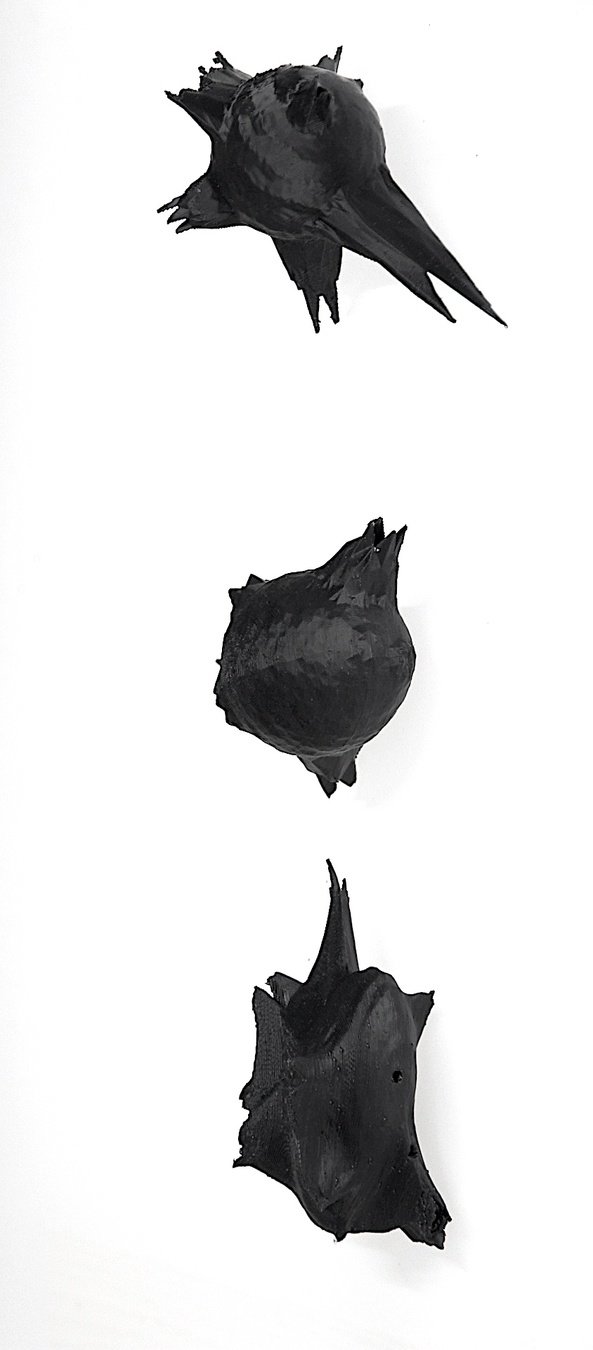
Product shots, clean background so that the focus is solely on the subject. Use a good camera, tripod if necessary, and appropriate lighting.
Semester 1
23–24
B-DC 332
Graduation Project
Computation in Design
Documenting
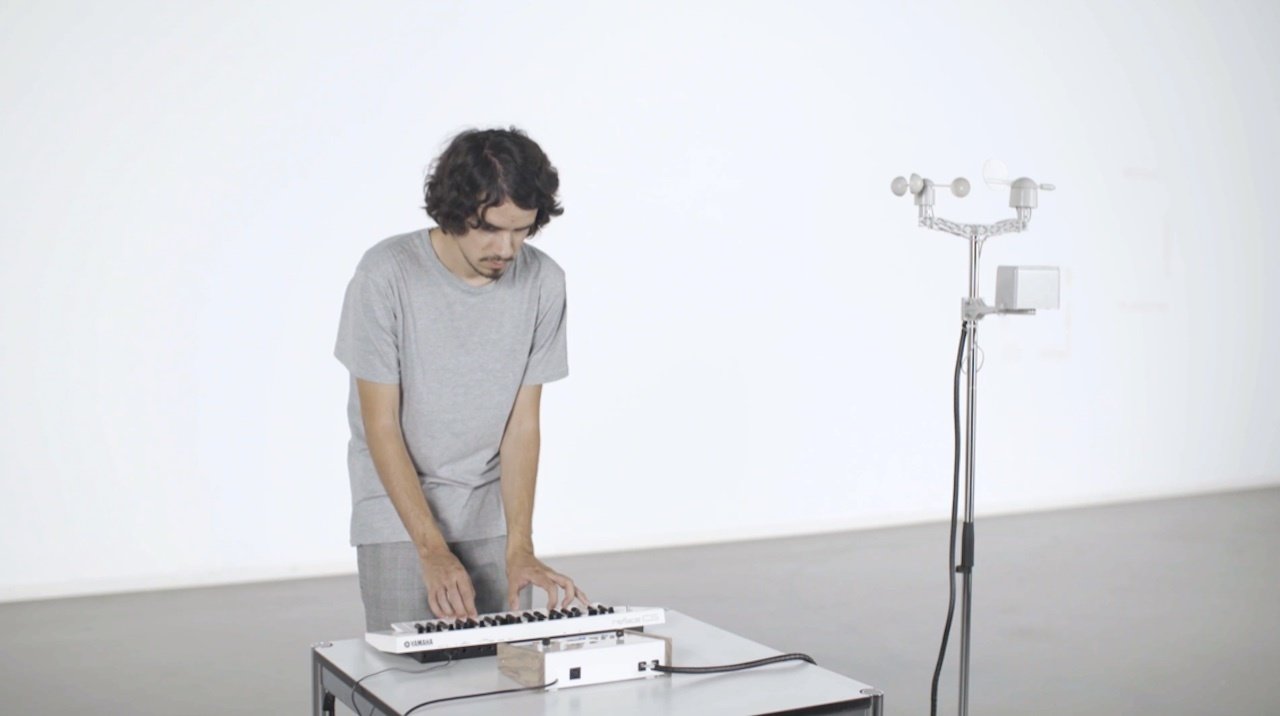


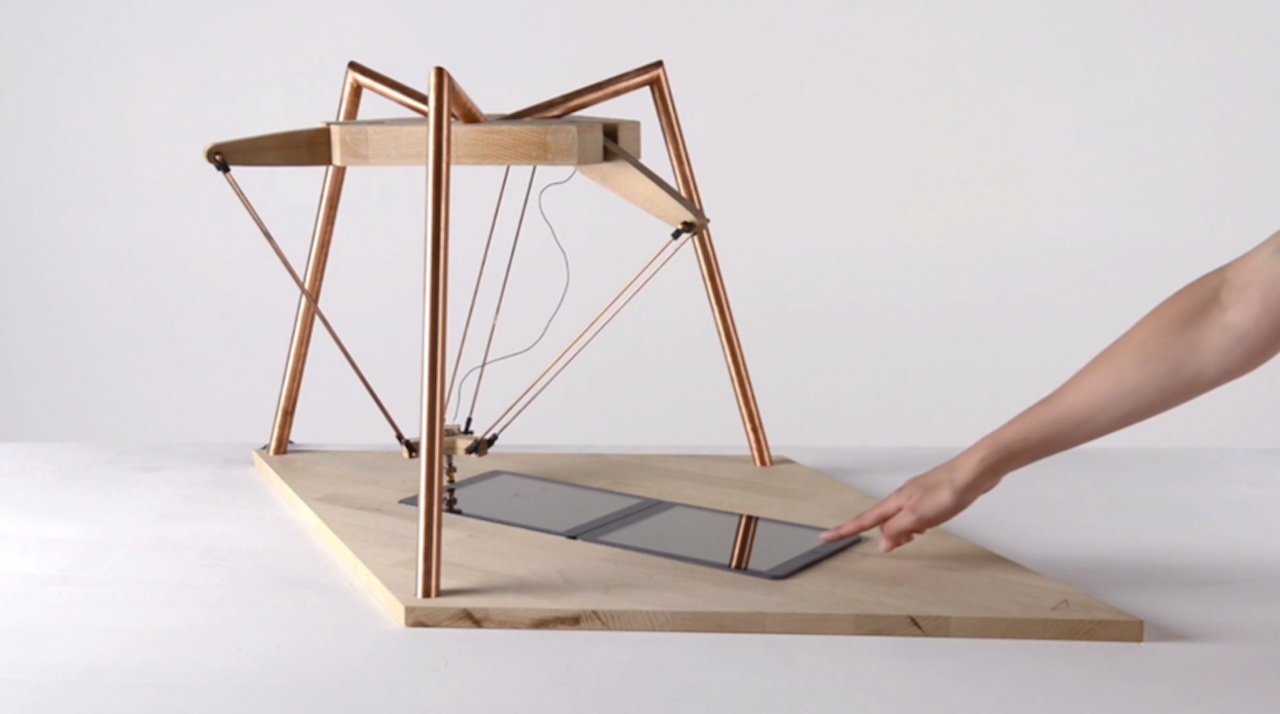
Product shots, clean background so that the focus is solely on the subject, add hands to show interactivity. Use a good camera, tripod if necessary, and appropriate lighting.
Semester 1
23–24
B-DC 332
Graduation Project
Computation in Design
Documenting
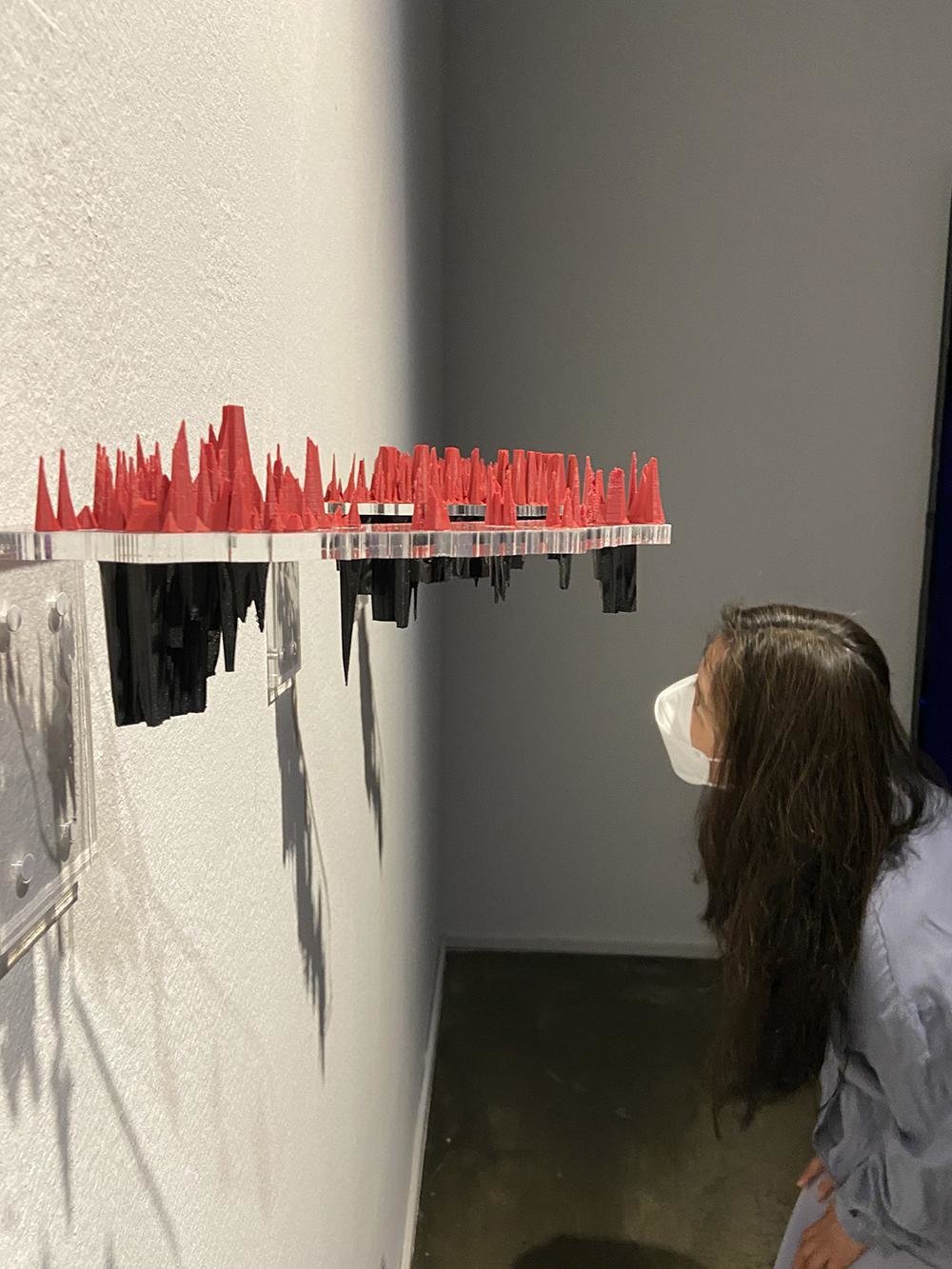


In action, in use: pictures of the work with people interacting or looking at the work. These photos can be staged and choreographed, or taken during a show and tell or exhibition with audience. Use a good camera, a tripod if necessary and adequate lighting.
Semester 1
23–24
B-DC 332
Graduation Project
Computation in Design
Semester 1
Documenting




Avoid
In action, in use: pictures of the work with people interacting or looking at the work. These photos can be staged and choreographed, or taken during a show and tell or exhibition with audience. Use a good camera, a tripod if necessary and adequate lighting.
23–24




22–23
22–23
B-DC 332
Graduation Project
Computation in Design
Semester 1
Documenting, Case Studies
Scenario Builder
Scenario
Video documentation
Tech rundown
Demonstration
Prototype
Lifestyle
B-DC 332
Graduation Project
Computation in Design
Documenting, Case Studies
23–24
Semester 1
Explainer
B-DC 332
Graduation Project
Computation in Design
Documenting, Case Studies
How-to
Video documentation
Functionality
Prototype
23–24
Semester 1
Experiencer
B-DC 332
Graduation Project
Computation in Design
Documenting, Case Studies
How-to
Video documentation
Interaction
Experience
Tech demonstration
Prototype
23–24
Semester 1
Planner
B-DC 332
Graduation Project
Computation in Design
Documenting, Case Studies
Thought process
Diagrams
Synthesis
Mockup
Idea
23–24
Semester 1
Prototyper
B-DC 332
Graduation Project
Computation in Design
Documenting, Case Studies
Scenario
Workable
Video documentation
Making
Speculation
Prototype
23–24
Semester 1
Prototyper
23–24
B-DC 332
Graduation Project
Computation in Design
Semester 1
Documenting, Case Studies
Scenario
Environment
Video documentation
Tech setup
Tech rundown
Prototype
23–24
B-DC 332
Graduation Project
Computation in Design
Semester 1
Thursday and next Tuesday, individual consulations
22–23
22–23
B-DC 332
Graduation Project
Computation in Design
Semester 1
Prepare for Thursday
Things you will bring
1 / 6
You should write ideas on a piece of paper
Bring three objects that are [a struggle, unnecessary, a must] for your project.
2 / 6
Sketch out or write down three ideas that are [choose from: relevant, desirable, impossible, achievable, cool] in relation to your project.
22–23
22–23
B-DC 332
Graduation Project
Computation in Design
Semester 1
Prepare for Thursday
Bring Materials
3 / 6
Please bring to the workshop a couple of materials A that you want to work with B that you feel comfortable with C that you can handle well. Materials you have at home, or maybe a visit to Daiso?
We can think of materials as a physical entity like paper, paint, or wood. According to a simple definition, a material is a substance that a thing is made of. Ok, something physical? But what if the thing is purely virtual or intangible, what would be its material?
Let's consider material within and beyond physical entities. The obvious like paper and wood could be your material, but data could also be a material, or code, light, sound, or any material you have already collected during and for your current research.
22–23
22–23
B-DC 332
Graduation Project
Computation in Design
Semester 1
Prepare for Thursday
Bring Tools
4 / 6
Fine tip marker
Cutting mat
Laptop
Metal ruler
Pencil
Pen knife
Scissors
Binder clips
Glue gun
Masking tape
Nice to have
22–23
22–23
B-DC 332
Graduation Project
Computation in Design
Semester 1
Prepare for Thursday
Bring Purpose
5 / 6
Who do you want to be and what do you want your world to be?
6 / 6
In my final year project I study ___________ to _____________ .
your FYP topic here
your intention or project impact here
You should write the above on a piece of paper
22–23
22–23
B-DC 332
Graduation Project
Computation in Design
Semester 1
Prototyping workshop
next slide column
11.2
B-DC 332
Graduation Project
Computation in Design
Tuesday
Thursday

Group Consultation 5: Looking ahead, Dissertation.
Practical work, individual consultations
23–24
Semester 1
Prototyping
B-DC 332
Graduation Project
Computation in Design
This session is intended to begin the transition from conducting experiments to prototyping as you move into the next phase of your FYP, writing your dissertation while working on your practical work.

23–24
Semester 1
Prototyping
22–23
22–23
B-DC 332
Graduation Project
Computation in Design
Semester 1
Looking back at our first workshop in term 1, this workshop looked at different angles of what experiments, experimenting, could mean at the early stage of a design research project.
The intention was to give you initial pointers to making small things quickly, experiments that get you into the mode and mood of making.
Experiments at this point differ, for example, from scientific experiments that aim to test, evaluate, and prove a hypothesis.
An experiment here refers to quickly testing an idea, practicing by trial and error, just making, trying and testing the unknown (technique), and learning through a process of approximation and correction until a satisfactory state is reached.
A prototype, on the other hand, should show more intent and planning. It can be derived from a previous experiment. A prototype should be testable (by users, your target audience), refined and eventually lead to the final design outcome.
Experiment vs Prototype
Prototyping
22–23
22–23
B-DC 332
Graduation Project
Computation in Design
Semester 1
Experiment: try out, develop understanding, learn by making, materializing ideas
Prototype: a planned activity with the intent to explore, learn, and comprehend, test, and experience
Experiment vs Prototype
Prototyping
22–23
22–23
B-DC 332
Graduation Project
Computation in Design
Semester 1
Some of the purposes that prototypes fulfil are
Exploring You can use prototypes to explore problems, ideas, and opportunities within a specific area of focus and test out the impact of incremental or radical changes.
Learning and Understanding Use prototypes in order to better understand the dynamics of a problem, product, or system by physically engaging with them and picking apart what makes them work or fail.
Engaging, Testing, and Experiencing Use prototyping to engage with end users or stakeholders, in ways that reveal deeper insight and more valuable experiences, to inform design decisions going forward. Inspiring and Motivating Use prototypes to sell new ideas, motivate buy-in from internal or external stakeholders, or inspire markets toward radical new ways of thinking and doing.
What a prototype can do
Prototyping
22–23
22–23
B-DC 332
Graduation Project
Computation in Design
Semester 1
The term prototype, along with the verb prototyping, has become popular in design research, and especially so in interaction design. Originally, the term indicated a precursor of a mass-produced product, which shares its material qualities, but will undergo testing and development during implementation. In design research, the term prototype is also used for all kinds of product-like physical constructions.
In interaction design, paper prototyping can be as simple as drawings on paper. Prototypes are a narrower category than artifacts. They are ‘like products’ in the sense that someone can interact with them and experience them, whereas sketches and blueprints are less direct representations about—rather than realizations of—intended situations and interactions.
The term ‘artifact’ originates in anthropology/archeology, and refers to a man-made thing, usually a material object. In the Research through Design literature, some authors use the term ‘artifact’ (or, in British/Commonwealth English, ‘artefact’) with this meaning that we reserve for ‘prototype’, but without making the difference explicit. In this chapter, we use the distinctions above – that every prototype involves an artifact or artifacts, but that not every artifact is a ‘prototype’
What a prototype can do
Prototyping
22–23
22–23
B-DC 332
Graduation Project
Computation in Design
Semester 1
Low fidelity versus high fidelity using the example of a digital product
Effort
Fidelity
Sketching
Paper Prototype
Wireframe
Digital Prototype
Mockup
Coded Prototype
Prototypes
Interactive Applications
The fidelity of a prototype refers to its level of completeness, functionality and detail. The degree of completeness of the prototypes you build depends on the stage of progress:
Low fidelity: low cost, rough and quick to build
Medium fidelity: slightly more detailed, still rough but closer to the solution
High fidelity: much closer to final, very detailed and much more time-consuming
This represents a scale of completeness or closeness to the final product, which differs depending on the type of solutions and needs of the situation. Prototypes can also have different parts with varying levels of fidelity.
For example, you can build a prototype with high visual fidelity but with low functional fidelity — which would be useful if you were testing the visual aspects, rather than functional aspects, of the prototype. The main aspects, which are the focus of the prototype, should receive more focus and, ideally, higher fidelity.
The fidelity of a prototype
Prototyping
22–23
22–23
B-DC 332
Graduation Project
Computation in Design
Semester 1
How do prototypes (often) look like
Sketching
Paper Prototype
Wireframe
Digital Prototype
Mockup
Coded Prototype
Prototypes
Interactive Applications




Prototyping
22–23
22–23
B-DC 332
Graduation Project
Computation in Design
Semester 1
How could our prototyping ideally look like
Sketching and Paper Prototyping






Coded prototypes and Hands-on making
Screen-based and Physical Prototyping
22–23
22–23
B-DC 332
Graduation Project
Computation in Design
Semester 1
Case Studies
22–23
22–23
B-DC 332
Graduation Project
Computation in Design
Semester 1



Case Studies
22–23
22–23
B-DC 332
Graduation Project
Computation in Design
Semester 1
Case Study 1
Carelets is a collection of wearable accessories designed to promote environmentally conscious consumerism in order to create a global "just enough" consumer culture for a sustainable future.
Its objective is to help its users to understand the supply chain and waste management of things we consume. We argue that the supply chain and the production of consumer goods as well as the disposal of used goods are becoming more and more complex and invisible and therefore less apparent to the consumer itself.
By participating in the Carelets initiative one is encouraged to wear at least one Carelet to identify and monitor their purchasing behaviour. A Carelet provides one with an on-the-spot feedback when attempting to buy a new product. We provide users with an open database of supply chain and waste management information to monitor and evaluate a user's consumer behavior. A tactile response reminds you of a product’s impact on the environment.
During this one week long workshop (Singapore, 2015) we used methods from the open prototyping model developed by workshop facilitator FutureEverything.




Carelets
22–23
22–23
B-DC 332
Graduation Project
Computation in Design
Semester 1
Case Study 2
A hallmark of human-centered design is rapid prototyping and iterating on the fly. A project team working in Ethiopia on designing a new device to plant teff—a grain and staple of Ethiopian cuisine—put our process to the test when a prototype of their planter came face to face with the Ethiopian soil.
Transporting the planter from San Francisco to rural Ethiopia was one thing, but the real challenge came when engineer and team member Ravi Prakash set out to push it through a field of muddy soil.
“Suddenly, Ravi’s steps started getting smaller. Watching him was like seeing time slow down,” reported project lead Martin Schnitzer. “He was barely 50 feet down the field and the wheels had picked up enough mud to make it nearly impossible to move any further. We knew the mud would be challenging but we didn’t think it would render the planter useless so quickly. Deflated, we felt like we were thrown back to the beginning of our challenge.”
Prototyping and Iteration: A device to plant teff

The team was quickly back in the shop of a local agricultural research center trying to figure out what to do with the planter’s wheels. They played with a variety of solutions, quickly moving through ideas like spiked wheels and skis, until one of the local metal workers had a suggestion: wrap the wheels in burlap.
“Wrapping the wheels in burlap isn’t an idea we could have ever come up with in a brainstorm,” said Schnitzer, ”and burlap certainly isn’t on any list of new high tech materials. However, using burlap came from keeping an open mind to trying new solutions. It came from talking to people who understand the conditions best and by sharing the excitement of this project with others to gain inspiration from a number of places.”
In the end, burlap worked wonderfully well. And though the wheels of the final product are made of harder-wearing stuff, the burlap fix allowed the team to get back out into the soil and test other elements of the planters with the farmers who’ll use them.
22–23
22–23
B-DC 332
Graduation Project
Computation in Design
Semester 1
Case Study 3
Roboarm


Roboarm is a physical object. Two motors and a proximity sensor mounted on a tripod constitute Roboarm's exterior. On the inside is a set of rules that determine its behavior. Roboarm is intended to give the impression of a self-obsessed and contented machine. As long as it is not interrupted, it sporadically 'draws' simple calculations in mid-air. A sensor attached to the tip of the arm behaves like a pair of eyes – upon sensing any obstruction, Roboarm shies away. Some audience reactions that could be observed and recorded when on public display:
Motion sensor and presence of movement triggers a response but unsure of whether presence vs continuous movement is required
It moves when our hands are near the top of the handle
I had to find the sensor
I was looking for how I could interact and then waving around helped
I was a bit confused as to why it started to move even after I wasn’t near the sensor
It was fun to play with as it avoids your hand
I waved to the roboarm and there were some form of reply
Almost like a responsive AI Machine to me, i can foresee many outcomes from this work, so i think it is not random.
At times it seemed random but the response was overall quite clear
22–23
22–23
B-DC 332
Graduation Project
Computation in Design
Semester 1
Warmup
22–23
22–23
B-DC 332
Graduation Project
Computation in Design
Semester 1
You will be working in pairs. As a team of two, each of you will draw and map out a timeline of your studio project, how did it go so far?
Highs
Lows
Then
What are some low points and what are the high points you encountered over time? Be visual (draw doodles) and add short descriptive notes.
15
You can draw your journey map onto a piece of paper using the above as your starting point
Warmup 1
Now
22–23
22–23
B-DC 332
Graduation Project
Computation in Design
Semester 1
You will be working in pairs. As a team of two, each of you will draw and map out a timeline of your studio project, how did it go so far?
Highs
Lows
Then
What are some low points and what are the high points you encountered over time? Be visual (draw doodles) and add short descriptive notes.
10
Warmup 1
Now
Together, pick a low point for each of you and discuss how it could be resolved. Use the sheet of paper on which you drew your journey map.
Action
22–23
22–23
B-DC 332
Graduation Project
Computation in Design
Semester 1
10
Warmup 2
Action
Using paper, rapid prototype a _______________ by crumbling and/or folding and/or tearing it.
Fill in the blank, then make.
22–23
22–23
B-DC 332
Graduation Project
Computation in Design
Semester 1
10
Warmup 2
Action
Using paper, rapid prototype a _______________ by crumbling and/or folding and/or tearing it.
1 What is your _______________? Write it down on a piece of paper. In a few words, how did it make you feel?
2 If you felt uncomfortable, that’s ok. Creating something (new) often feels uncomfortable: do others like what you made? Does it look good? What do others think about what you made?
3 If you think your result is messy, that’s ok. Making a mess often feels good and often shouldn’t be avoided. Making a mess sometimes helps?
22–23
22–23
B-DC 332
Graduation Project
Computation in Design
Semester 1
Activity
22–23
22–23
B-DC 332
Graduation Project
Computation in Design
Semester 1
5
The team
Do less
You can work in a team of two, or by yourself. Give your team a name.
Working on weird and strange things is preferred over playing safe.
Writing
Do more
Doodling
Sketching
Shaping
Tinkering
Making
Coding
22–23
22–23
B-DC 332
Graduation Project
Computation in Design
Semester 1
Getting started
Things you brought to class
Object
Idea
Material
Tool
Purpose
What we need to do now is to formulate an idea, to find a starting point.
From the things you brought to class, from the results of the warm-up exercises, each of you sketches a simple idea for an object, which you then put into action by making it.
When in doubt, add the element of play as a criteria. Working on weird and strange things is preferred over playing safe.
22–23
22–23
B-DC 332
Graduation Project
Computation in Design
Semester 1
Approach
Idea A, derived from warmup 1
Create an object that addresses the outcome from Warmup 1.
Idea B, derived from Things you will bring 1/6
Create an object that is inspired by one of the objects that you brought with you.
Idea C, derived from Things you will bring 2/6
Create an object that represents or embodies one of the ideas you have drawn out.
Make A, use your own materials Start making with one or more of the materials that you brought with you
Make B, use materials provided Start making with one or more of the materials provided by the workshop
Make C, combine 1 and 2
Start making using any of the materials from above, do make sure to return the materials after the workshop if possible.
First
Then
Make
As a team, or alone, you work on your prototype.
Criteria for the prototype you will produce
→ a planned activity with the intent to explore, learn, and comprehend, test, and experience
→ related to your project
→ fidelity
→ testable
→ receive feedback
100
Choose one option
Choose one option
22–23
22–23
B-DC 332
Graduation Project
Computation in Design
Semester 1
Approach
The only way to experience an experience is to experience it.
Bill Moggridge
was a British designer, author and educator who cofounded the design company IDEO
22–23
22–23
B-DC 332
Graduation Project
Computation in Design
Semester 1
Documenting
22–23
22–23
B-DC 332
Graduation Project
Computation in Design
Semester 1
Documenting
22–23
22–23
B-DC 332
Graduation Project
Computation in Design
Semester 1
Documenting



Product shots, clean background so that the focus is solely on the subject. Use a good camera, tripod if necessary, and appropriate lighting.
22–23
22–23
B-DC 332
Graduation Project
Computation in Design
Semester 1
Documenting

Product shots, clean background so that the focus is solely on the subject. Use a good camera, tripod if necessary, and appropriate lighting.
22–23
22–23
B-DC 332
Graduation Project
Computation in Design
Semester 1
Documenting




Product shots, clean background so that the focus is solely on the subject, add hands to show interactivity. Use a good camera, tripod if necessary, and appropriate lighting.
22–23
22–23
B-DC 332
Graduation Project
Computation in Design
Semester 1
Documenting



In action, in use: pictures of the work with people interacting or looking at the work. These photos can be staged and choreographed, or taken during a show and tell or exhibition with audience. Use a good camera, a tripod if necessary and adequate lighting.
22–23
22–23
B-DC 332
Graduation Project
Computation in Design
Semester 1
Documenting




Avoid
In action, in use: pictures of the work with people interacting or looking at the work. These photos can be staged and choreographed, or taken during a show and tell or exhibition with audience. Use a good camera, a tripod if necessary and adequate lighting.




22–23
22–23
B-DC 332
Graduation Project
Computation in Design
Semester 1
Documenting, Case Studies
Scenario Builder
Scenario
Video documentation
Tech rundown
Demonstration
Prototype
Lifestyle
22–23
B-DC 332
Graduation Project
Computation in Design
Semester 1
Documenting, Case Studies
Explainer
22–23
B-DC 332
Graduation Project
Computation in Design
Semester 1
Documenting, Case Studies
How-to
Video documentation
Functionality
Prototype
Experiencer
22–23
B-DC 332
Graduation Project
Computation in Design
Semester 1
Documenting, Case Studies
How-to
Video documentation
Interaction
Experience
Tech demonstration
Prototype
Planner
22–23
B-DC 332
Graduation Project
Computation in Design
Semester 1
Documenting, Case Studies
Thought process
Diagrams
Synthesis
Mockup
Idea
Prototyper
22–23
B-DC 332
Graduation Project
Computation in Design
Semester 1
Documenting, Case Studies
Scenario
Workable
Video documentation
Making
Speculation
Prototype
Prototyper
22–23
B-DC 332
Graduation Project
Computation in Design
Semester 1
Documenting, Case Studies
Scenario
Environment
Video documentation
Tech setup
Tech rundown
Prototype
12
B-DC 332
Graduation Project
Computation in Design
Tuesday
Thursday

Sharing session. Briefing students on Summative Assessment, briefing on Design Primer.
Individual Consultation
23–24
Semester 1
Tuesday Session
Small Group Consultations
22–23
22–23
B-DC 332
Graduation Project
Computation in Design
Semester 1
This Tuesday session we will meet in groups of 3 or 4 to discuss and share the progress of your dissertation.
Please prepare a short summary of the current status of your dissertation, it does not have to be a presentation, but it should show your progress from last week. To receive feedback to help you move forward, please prepare questions you have that need to be addressed.
Also consider to elaborate more on how your discussion (critical journal approach) can get started while you continue to develop your practical work at the same time.
13
B-DC 332
Graduation Project
Computation in Design
Tuesday
Thursday
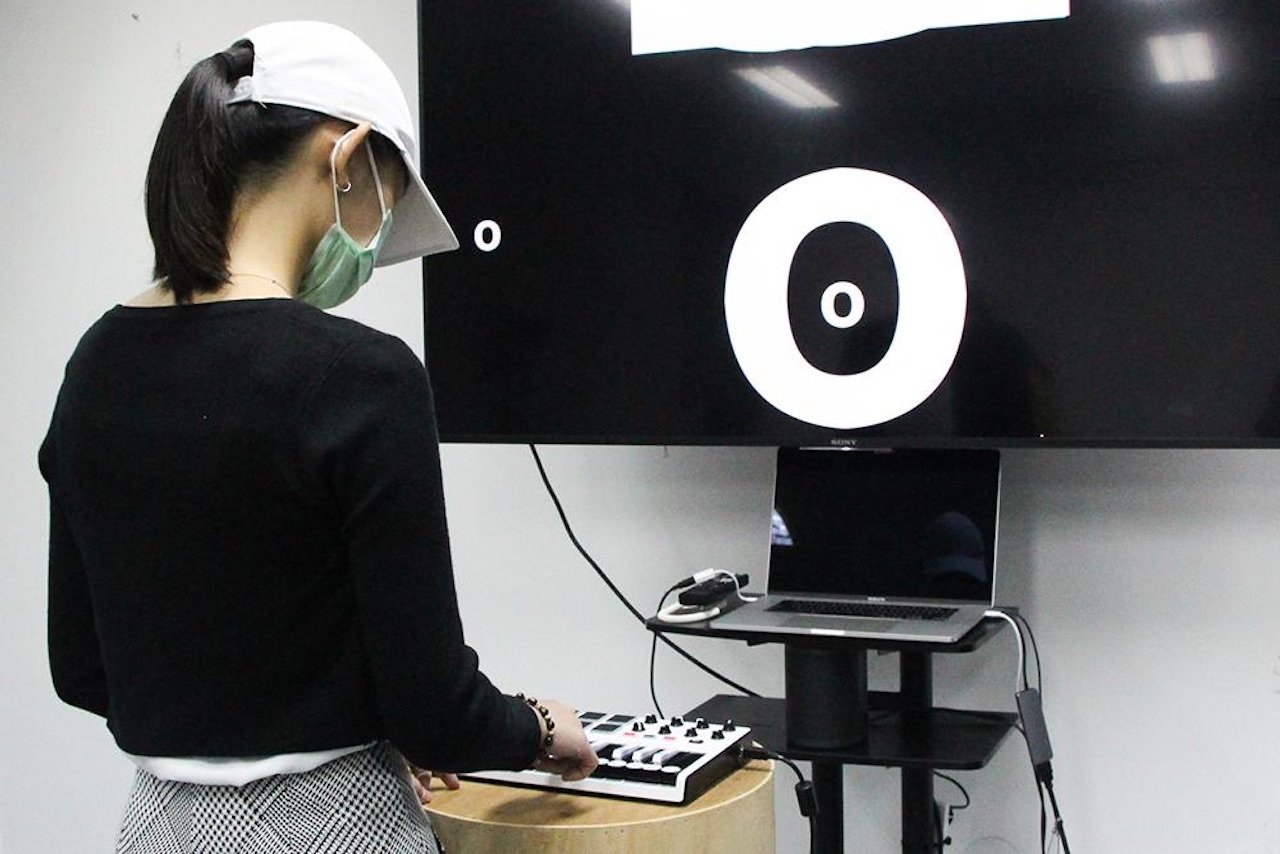
Closing notes, discussions and submission preparation.
Consultations, dissertation.
23–24
Semester 1
Tuesday Session
Dissertation consultations
B-DC 332
Graduation Project
Computation in Design
We all meet together.
Thursday Session
Roadmap to submission
The Prototype
Review slides from week 11.1, some questions to keep in mind:
→ what is the difference between an experiment and a prototype?
→ a prototype can be of low and high fidelity, at this point, which type of prototype-fidelity works best for you?
→ Presentation matters. Did you review the section where the documentation of prototypes is covered, how did others document their prototypes?
23–24
Semester 1
Summative Assessment
requirements
B-DC 332
Graduation Project
Computation in Design
→ Catalogue of Making
either as a single PDF (can be printed but digital version must be submitted) or website (link to be submitted)*
Practical Portfolio
Deliverable 1
The source files for your web-based deliverables will be required to be submitted in semester 2, you can leave a copy here
*
→ Prototype(s)
One or two prototypes and their documentation (format negotiated based on prototype)
Physical outcomes can be displayed at student’s desk and should be audio-visually documented in a digital format and submitted as a single PDF or website (preferred, link and website-files to be submitted)*
Deliverable 2
1/3
23–24
Semester 1
Summative Assessment
requirements
B-DC 332
Graduation Project
Computation in Design
Deliverable 3
1. Context
(background, rationale, key concepts)
2. Summary of precedents / influences
3. Summary of body of work
4. Statement (design statement / artist statement / problem statement / manifesto)
5. Next steps (design primer*, experiments, proposal for Sem 2)
Practical Portfolio
→ Overview Presentation
single PDF
structure and content for this presentation, see outlined on the right
2/3
Your design primer should provide a concise introduction to your planned study, research and design activities. Ideally, it will cover objectives, approaches and methods applicable to your practical work and serve as a starting point for the work undertaken from here on. Your design primer may include key principles of aesthetics, making, usability and problem solving and provides a foundational understanding for the further exploration you will undertake in semester 2.
*
23–24
Semester 1
Summative Assessment
requirements
B-DC 332
Graduation Project
Computation in Design
You chose one of the following formats to keep your weekly updates as a Creative Process Journal: Website, Publication, or Google Docs document.
For your CPJ submission, make sure it is updated and complete for each week of the semester, remove all placeholders and replace with your own content.
→ up-to-date weekly updates
→ Repository (part of your website CPJ under repository)
CPJ
3/3
folder containing HTML, CSS and JS (if applicable) files for websites with considerations for basic web design and development
PDF (compulsory) and printed copy (optional) for physical multipage documents with considerations for basic page design and production
URL for Google Docs
for online multipage documents with consideration for online document features and capabilities
One of the following options
23–24
Semester 1
14, 15
22–23
22–23
B-DC 332
Graduation Project
Computation in Design
Semester 1
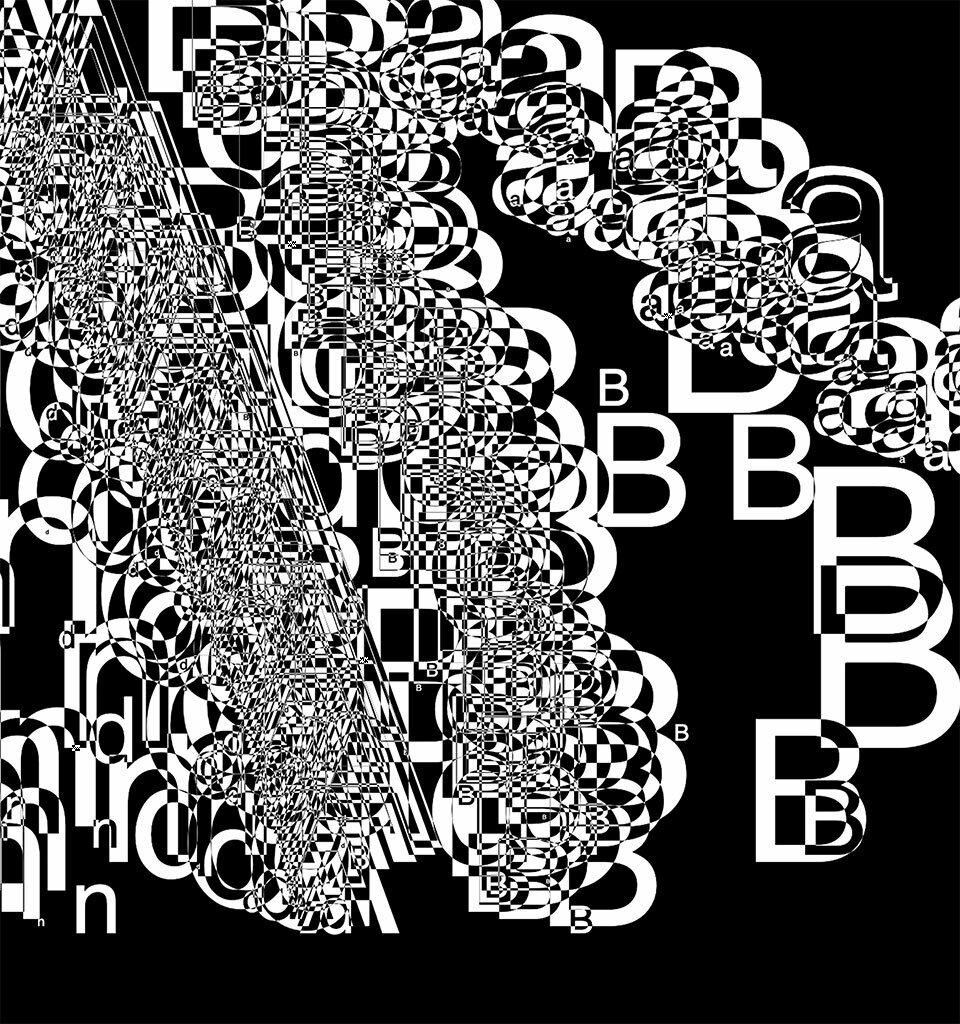
Independent Study
cid-atelier-2425-1-ex
By Andreas Schlegel
cid-atelier-2425-1-ex
- 608







